This timeline is the result of researching the origins of digital paint and draw software, and the tools that were developed to allow for hand manipulation (versus plotter drawn) drawing and painting - the mouse, light pen & drawing tablet. If we look at the software that has become commonplace today (such as adobe photoshop), which allows for painting, animation and photo manipulation in one, we can trace the roots of this software to the University and Corporate Labs that housed large computers with advanced capabilities for their time - MIT Lincoln Labs & Radiation Labs, DARPA & the Augmented Research Centre (ARC), Bell Labs, NYIT’s Computer Graphics Lab, Xerox Palo Alto Research Centre (Xerox PARC), NASA’s Jet Propulsion Labs (JPL). The artistic collaborations that grew out of these labs fueled the advent of Computer Graphics, Computer Art and Video Art from the 1960's to the 1990's.
This visual timeline starts by tracing the paint systems, frame buffers, and graphic user interfaces created out of these labs, with a focus on the first paint/draw software and the various drawing tools. I am interested in how the larger corporate, and often Military Funded laboratories, effected the dawn of the personal computer and the introduction of the personal computer to the home. This timeline continues through the 1980’s, with a focus on the software and hardware that was developed for the home market from late 1970's to the 1990's.
1959-1970 :
academic/military collaboration: the roots of digital paint and draw

1959 First Light pen - MIT
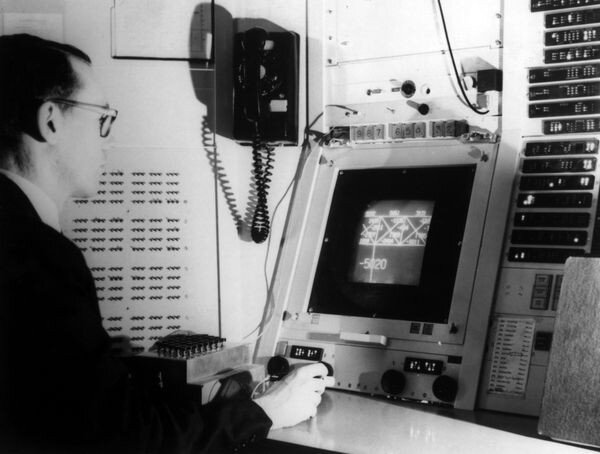
1962 Sketchpad System, Ivan Sutherland MIT (Lincoln TX-2) First truly interactive vector drawing/computer graphics system
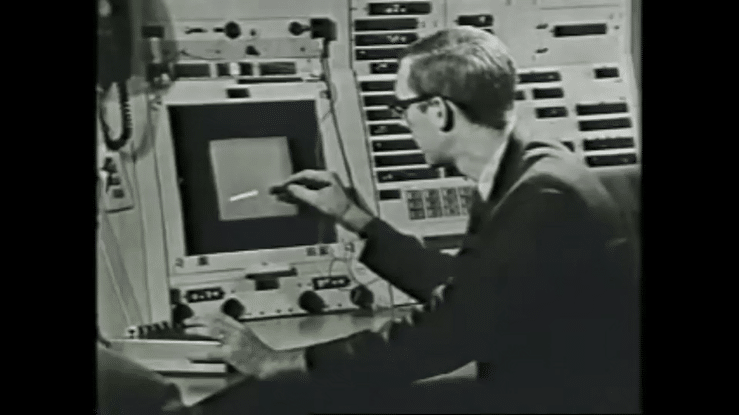
1962 Sketchpad System Ivan Sutherland MIT (Lincoln TX-2)
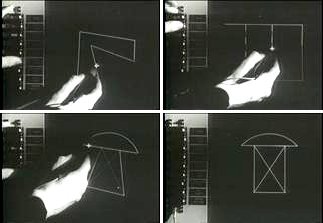
1962 Sketchpad System
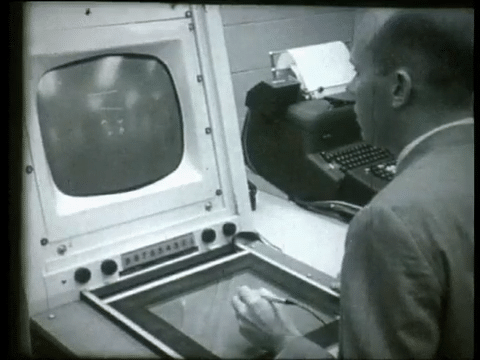
Lincoln Lab's TX-2
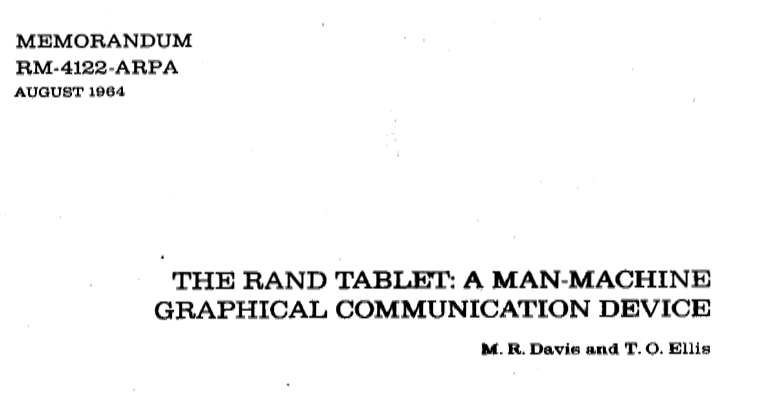

1964 Rand Tablet (Data Tablet) and the GRAiL Graphic Input Language Lincoln Labs (MIT) and Rand Corporation (Santa Monica)

1964 Rand Tablet
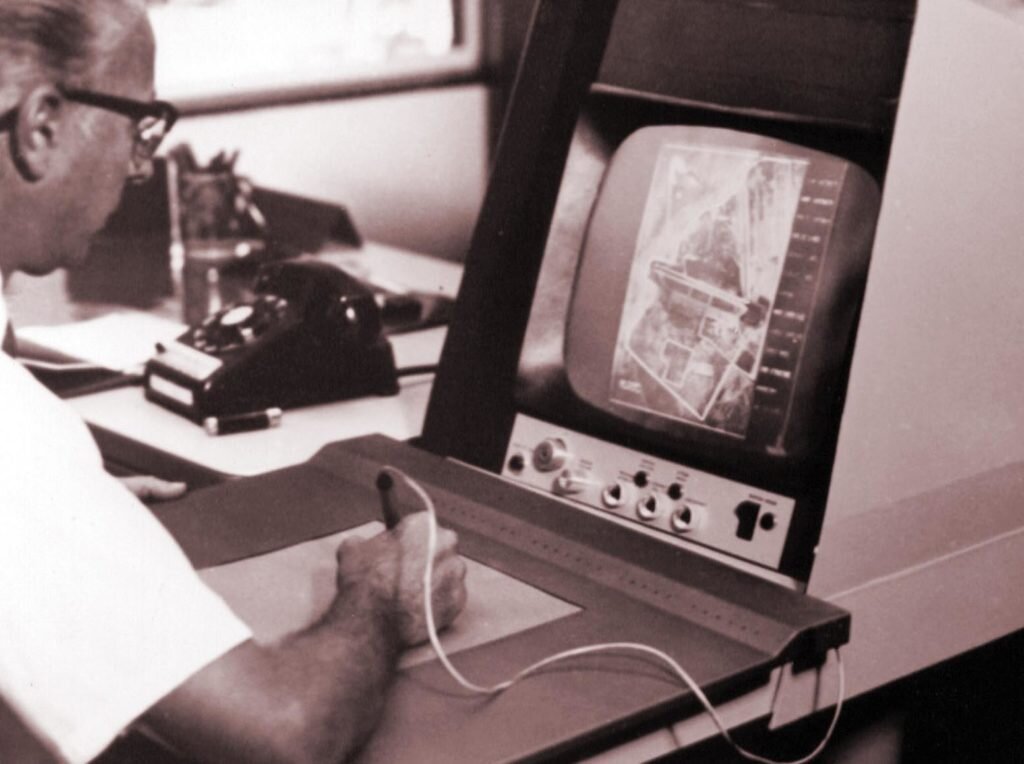
1964 Rand Tablet
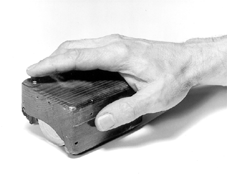
1964 Mouse invented – Douglas Engelbart ARC (Augmented Research Centre)
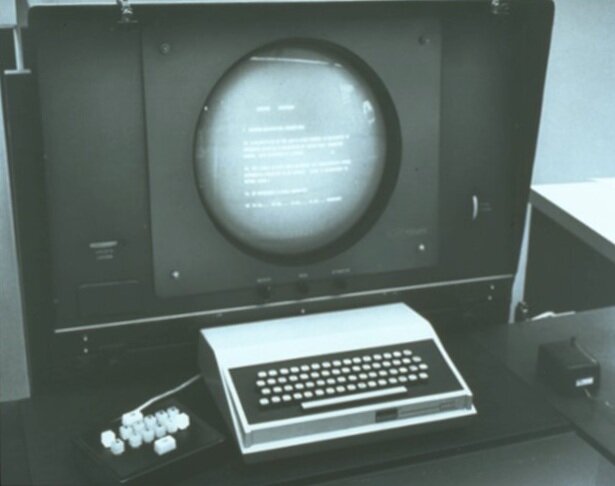
1964 ARC work station with first mouse in use
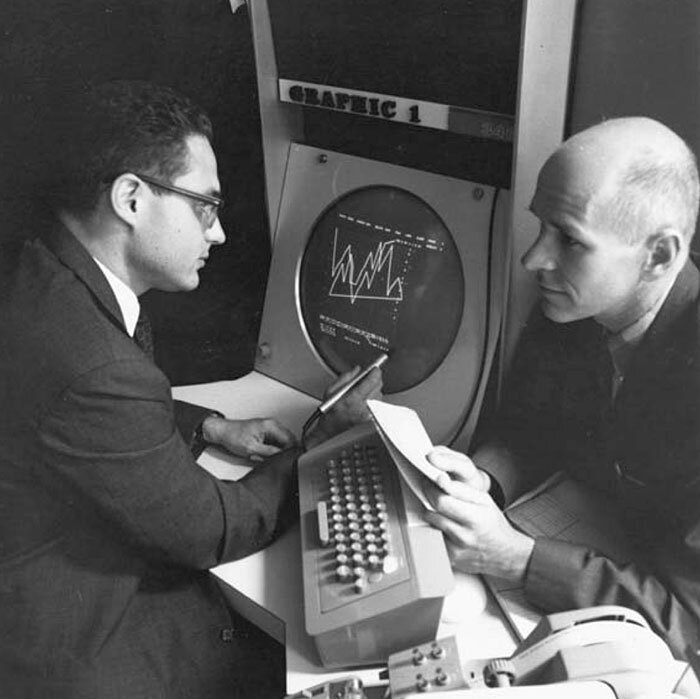
1965 Graphic 1 at Bell Lab. pictured in image: Max Mathews and Rosler

1965 Graphic1 at Bell Labs
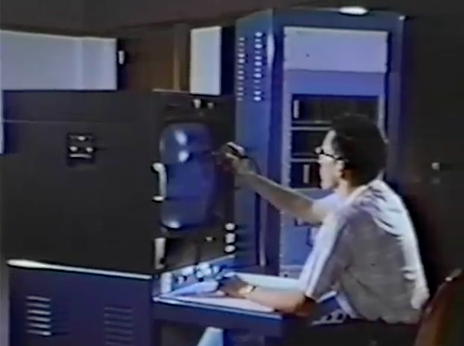
1968 The Tricolour Cartograph William J Kubitz. University of Illinois
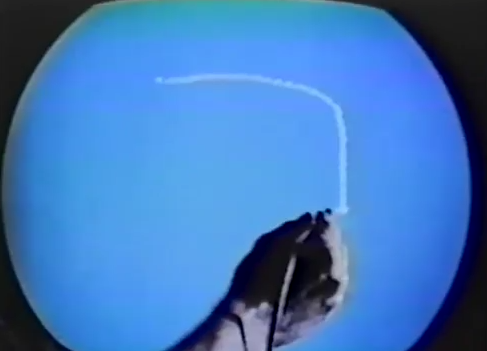
The Tricolour Cartograph

1968-69 Doug Englebart ARC workstation

1968 NRC mouse

1969 GENESYS System & Rand Tablet Lincoln Labs
Sketchpad Lincoln Labs (1963 )
Sketchpad was a computer program written by Ivan Sutherland (for the Lincoln TX2) in 1963 in the course of his PhD thesis, for which he received the Turing Award in 1988, and the Kyoto Prize in 2012. It pioneered the way for human–computer interaction (HCI). Sketchpad is considered to be the ancestor of modern computer-aided design (CAD) programs as well as a major breakthrough in the development of computer graphics in general. For example, the graphical user interface (GUI) was derived from Sketchpad as well as modern object-oriented programming. Ivan Sutherland demonstrated with it that computer graphics could be used for both artistic and technical purposes in addition to showing a novel method of human–computer interaction.
Lincoln Lab TX2 (1965)
MIT's Lincoln Lab, demonstrating a pen-based system for specifying electrical circuits. Not only could one use the Rand Tablet's stylus to draw where the wires ran, but one could control the system by drawing special patterns with the pen. One example - still used today on many pen-based systems, such as the Tablet PC, is deleting something by scribbling over top of it.
Graphic 1 - Bell Labs (1965)
A stylus based graphical display system.
The Graphic 1 was a "remote graphical display console system" created by William Ninke at Bell Laboratories in 1965. It was a large console containing, among other things, a small control computer (the DEC PDP-5) and, among other things, light pen and trackball inputs. This console was connected to a IBM 7094 mainframe and a Stromberg-Carlson microfilm printer in another room. The Graphic 1 system was also used by Max Mathews to program computer music using his MUSIC (N) language, but for a graphical interface — Mathews preferred the light pen. Two years later, Ninke improved the system, and rechristened it the Graphic 2. Footage Courtesy of AT&T Archives and History Center, Warren, NJ
Tricolor Cartograph (1968)
W.J. Kubitz and W.J. Poppelbaum created the Tricolor Cartograph, which was a display system with automatic coloring capabilities. The University of Illinois
ARC workstation (1968)
Doug Englebart demonstrates the workstation at the Augemented Research Centre, this excerpt focuses on the devices - mouse & keyboard.
GENYSYS demo (1969)
Demo of the GENESYS System at Lincoln labs, utilizing the TX-2 computer. Built by Ron Baecker as part of his 1969 PhD thesis. This demo uses the Rand tablet to draw images, which are used in some of the first examples of keyframe animation and tweening.
1971-1979 :
Paint systems, frame buffers, artistic/corporate collaboration, and the birth of the personal home computer.
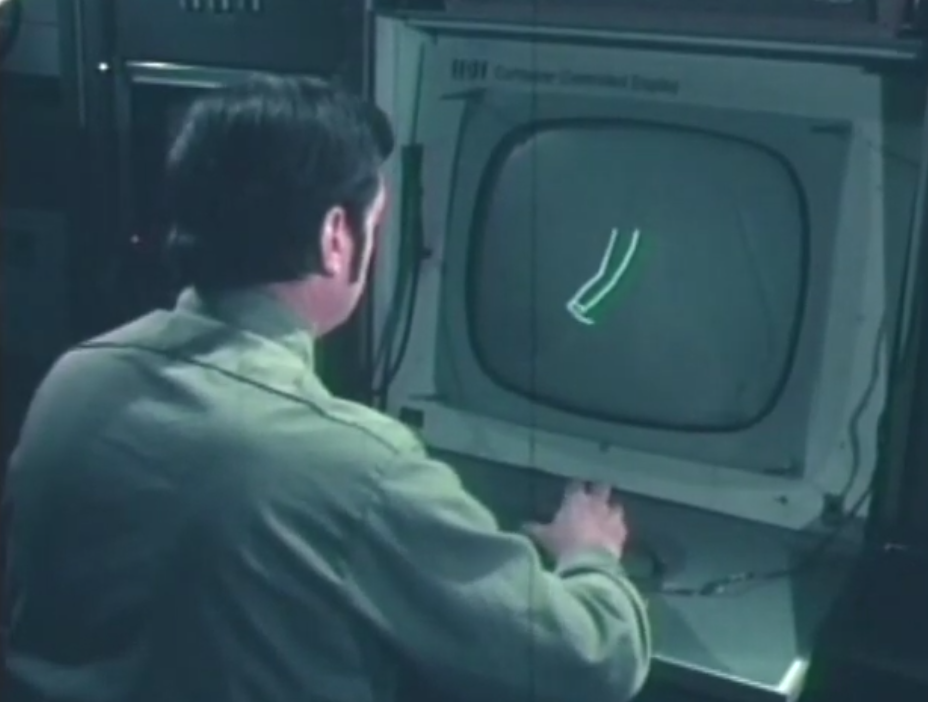
1971 NRC system Ottawa

1971 NRC system Ottawa
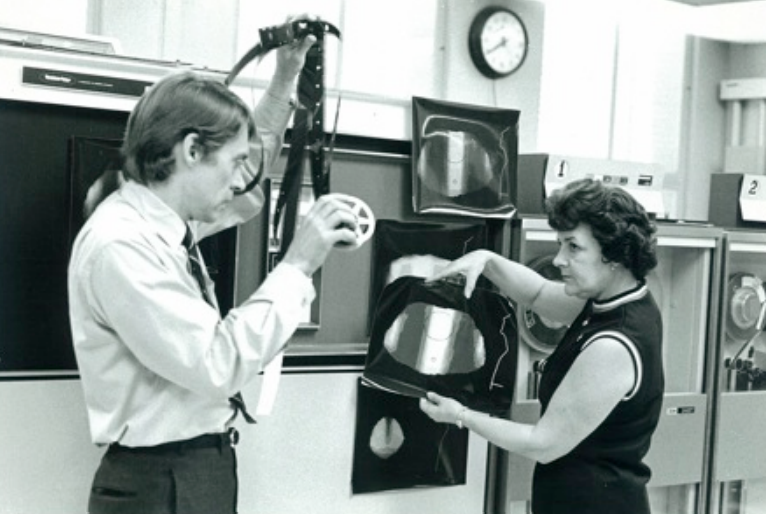
1971 Ken Knowlton and Ruth L. Sommers at Bell Labs with the Stromberg Datagraphix SD-4360
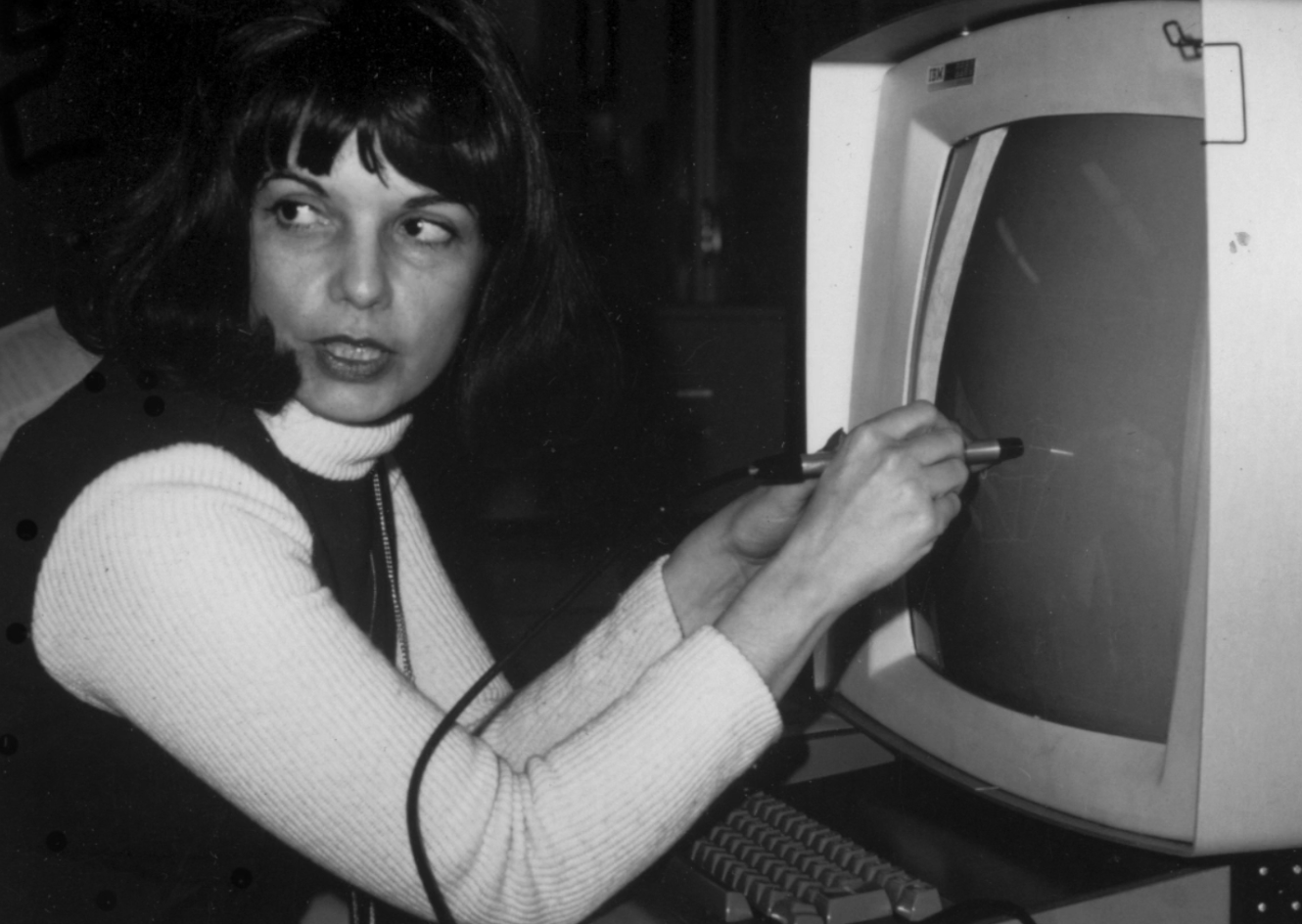
Lillian Schwartz at Bell Labs
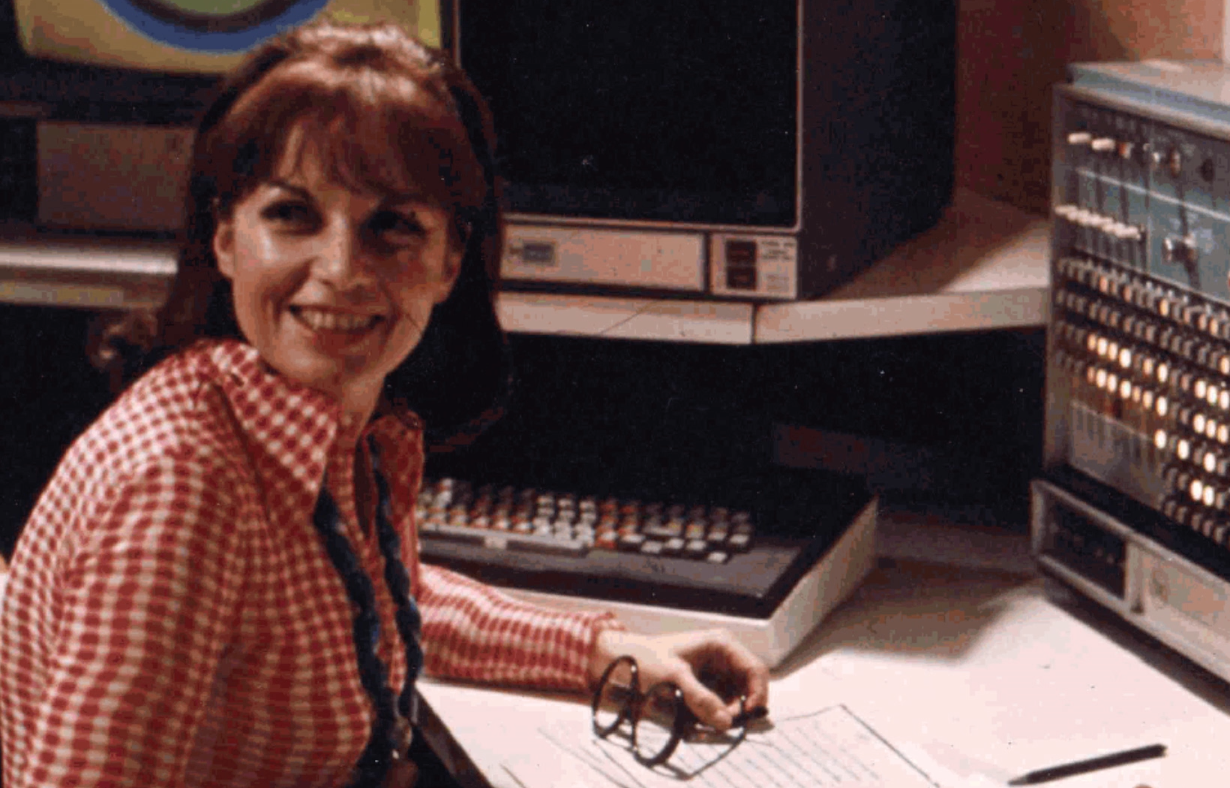
Lillian Schwartz at Bell Labs

1972 SuperPaint by Dick Shoup

1972 SuperPaint by Dick Shoup

1972/73 Data General Nova 800 and digitizer used for Shoup's 8 bit colour frame buffer SuperPaint
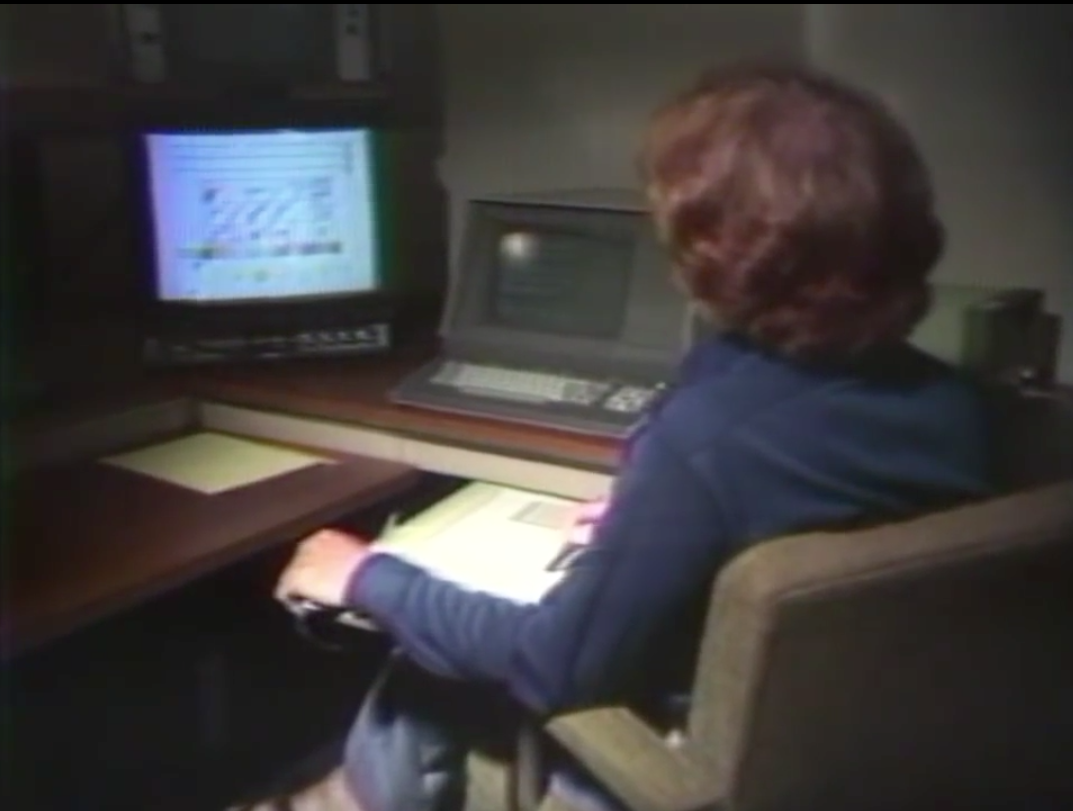
SuperPaint by Dick Shoup (with Alvy Ray Smith) Xerox Parc (Palo Alto)
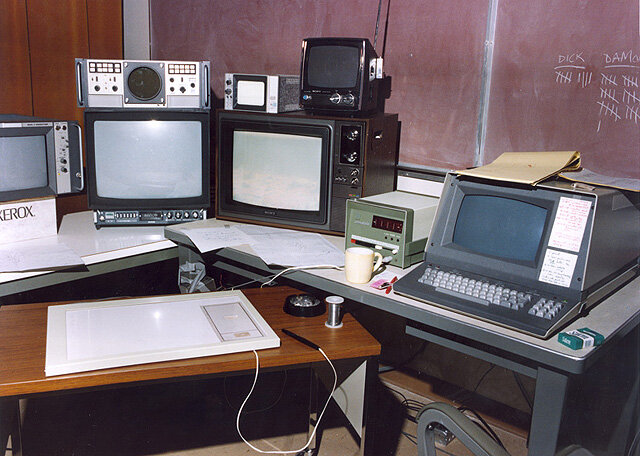
1974/75 Xerox Parc Superpaint user interface and drawing tablet
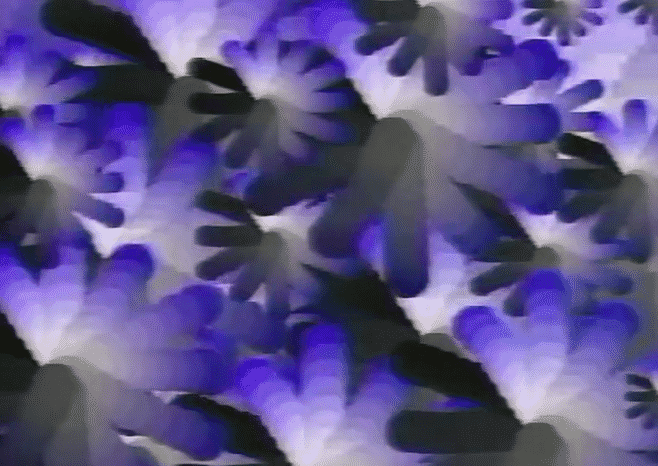
1974 Vidbits excerpt created by Alvy Ray Smith using SuperPaint
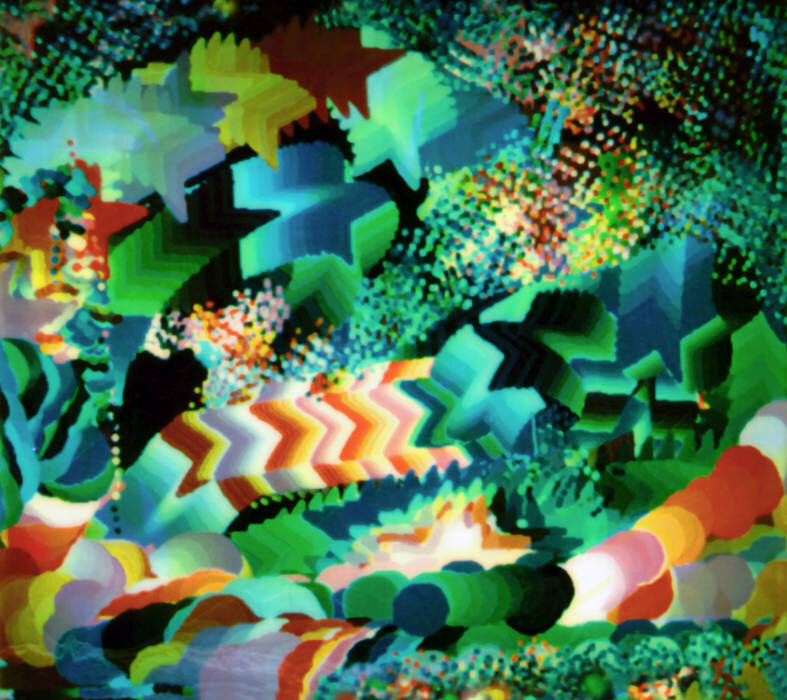
1975 Superpaint image by David Em Xerox Parc

1975 (-1977) Laurie Spiegel at Bell Labs where she created her Drawing/Paint program in Fortran

Laurie Spiegel at Bell Labs
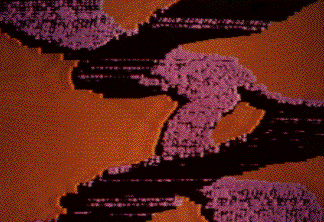
1974 -76 Xerograph Images 1974–76 Laurie Speigel using a RAND tablet and draw/paint program. Bell Labs
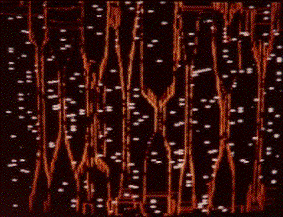
1974 -76 Xerograph Images 1974–76 Laurie Speigel using a RAND tablet and draw/paint program. Bell Labs
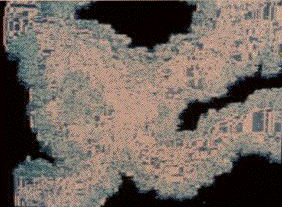
1974 Xerograph Images 1974–76 Laurie Speigel using a RAND tablet and draw/paint program. Bell Labs
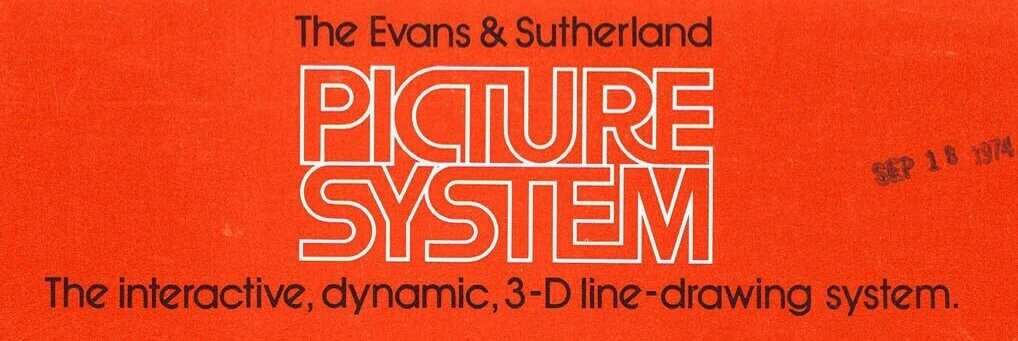
1974 Picture System. Evans & Sutherland
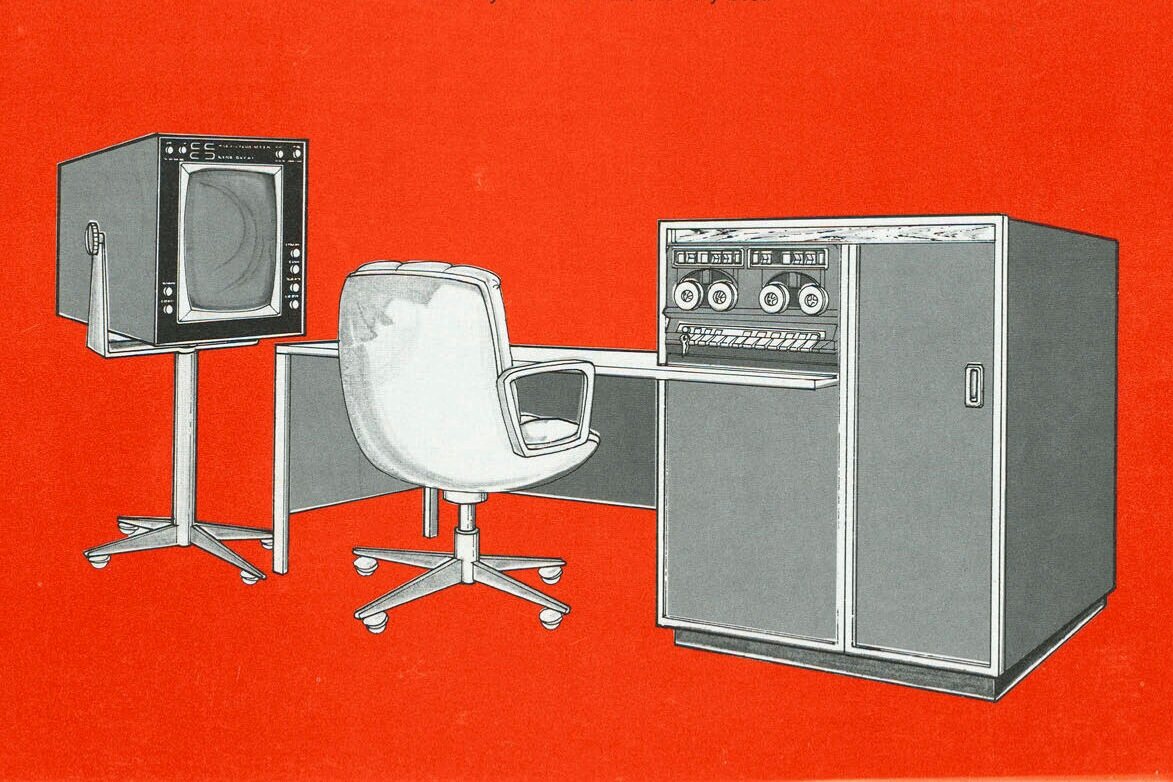
1974 Picture System Evans & Sutherland
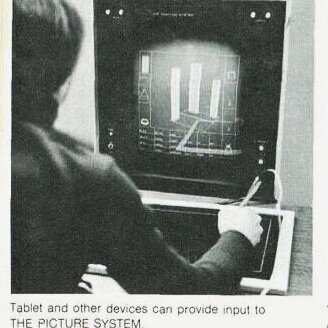
1974 Picture System with tablet Evans & Sutherland

1975 (to 1977) Paint and Paint3 Alvy Ray Smith. NYIT
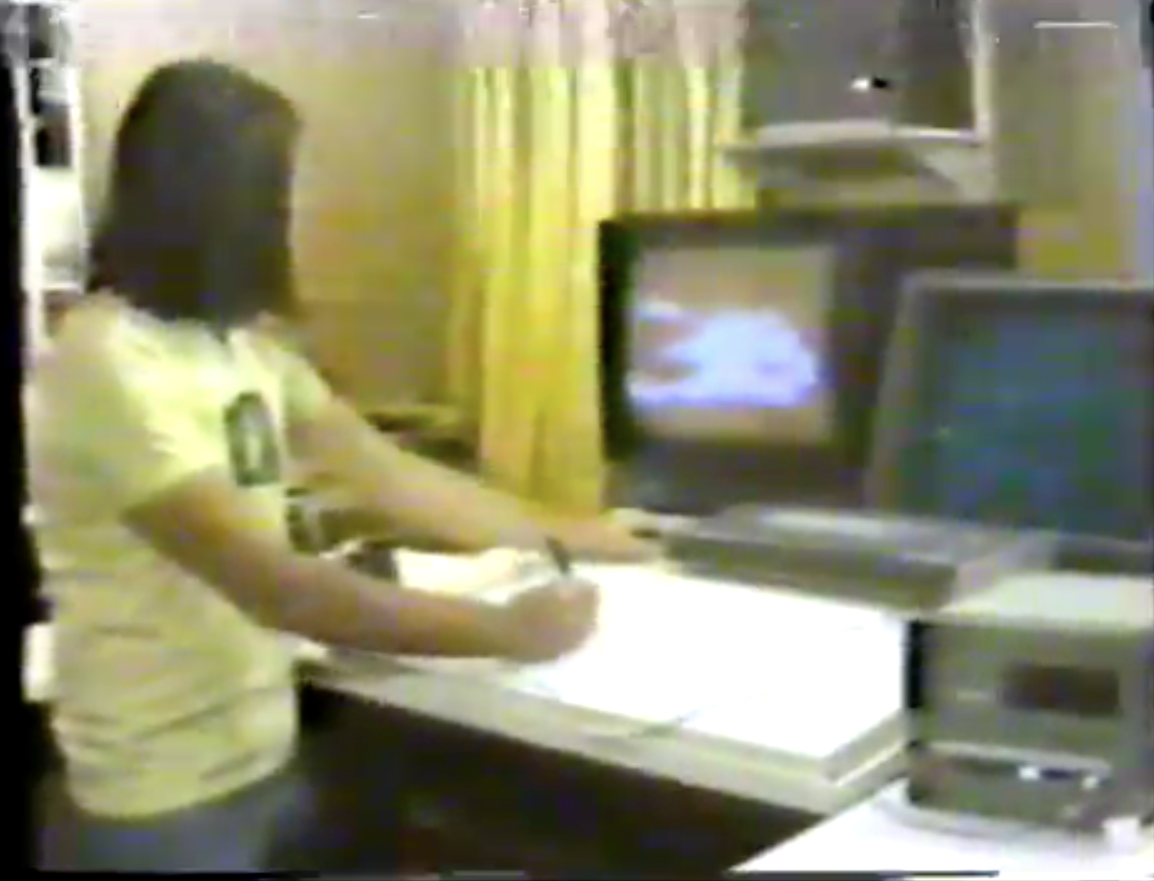
1975 (to 1977) Paint and Paint3 Alvy Ray Smith. NYIT Computer Graphics Lab
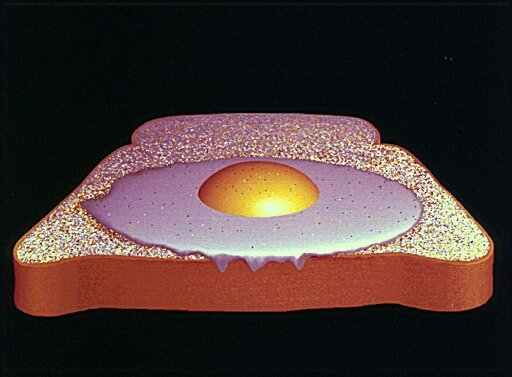
1975 Egg on Toast created using Paint Alvy Ray Smith
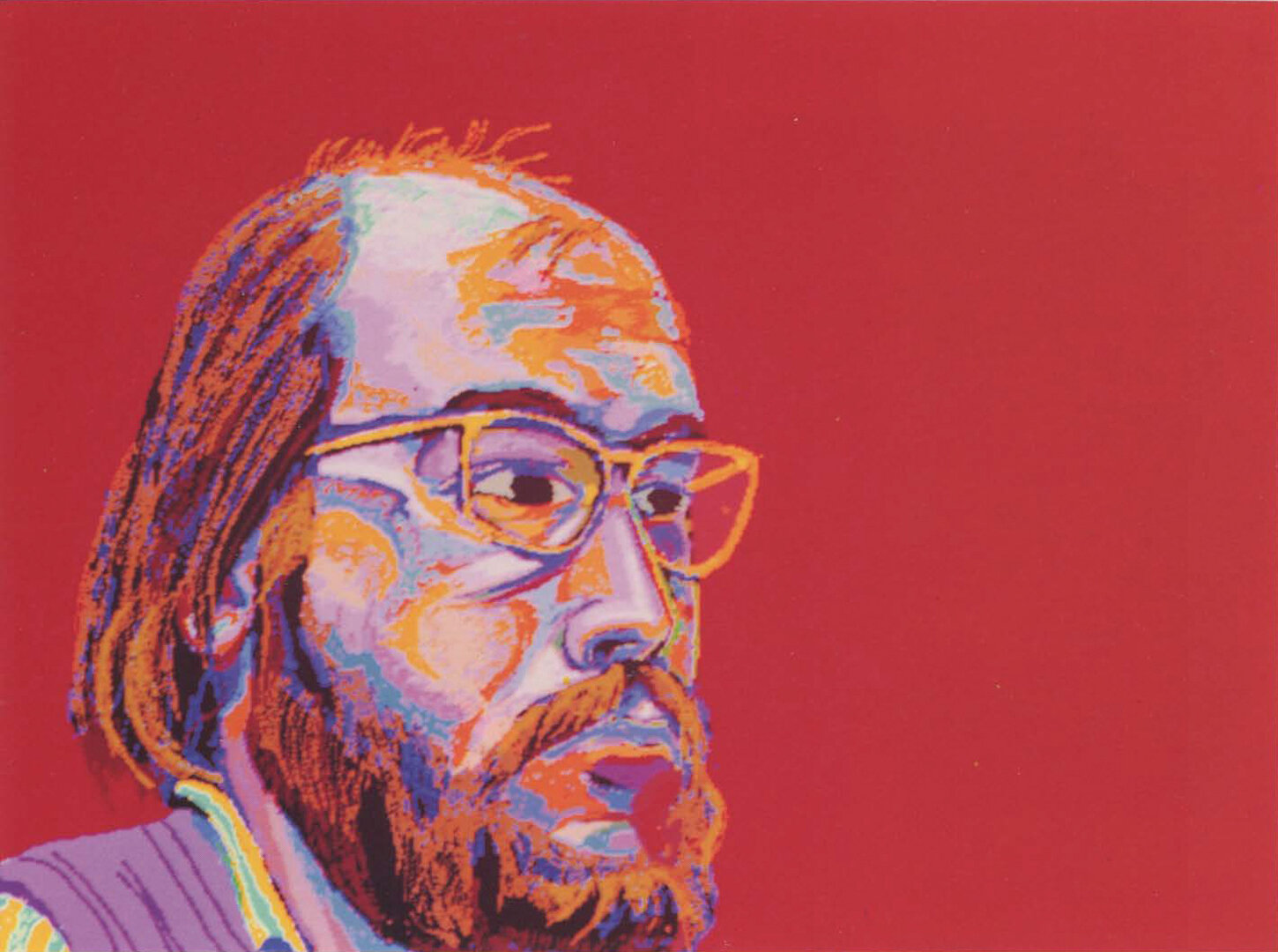
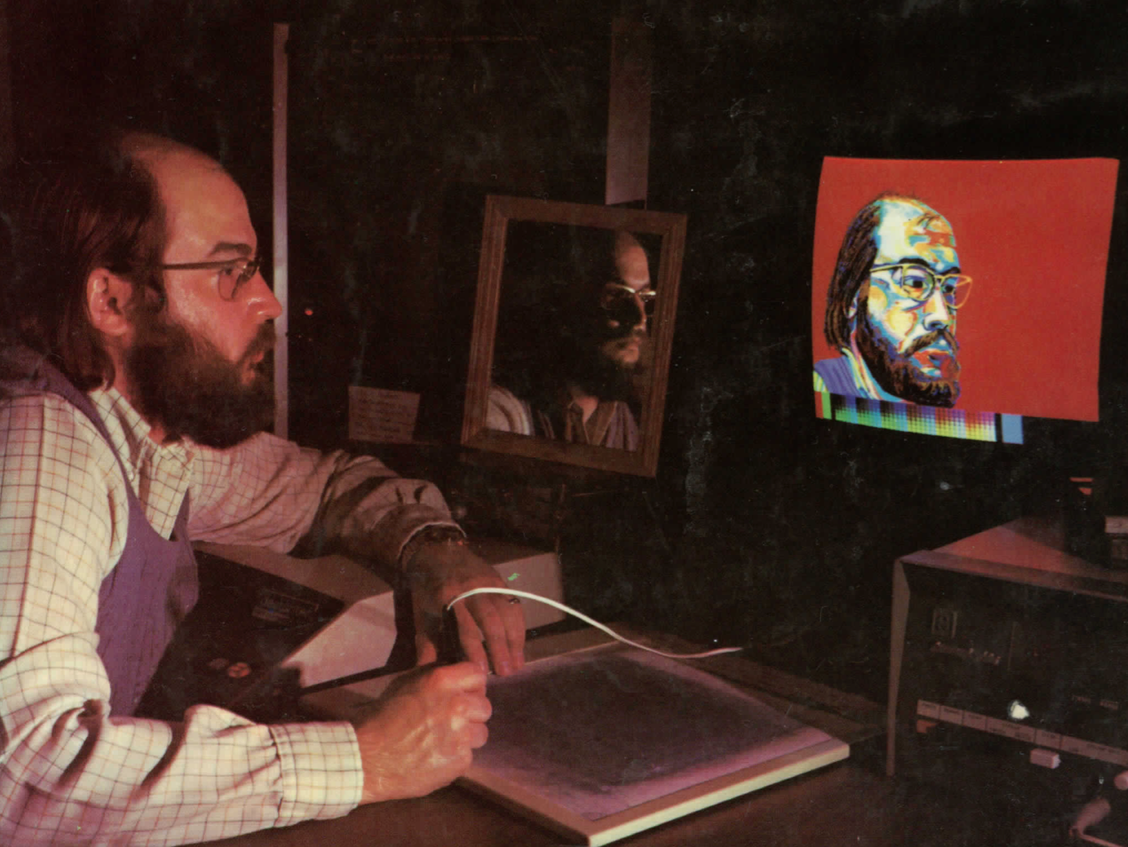
1975 Duane Palyka self-portrait at the University of Utah Computer Science Department. Palyka is using a paint program called Crayon, written in Fortran by Jim Blinn. The program ran under the DOS operating system on a DEC PDP-11/45 using the first Evans & Sutherland frame buffer.
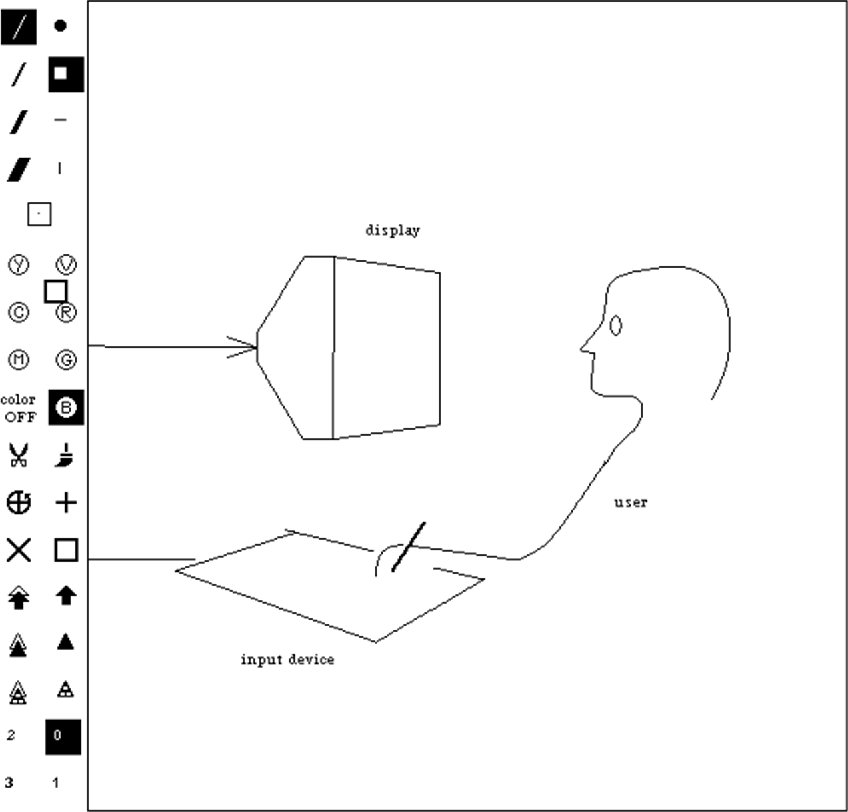
1975 Draw for the Alto. Xerox Parc
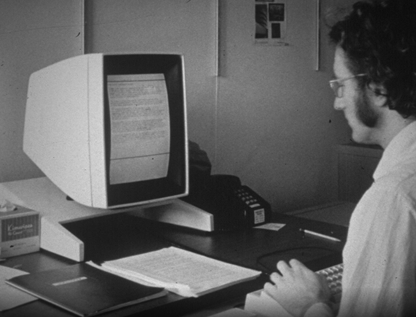
1975 Xerox Parc's Alto
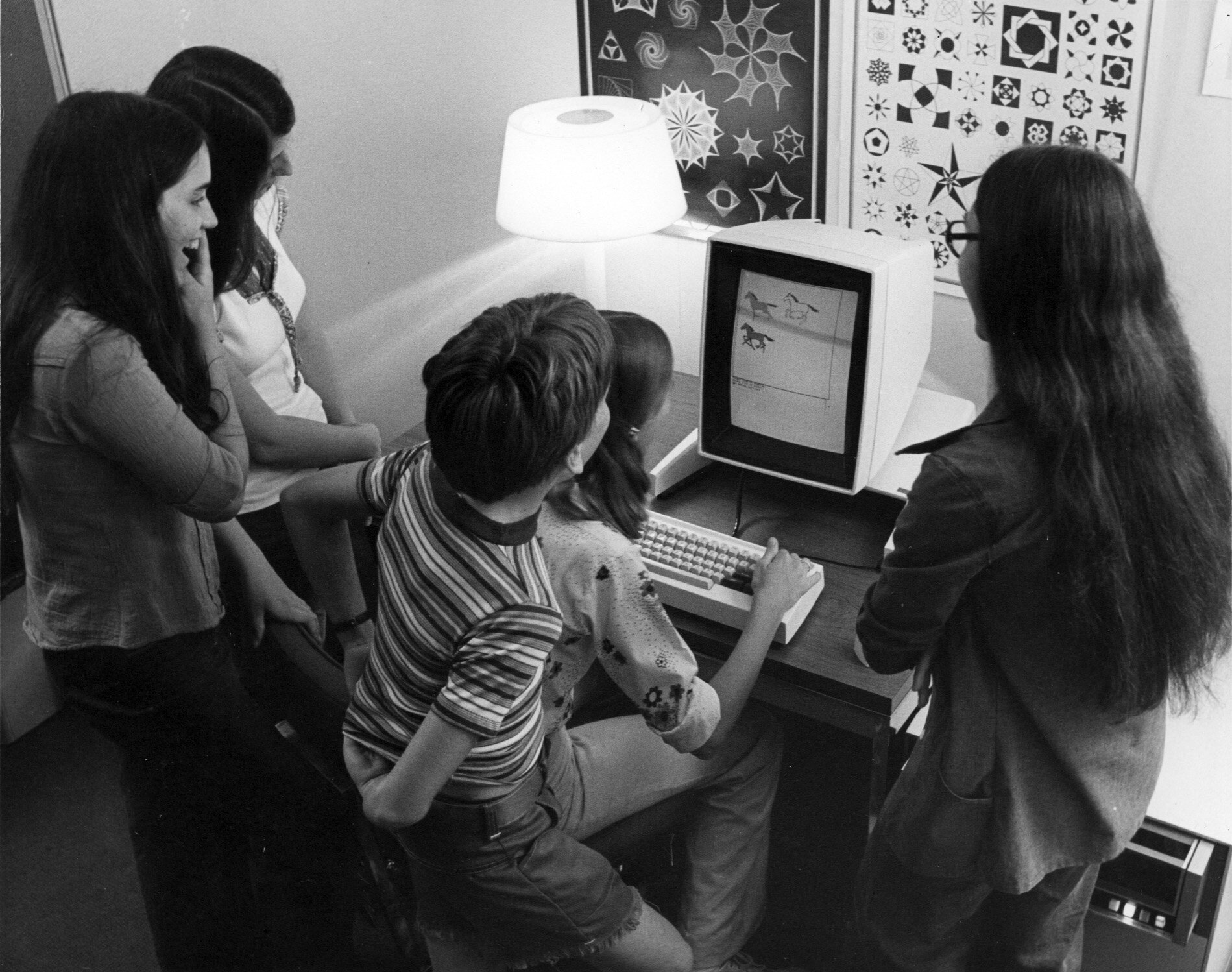
Xerox Parc's Alto
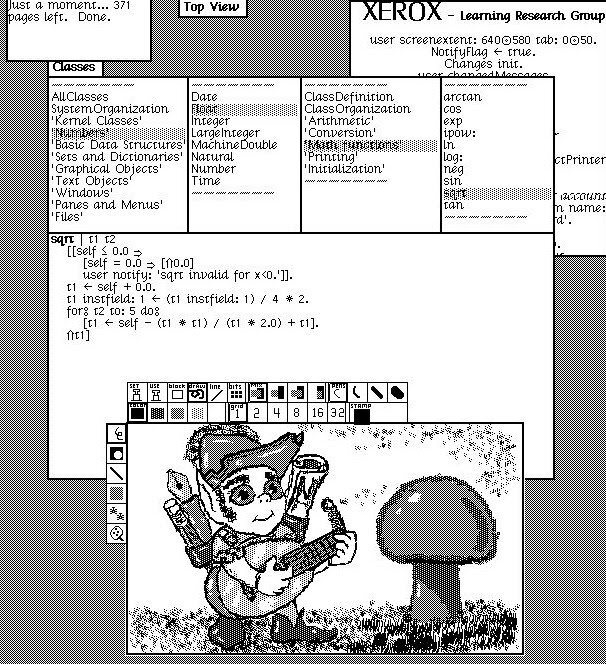
"Draw" on the Xerox PARC Alto
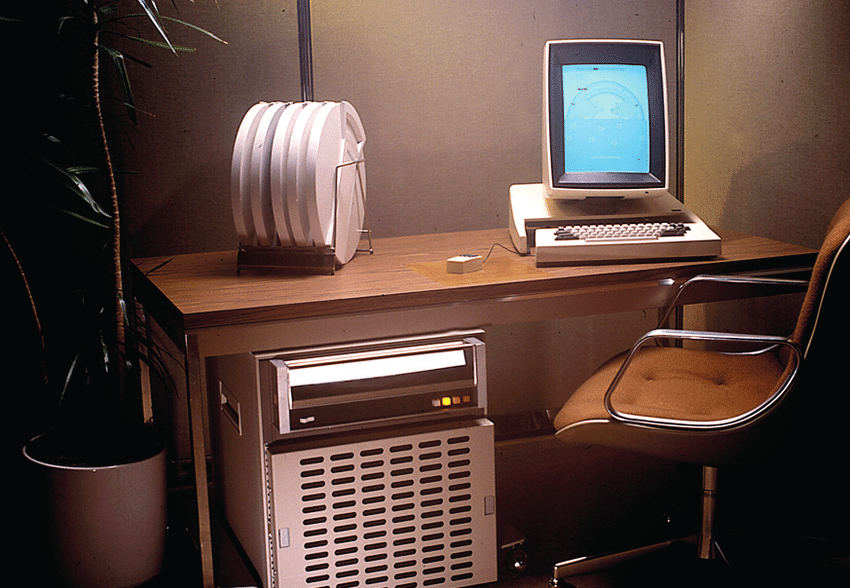
1975 Xerox Parc's Alto
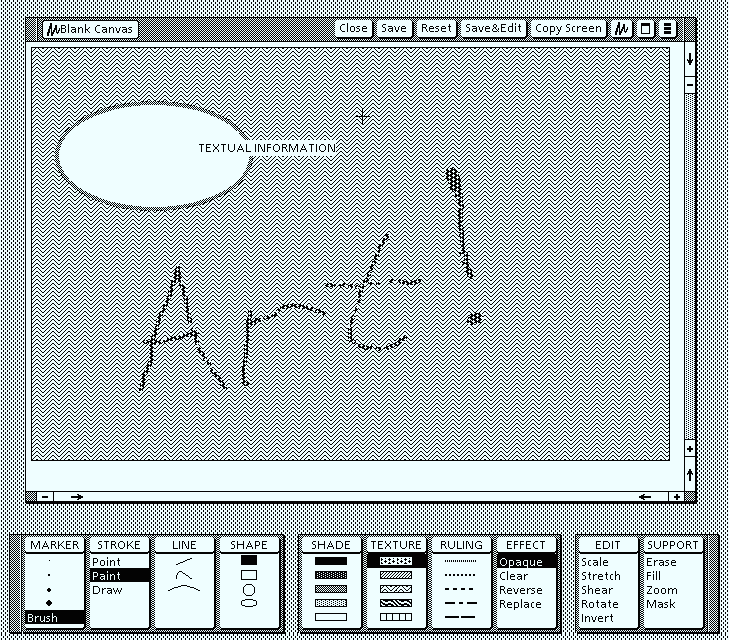
1975 Draw developed for the Xerox Star. Not commercially released until 1981
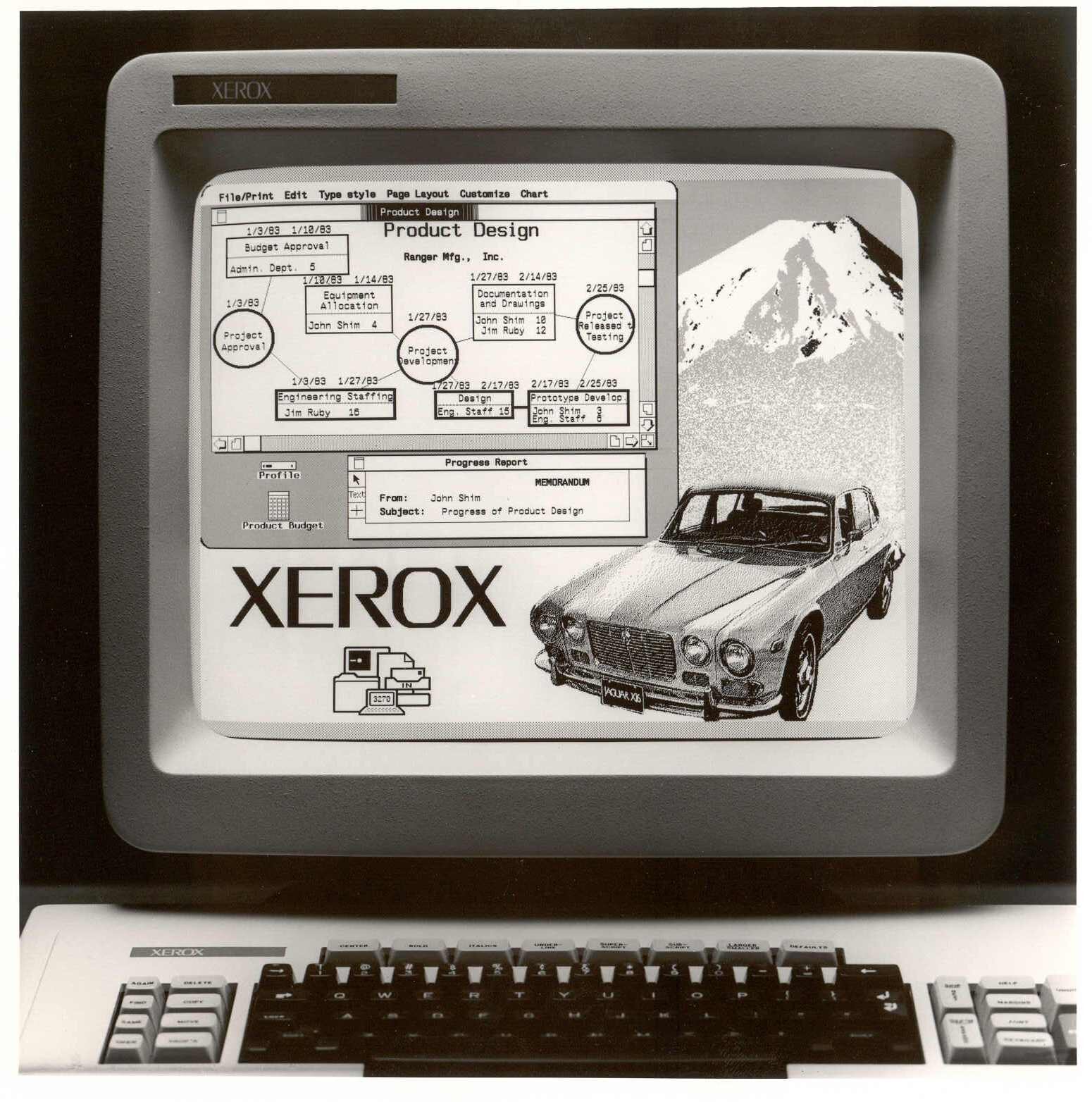
Xerox Star
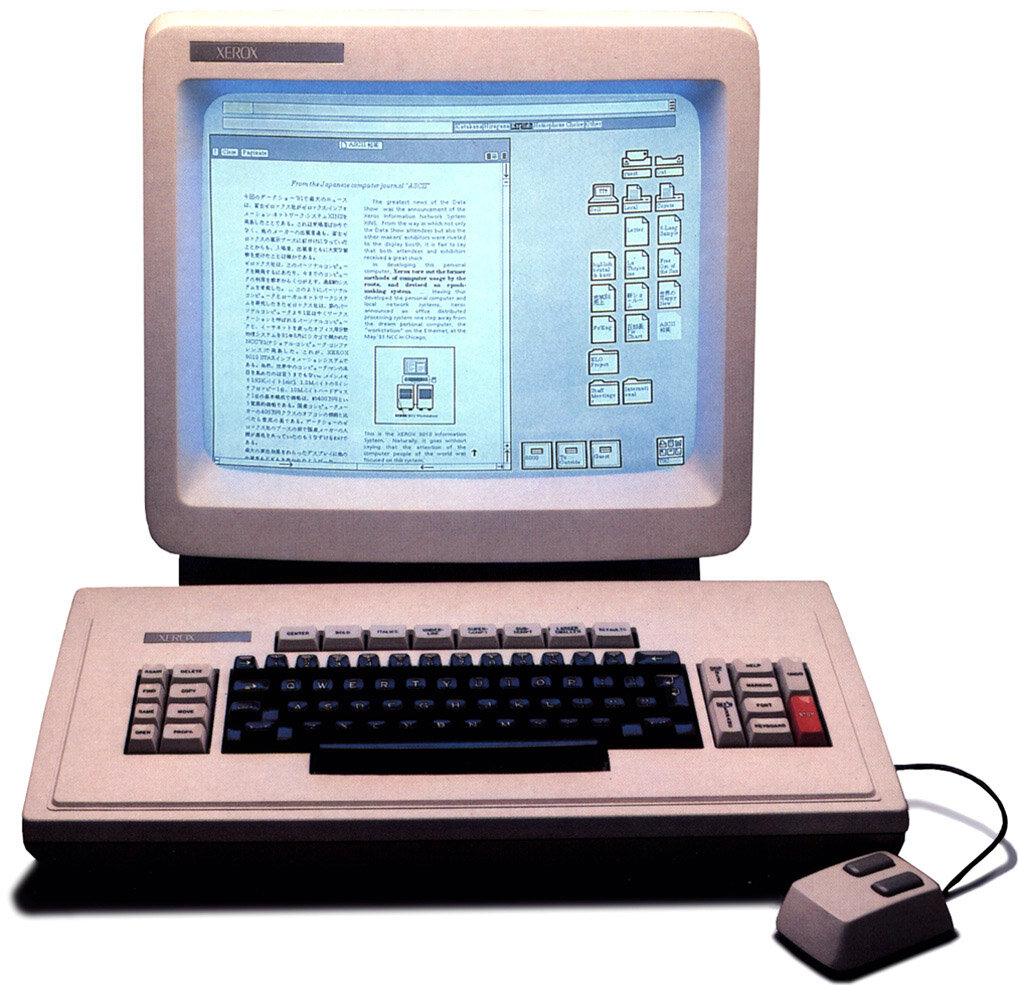
Xerox Star (Commercial Released in 1981)

1976 Sol Computer Released. Lee Felsenstien
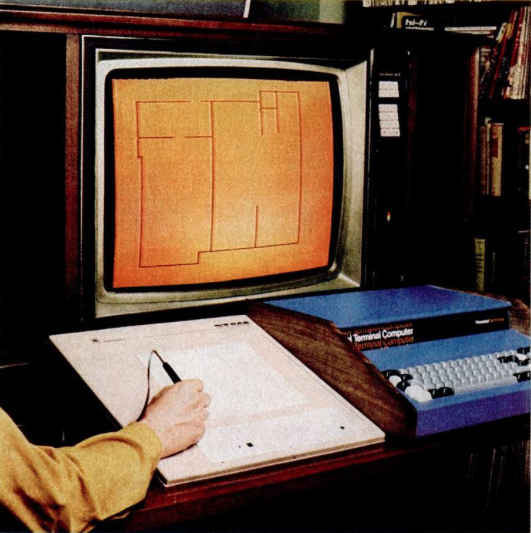
Summographics Bit Pad 1 drawing tablet used with a Sol computer

1977 Apple II
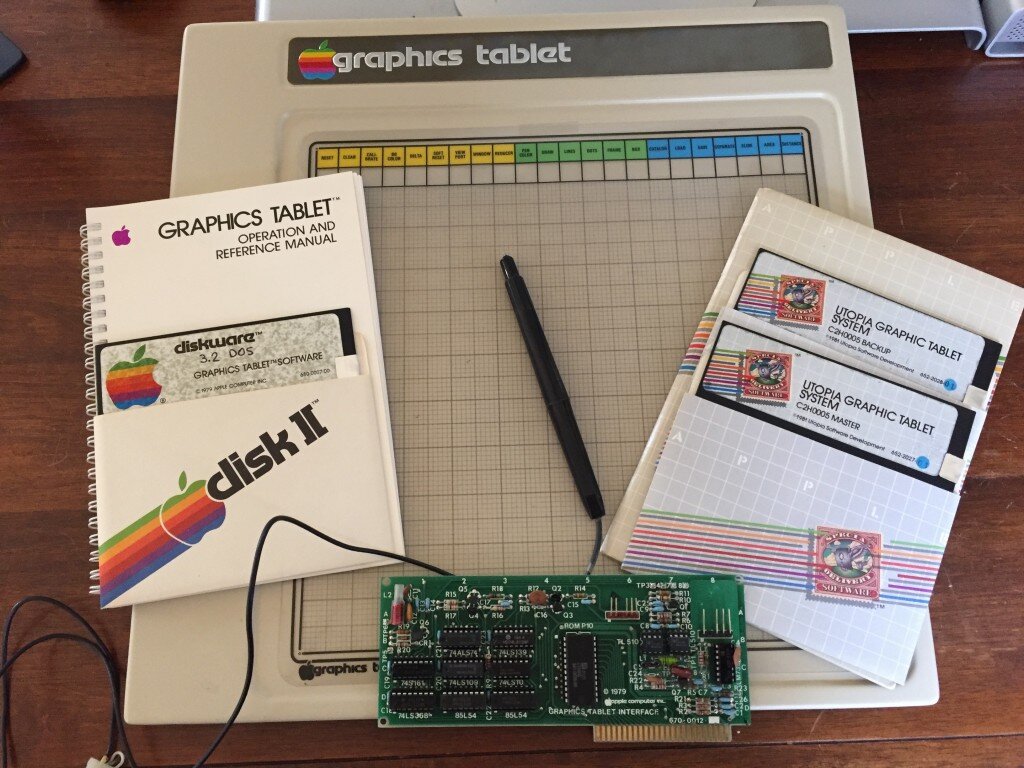
1979 apple graphics tablet
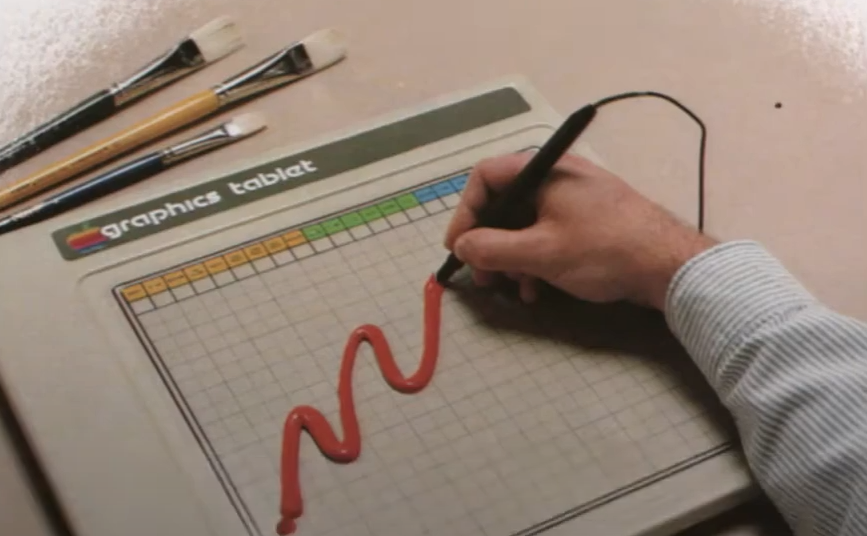
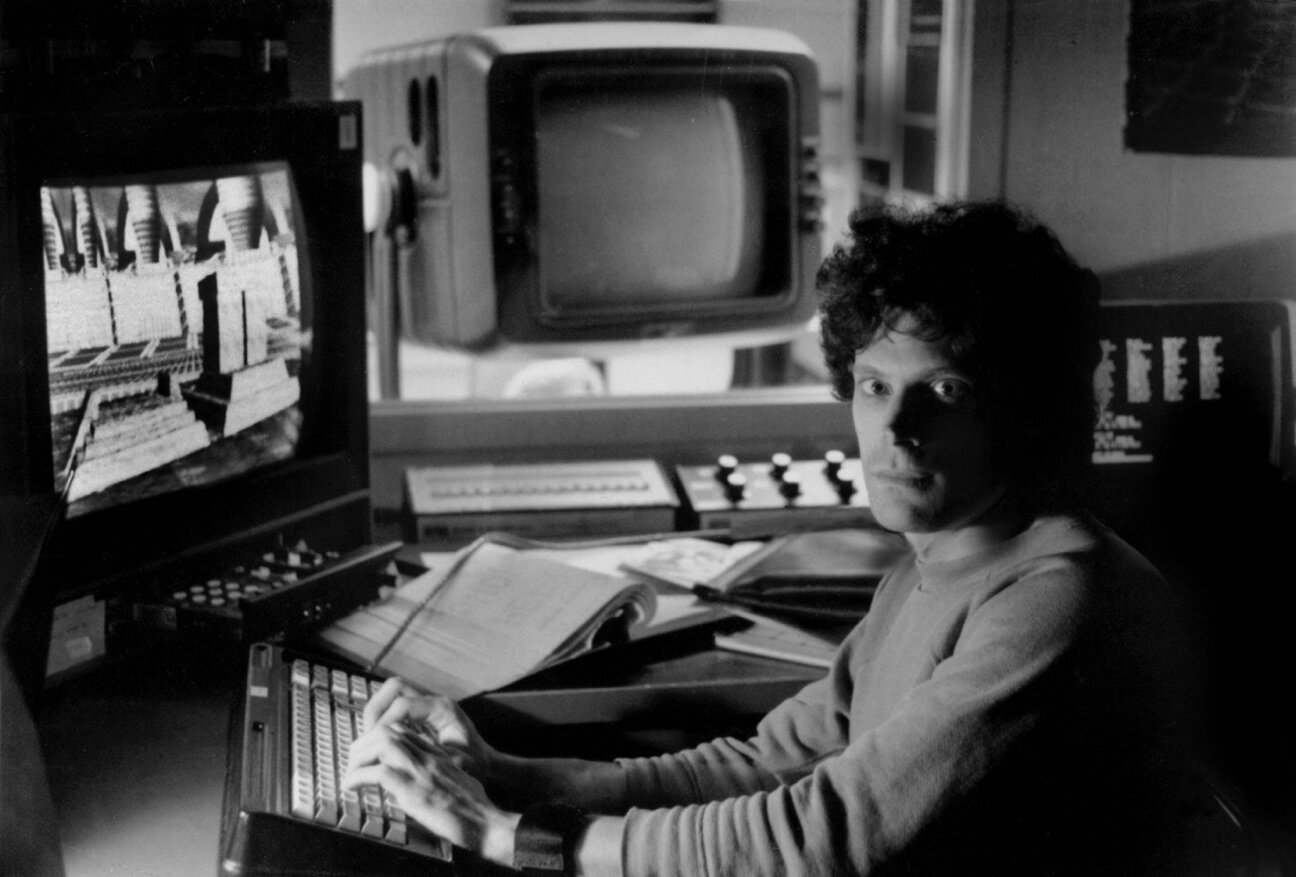
David Em at Nasa's JPL

by David Em created at JPL
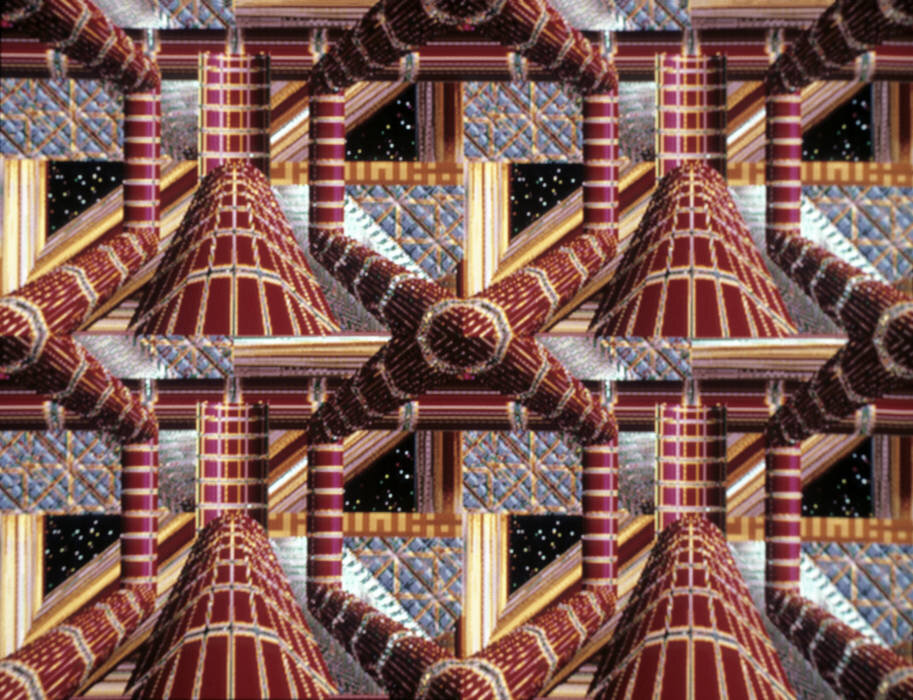
by David Em drawn at JPL

1979 Atari 400 introduced
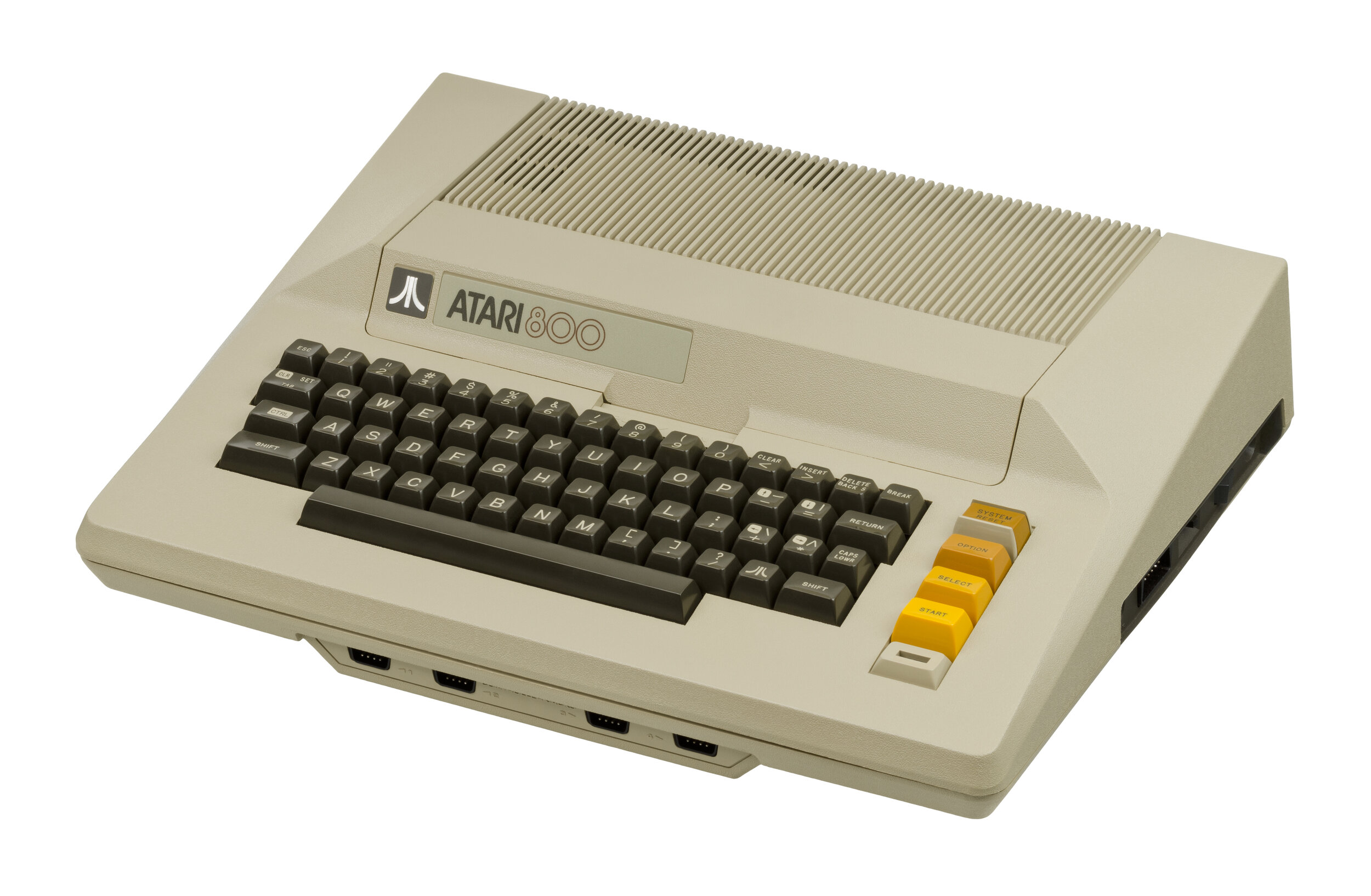
1979 Atari 800 introduced
NRC (1971)
This is a film produced in 1971 by the National Research Council of Canada, in Ottawa. It demonstrates one of the first interactive computer systems that allowed for hand manipulated drawings using a mouse like device, and also allowed for key frame animation, which can be seen in the NFB films Metadata (1971) & Hunger (1974), which also explore some of the first morphing/tweening in computer animation. The system was developed by Marceli Wein and Nestor Burtnyk.
SuperPaint (1972)
Alvy Ray Smith narrates over footage of Dick Shoup using SuperPaint, which was developed at Xerox Parc.
Vidbits - created using SuperPaint (1974)
Alvy Ray Smith created Vidbits on Dick Shoups SuperPaint videographics system using software written by Shoup or added to the system himself as needed. It is a collection of artistic experiments using the worlds first complete 256-colour (8 bits per pixel) raster graphics system video in, image manipulation and creation software, video out. Animation was often achieved by recording directly to videotape as a program executed typically using SuperPaints colormap feature that reassigned colours to pixel values in real time, under interactive control with a stylus on a tablet. The pixel pattern was typically created with one of Smiths software hacks. Another animation method used frame-by-frame recording to a videodisk, then transfer of a completed sequence to videotape. Smith used Vidbits for his entry into New York Citys avant-garde video art scene in the 1970s.
Video Easel (1979)
Documentation of Video Easel, an early drawing/video cartridge for the first Atari personal computers - Atari 400, 800.
1980-1983 :
The personal computer boom, and the beginning of the paint and draw software boom.
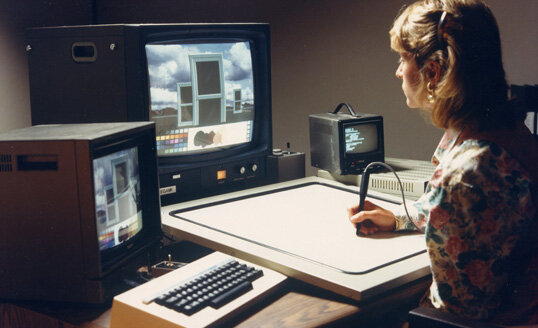
1980 Quantel Paint Box

1980 Quantel Paint Box

1980 Quantel Paint Box

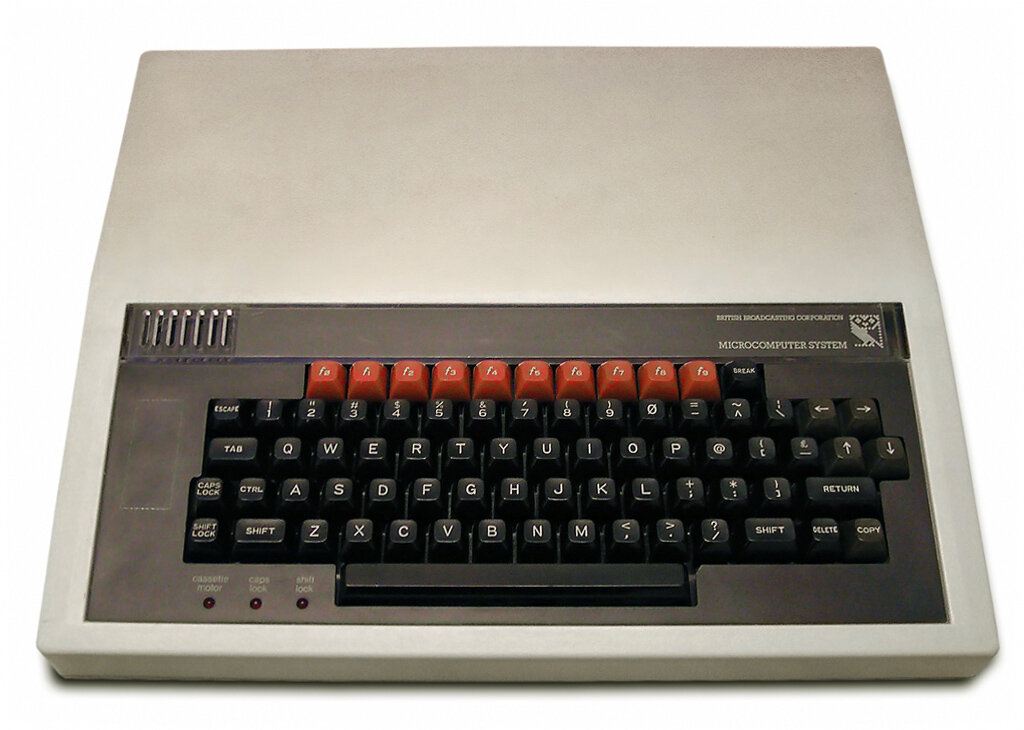
1981 BBC Micro introduced
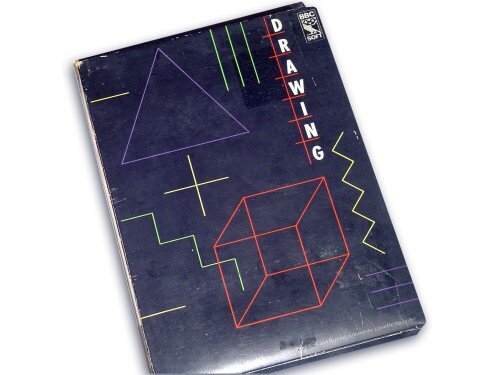
1982 Drawing for the BBC micro. Beebug soft
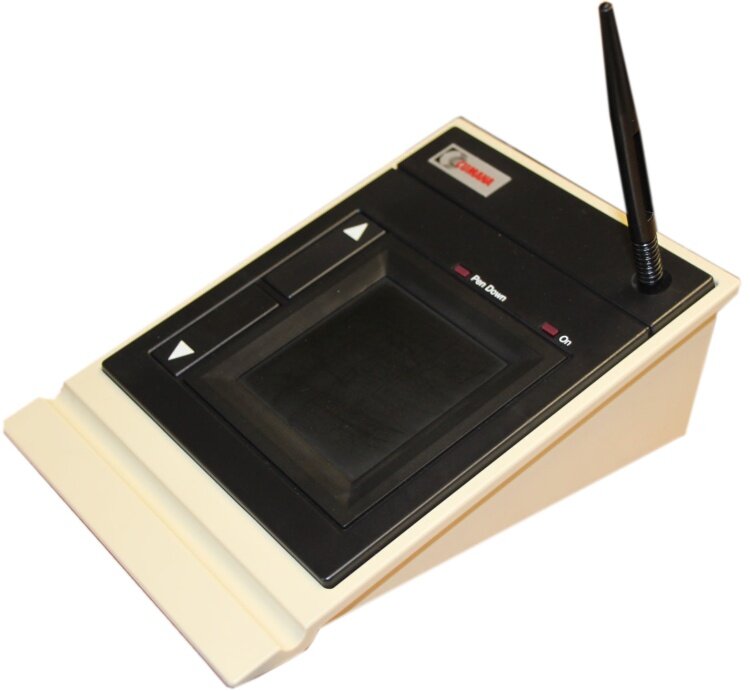
1982 Cumana Drawing tablet for the BBC micro.
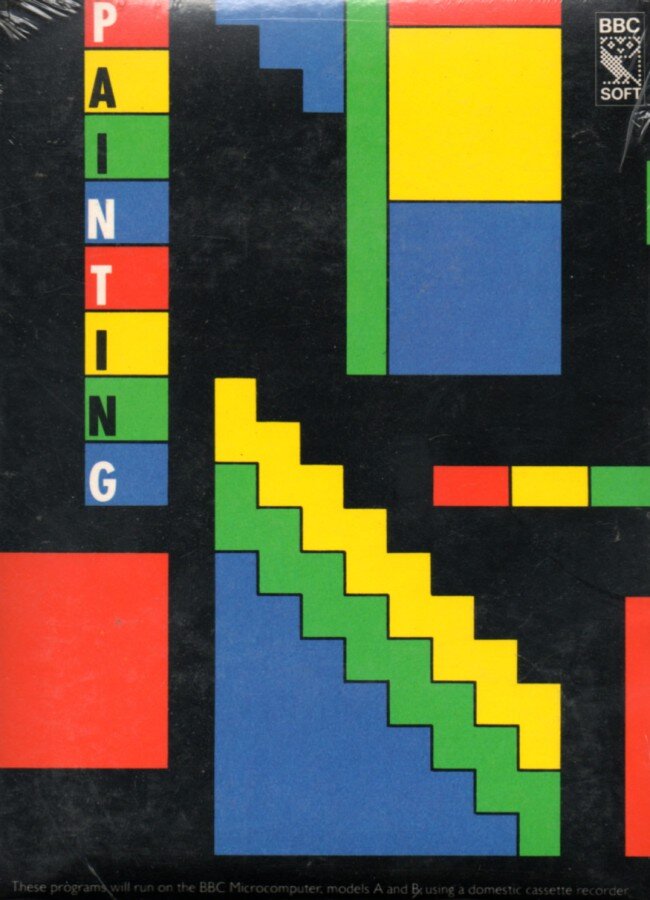
1982 Painting for the BBC micro. Beebugsoft.
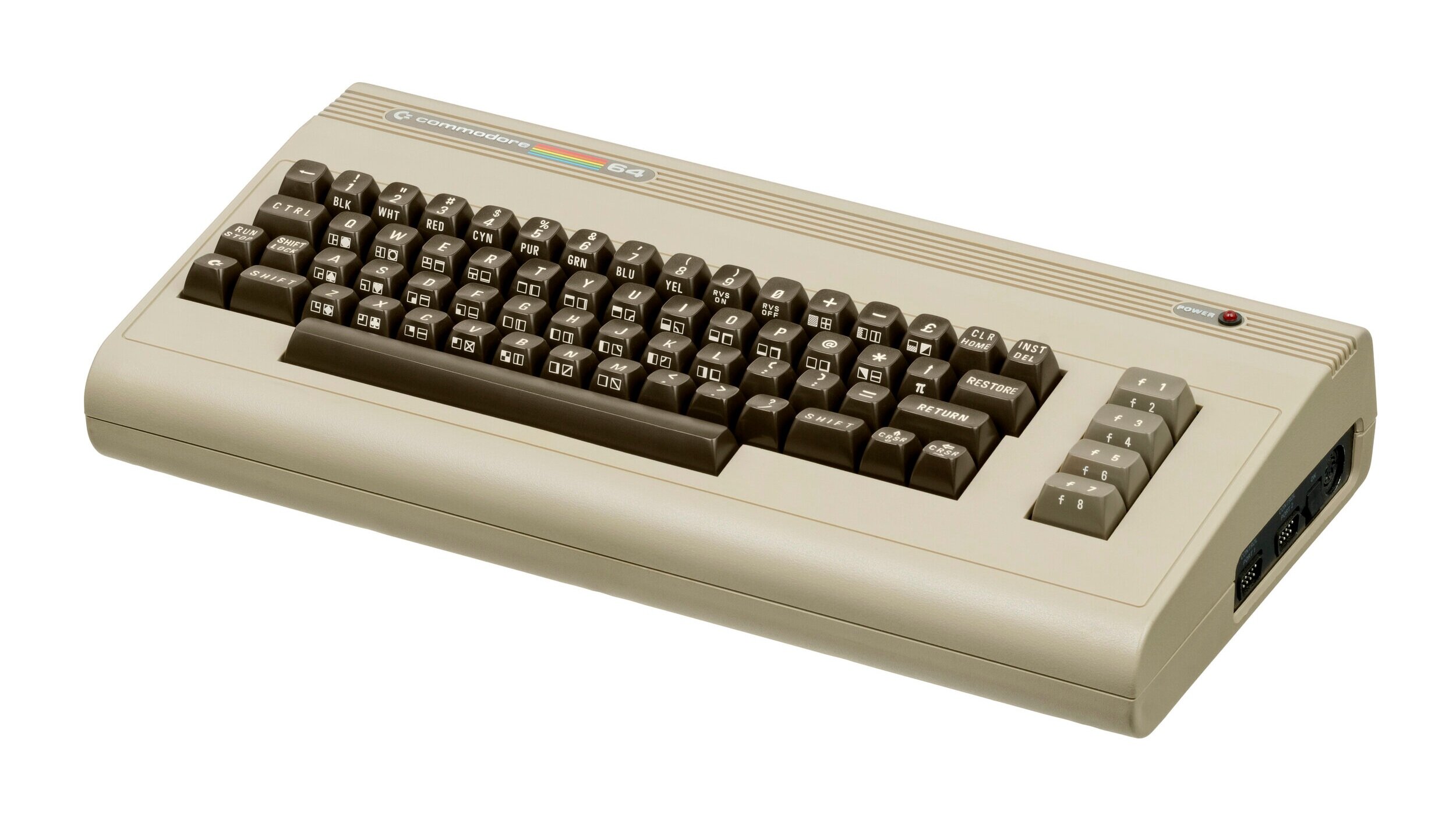
1982 Commodore 64 introduced
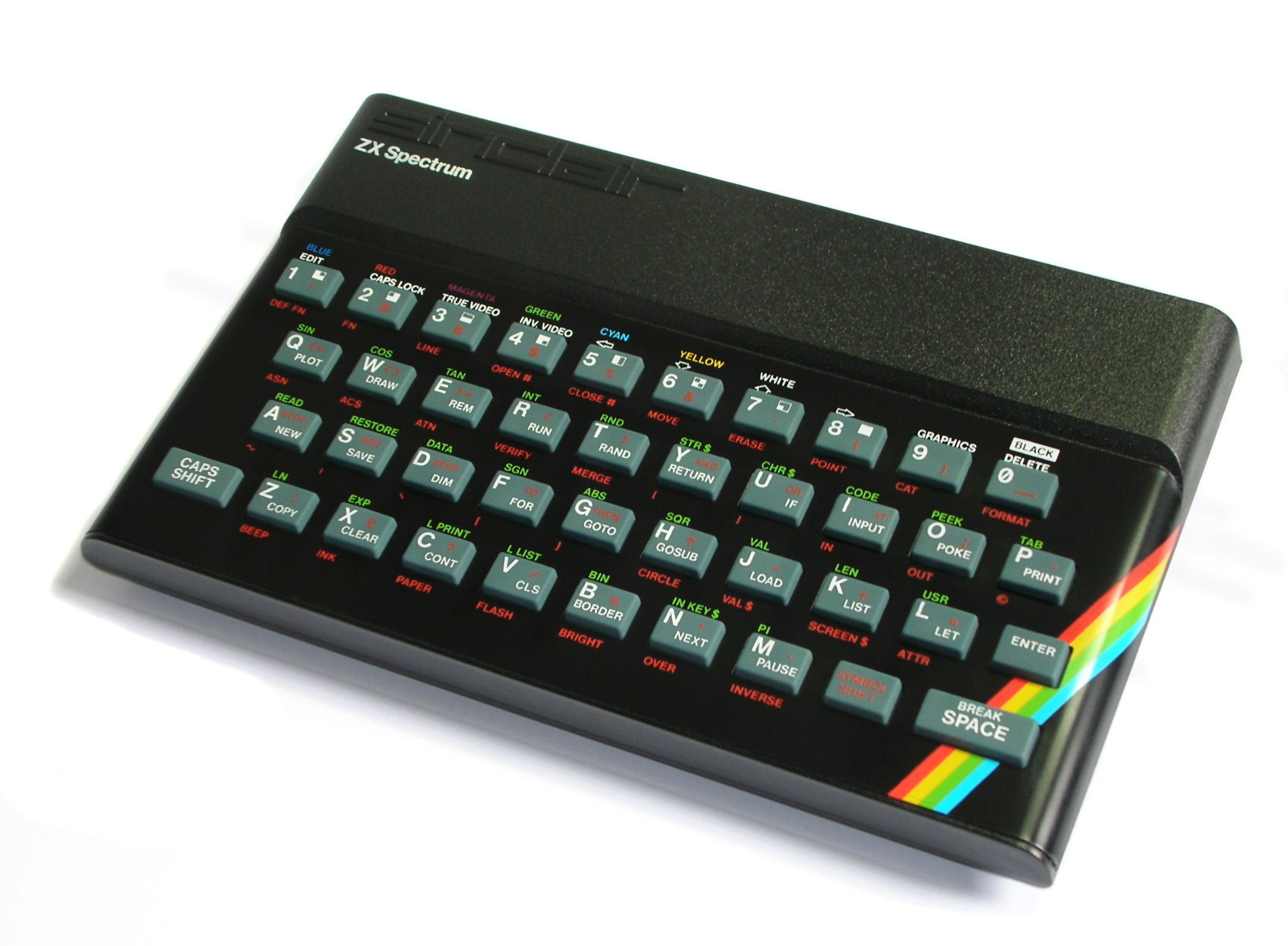
1982 ZX Spectrum released in the UK

1983 Paint Box for ZX Spectrum by Joe Gillespie Print'n'Plotter Products Ltd (UK)
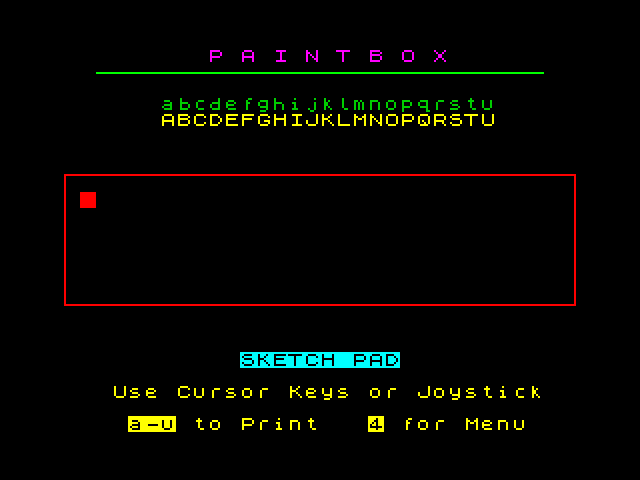
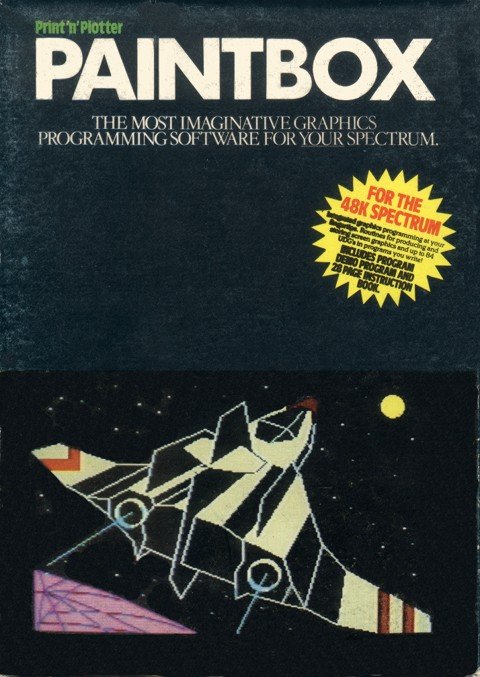
Paint Box ZX Spectrum
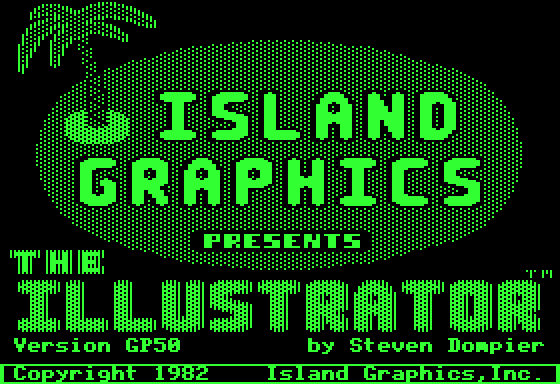
1982 The Illustrator (for Apple II) - Steven Dompier - Island Graphics (San Rafael, CA)
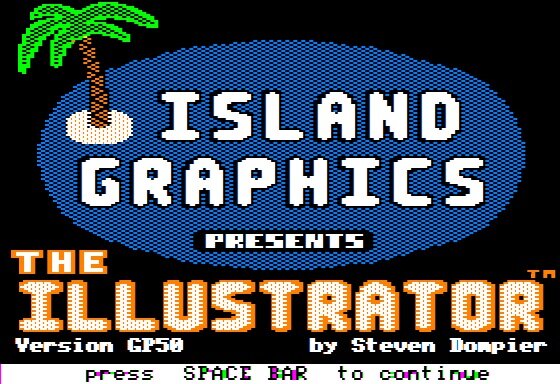
The Illustrator on a colour screen
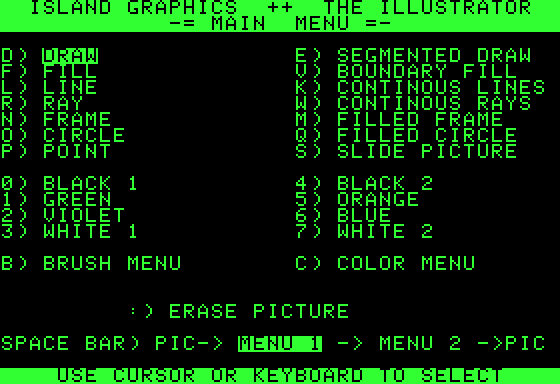
the illustrator menu screen 1

the illustrator menu screen 2

Paint - for Atari 400/800 - Alex Packer, Eric Podietz, Mark Scott, Jimmy Snyder- Capital Children’s Museum - Atari/Warner

Atari 800 ad (released in 1979)
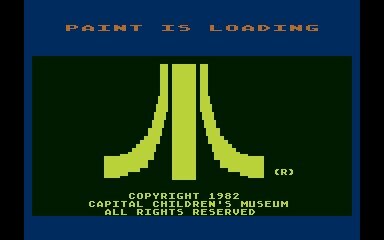
1982 Paint for Atari loading screen

Paint for Atari loading screen
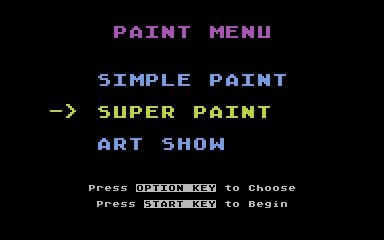
Paint for Atari menu
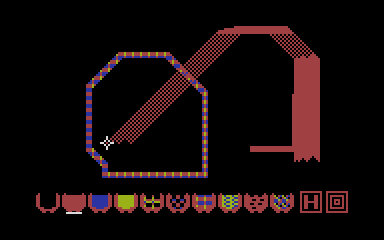
Paint for Atari paint pots shown on bottom of screen
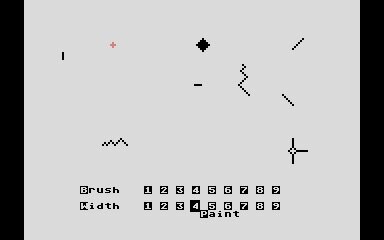
Paint for Atari brush menu
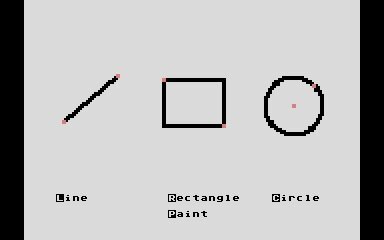
Paint for Atari shapes menu

Paint for Atari colour picker
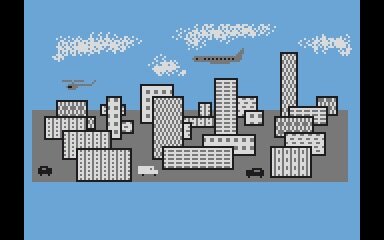
1982 Image created with Paint for Atari
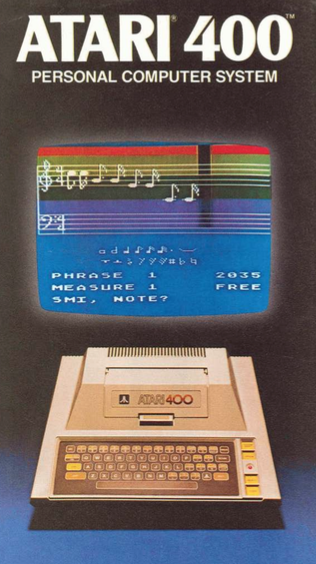
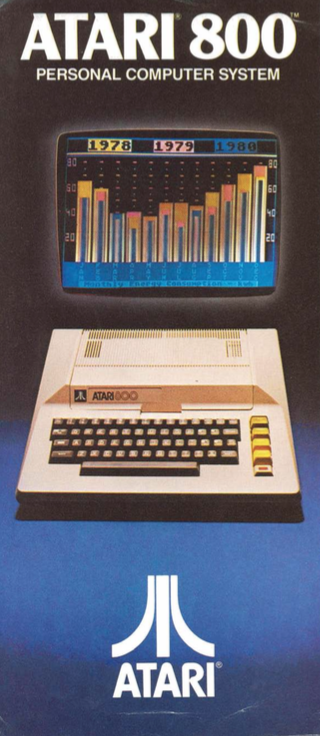
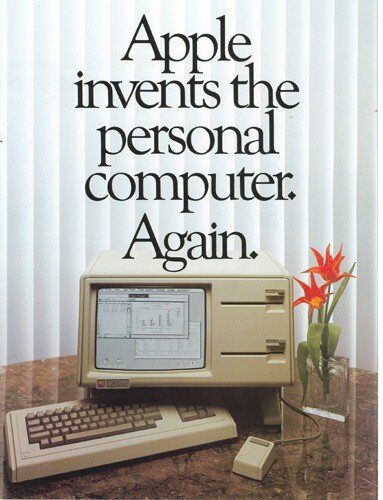
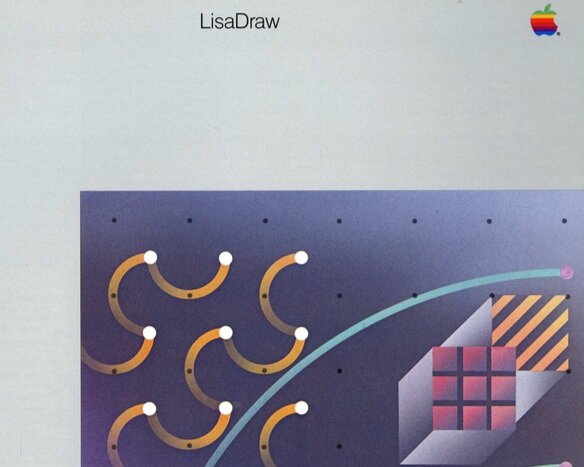
1982 Lisa Draw (for the Apple Lisa) - Bill Atkinson - Apple Computers

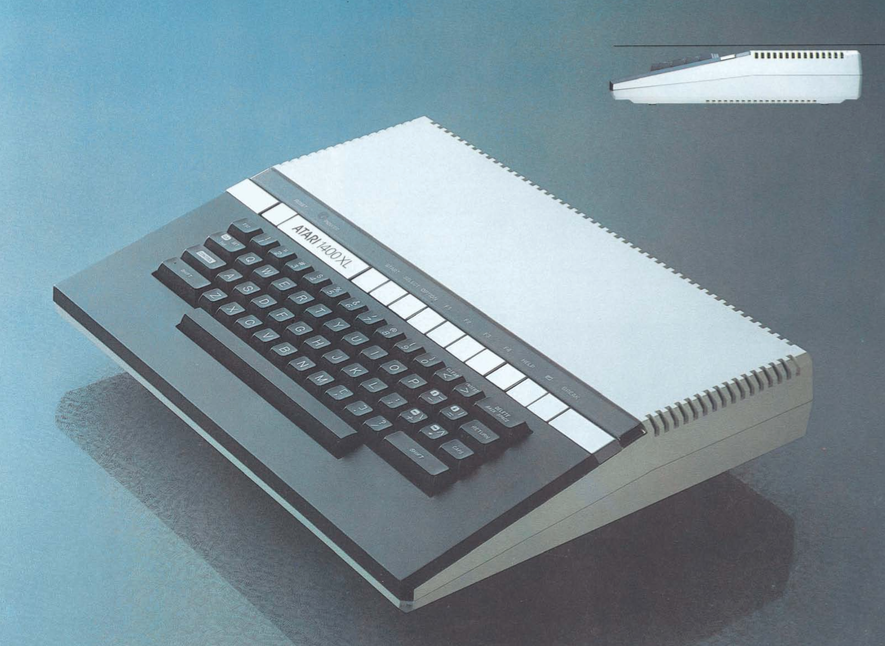
Atari XL Series

1983 Atari Artist and Atari Touch Tablet - Island Graphics and Atari (& Warner Brothers)
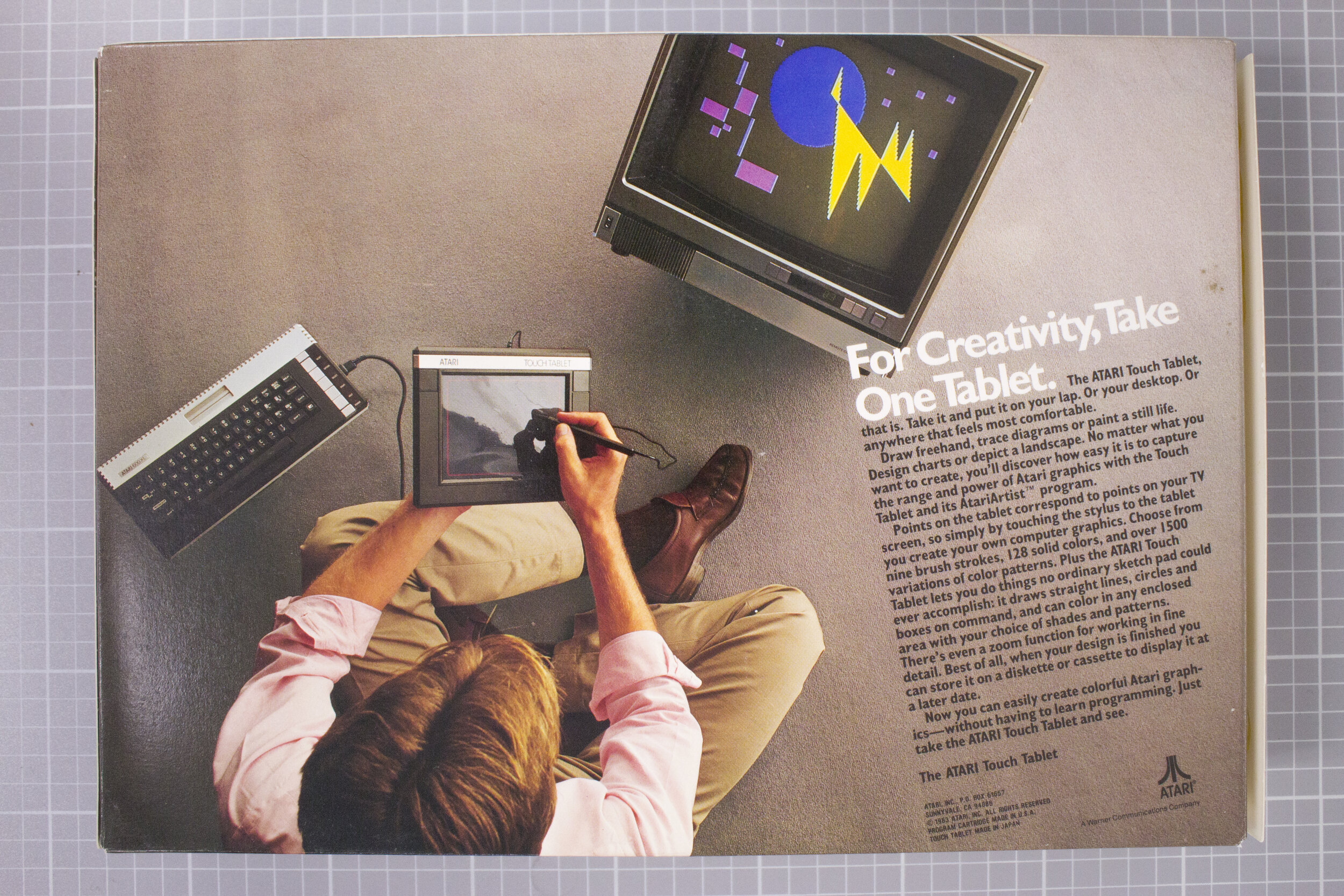
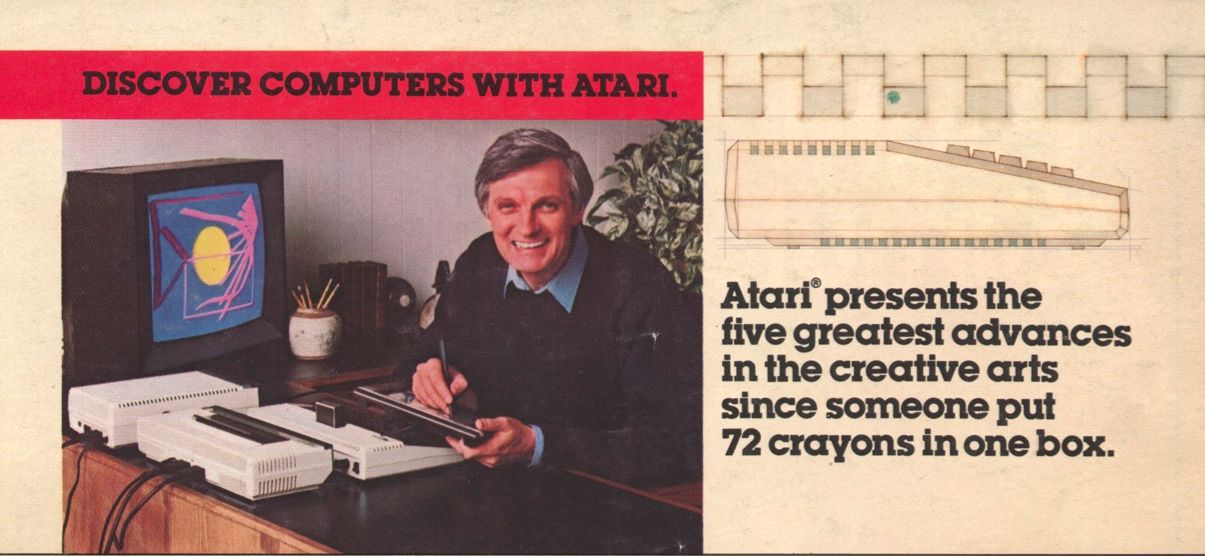
1983 Atari Artist Ad
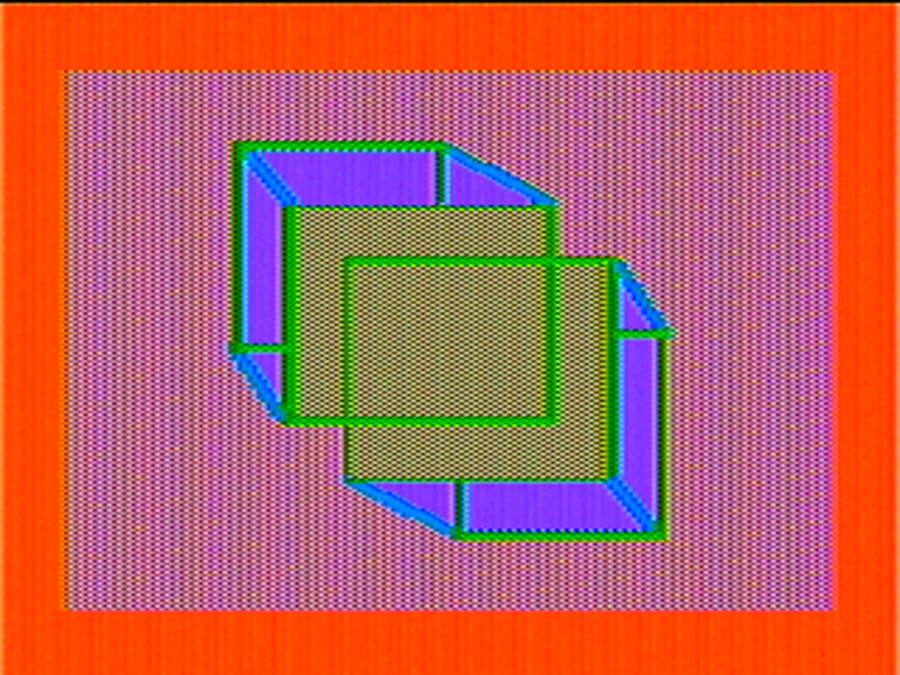
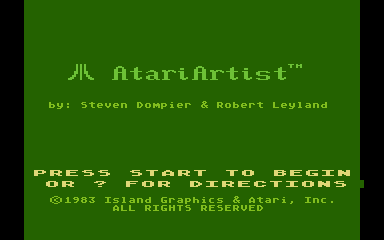
1983 Atari Artist by Steve Dompier & Robert Leyland -Island graphics & Atari
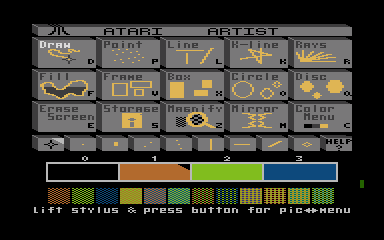
1983 Atari Artist Menu
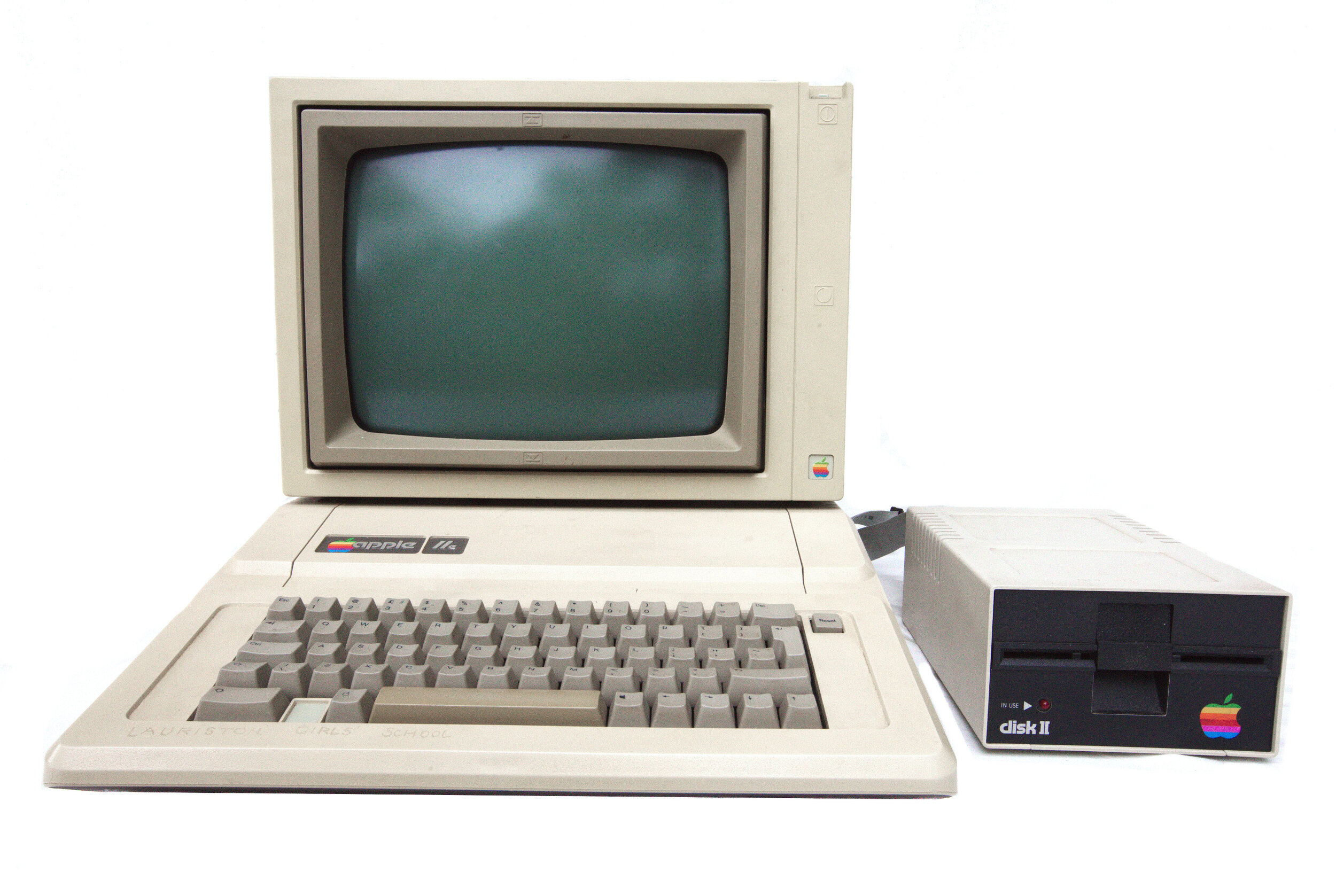
1983 Apple IIe introduced

1983 New York Times illustration
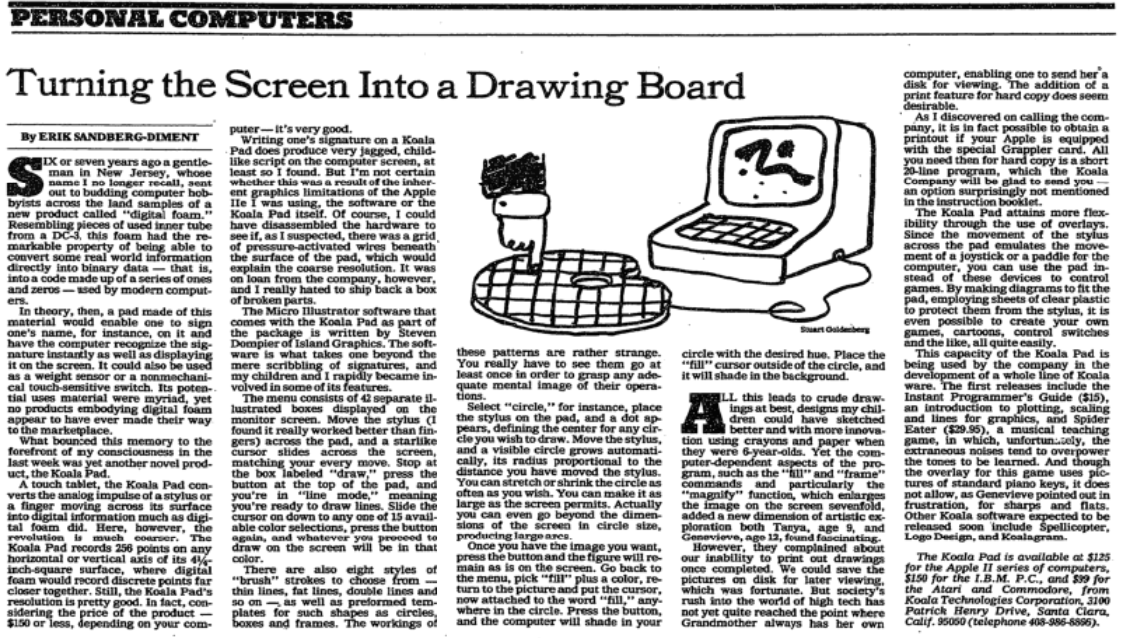
1983 New York Times article which included Stephen Dompier's Illustrator

1983 Koala Painter & Touch Tablet
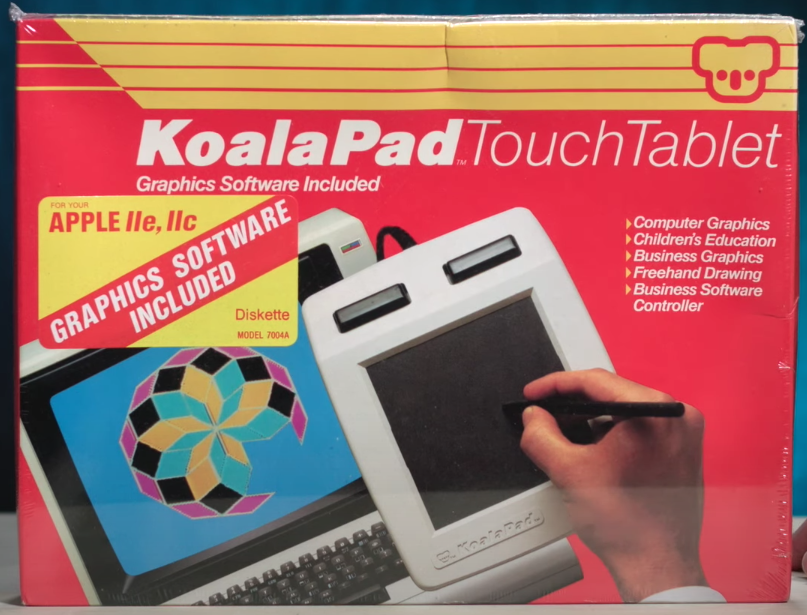
1983 Koala Touch Tablet
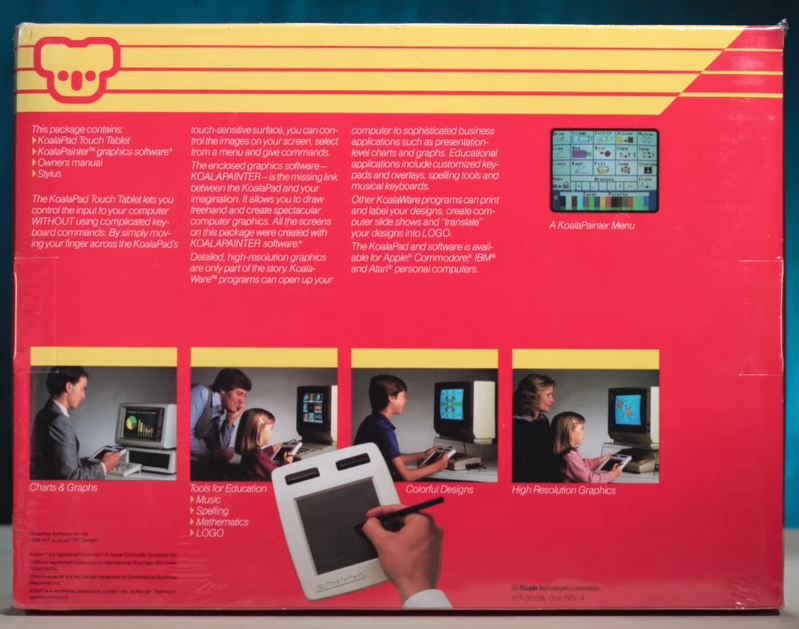
1983 Koala Touch Tablet
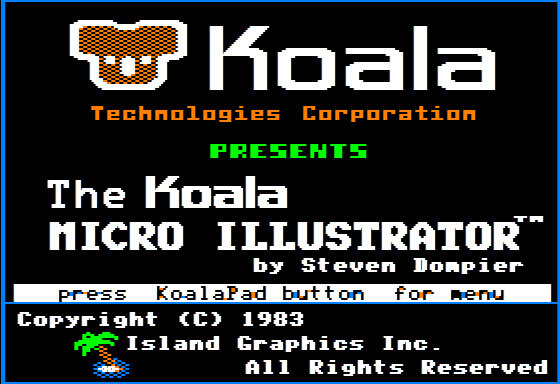
1983 Koala Micro illustrator for Apple II (by Steve Dompier, Robert Leyland) Island Graphics Inc and Atari
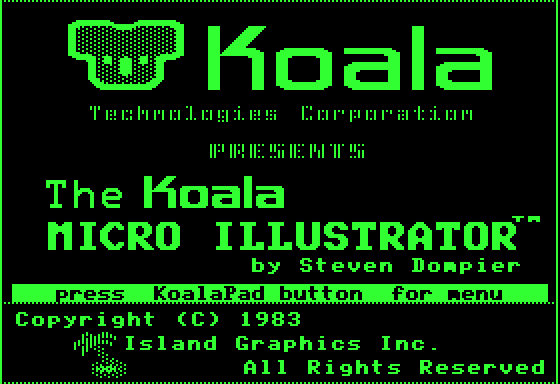
1983 Koala Micro illustrator
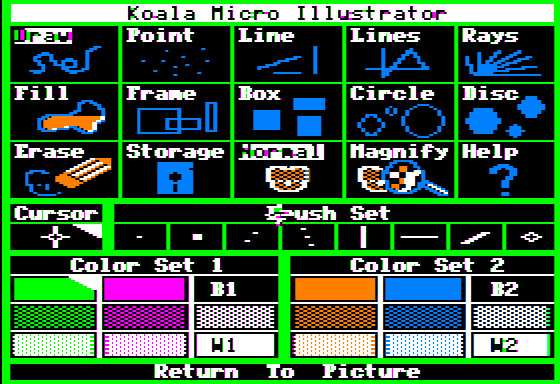
1983 Koala Micro illustrator Menu
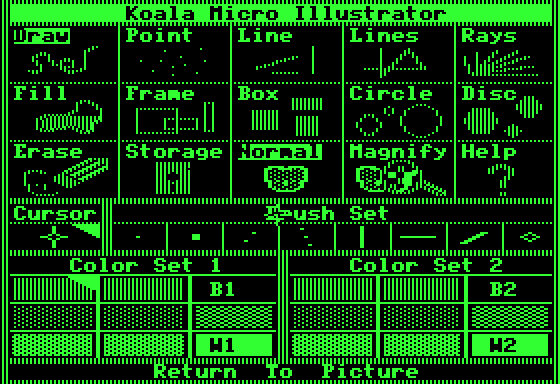
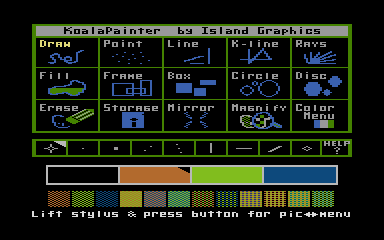
1983 Koala Micro illustrator fro Atari
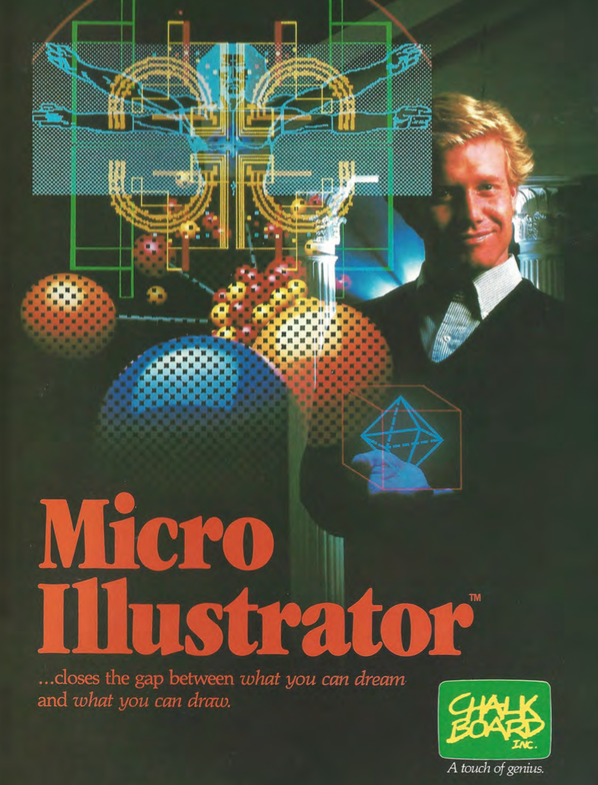
1983 Micro Illustrator for Chalkboard drawing Pad for Apple IIe

1983 4 Point Graphics (for IBM PC) International Microcomputer Software, Inc (San Diego, CA)
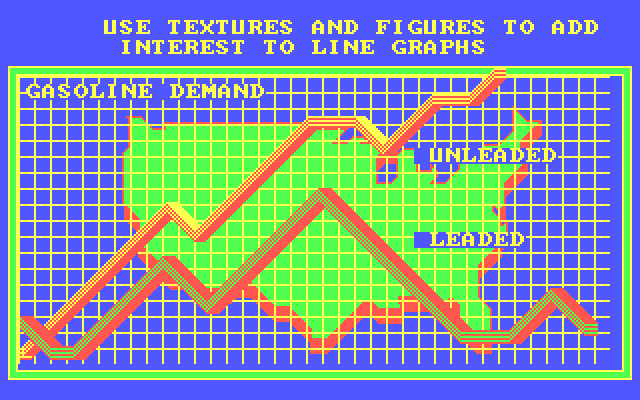
1983 4 Point Graphics
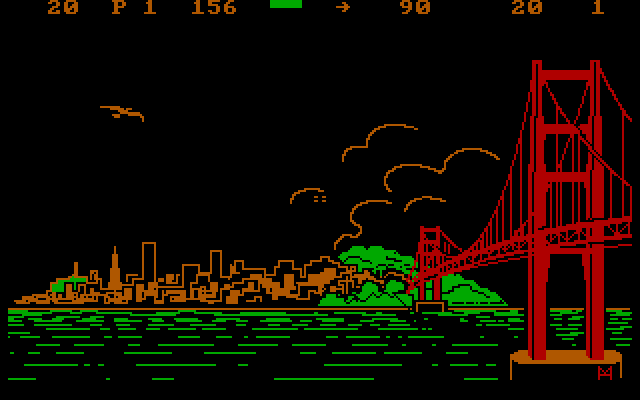
1983 Image created with 4 Point Graphics
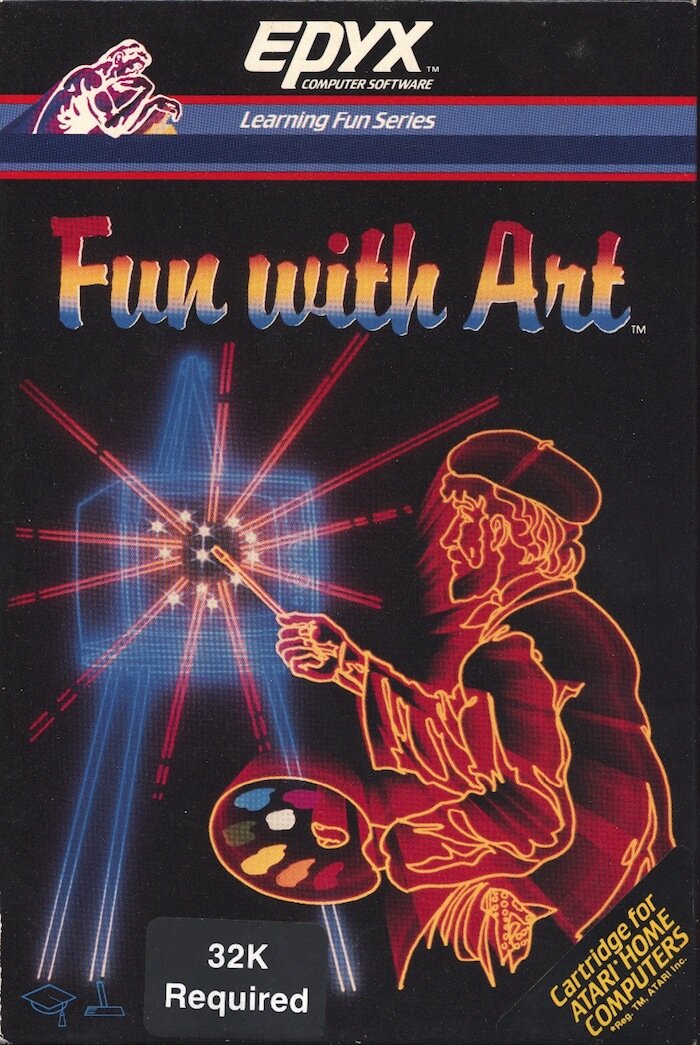
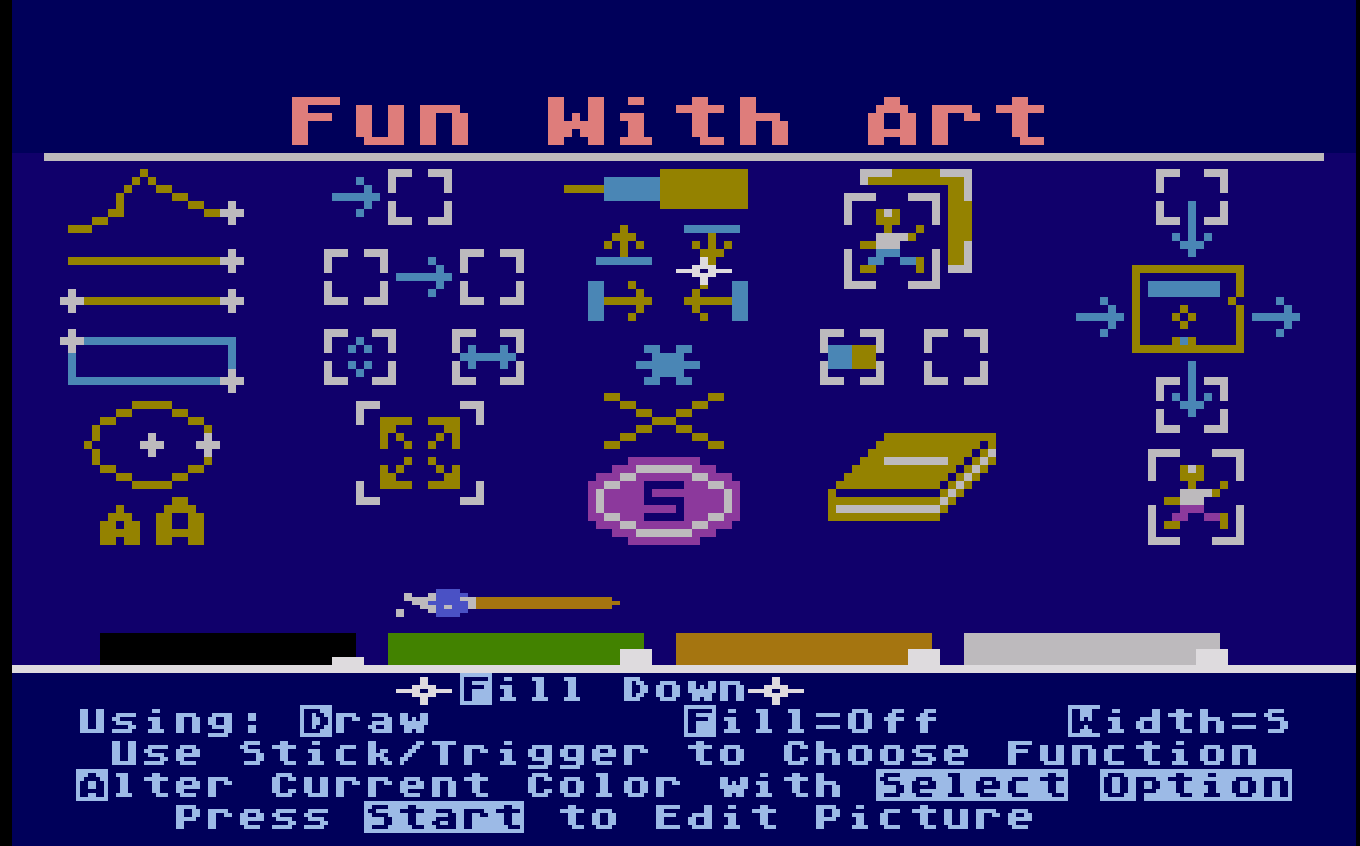
1983 Fun With Art Epyx for Atari 400/800 700XL
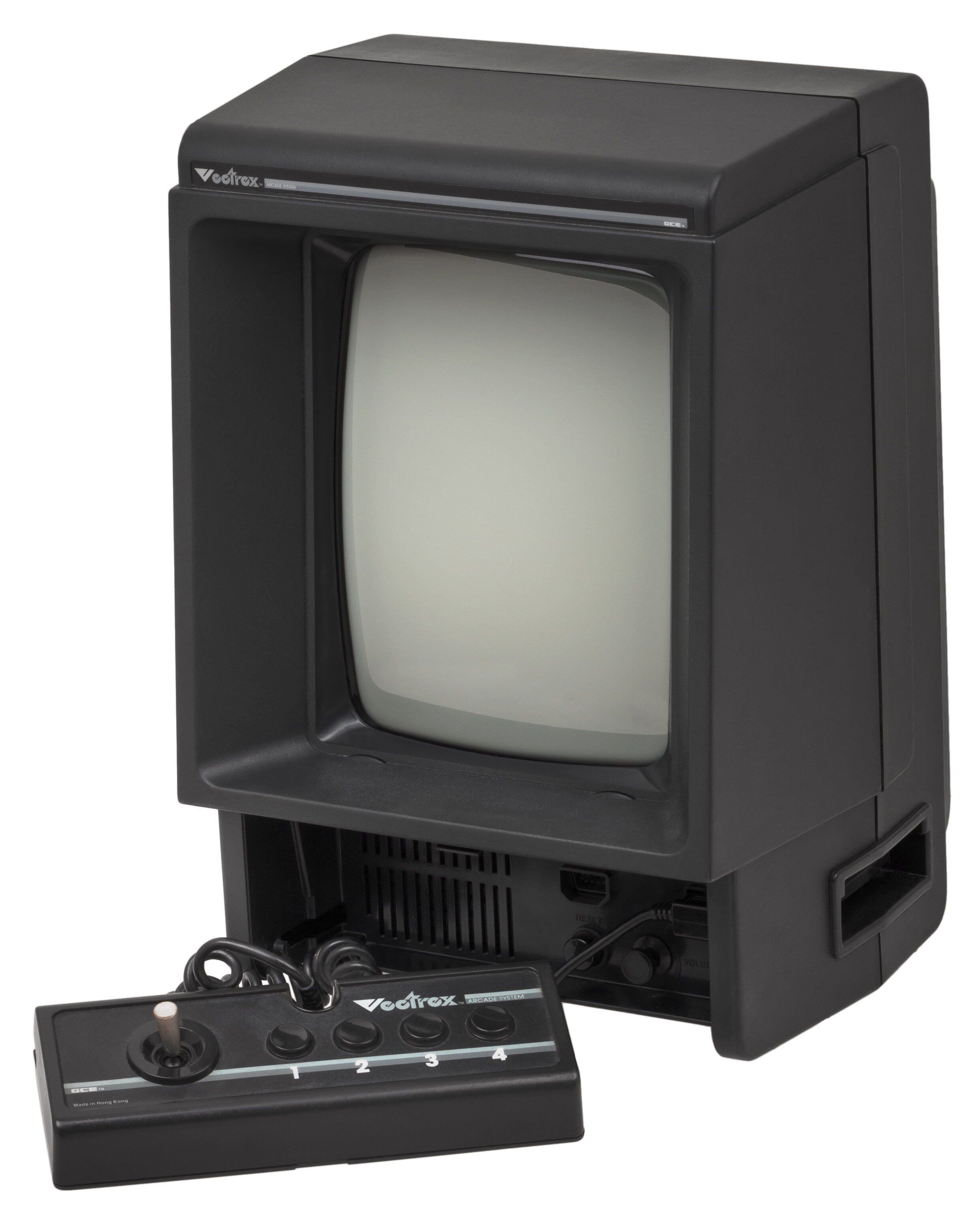
1983 Vectrex console introduced
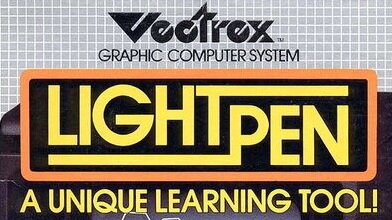
1983 lightpen & Art Master for the Vectrex. A throwback to the 1960's lightpen systems in a video game console format.

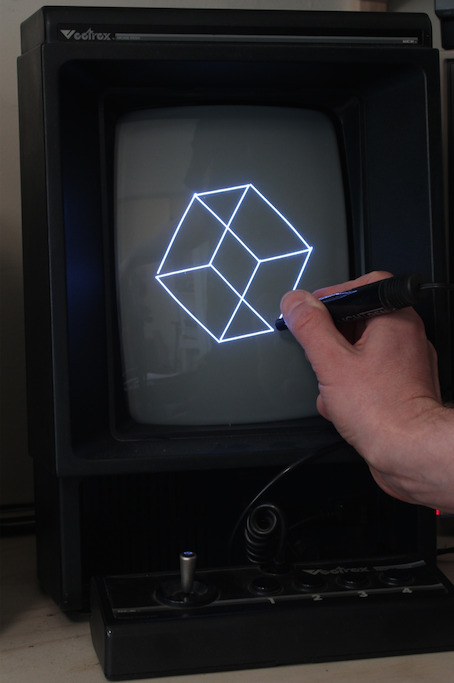
1983 Vectrex Art Master and Lightpen

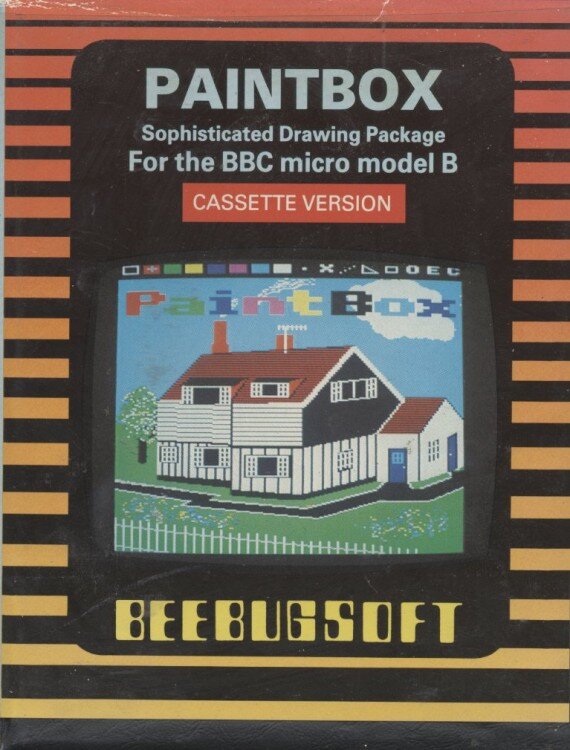
1983 Paintbox for BBC micro. Beebugsoft.
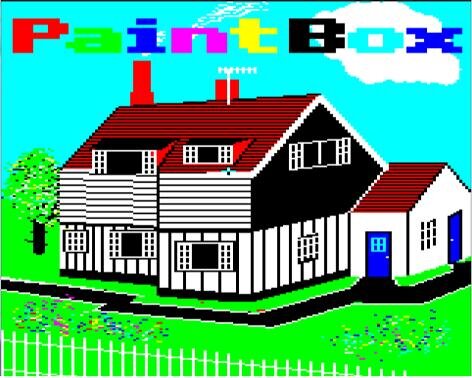
Paintbox
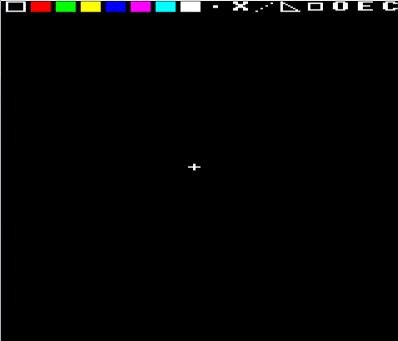
Paintbox
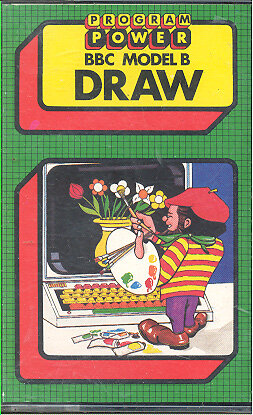
1983 Draw for BBC micro
Quantel Paintbox (1981)
The Quantel Paintbox was a dedicated computer graphics workstation for composition of broadcast television video and graphics. Produced by the now-defunct British production equipment manufacturer Quantel, its design emphasized the studio workflow efficiency required for live news production. At a price of about $250,000 per unit (equivalent to $374,000 in 2020), they were used primarily by large TV networks such as NBC, while in the UK, Peter Claridge's company CAL Videographics was the first commercial company to purchase one. Following its initial launch in 1981, the Paintbox revolutionised the production of television graphics.
Images NYIT (1981)
Images (by New York Institute of Technology) was a graphics design system with real time 3-D painting ability.
N.Y Tech Computer Graphics lab demo reel.
1984 :
MacPaint and its many children, The beginnings of oversaturation. Paint and draw software with similar user interfaces, on multiple personal computer platforms. Digitizers and Scanners like MacVision start to allow some of the first digitized images on computers in the home, where they can be manipulated in paint/photo editing software.
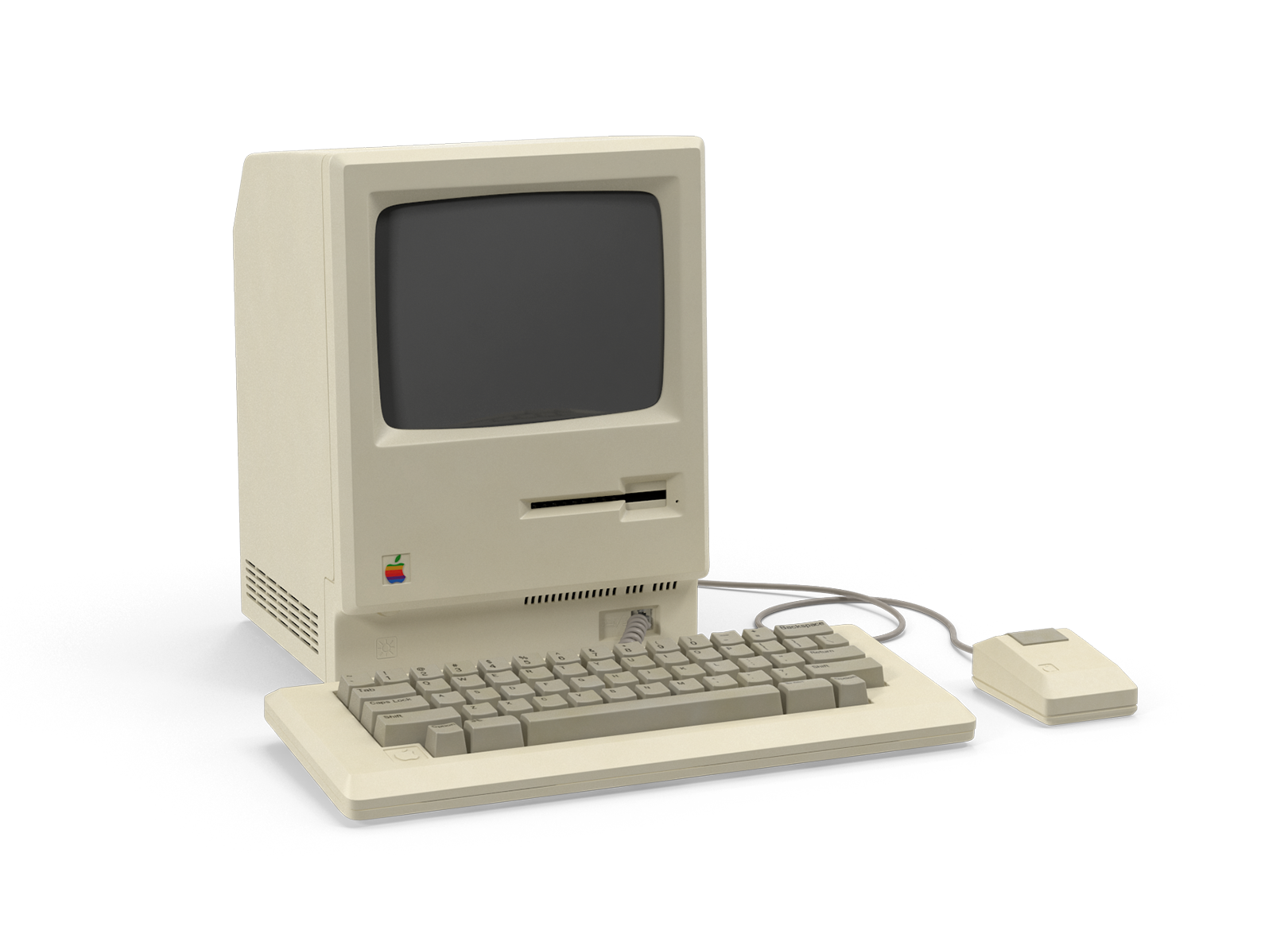
Macintosh 128k introduced
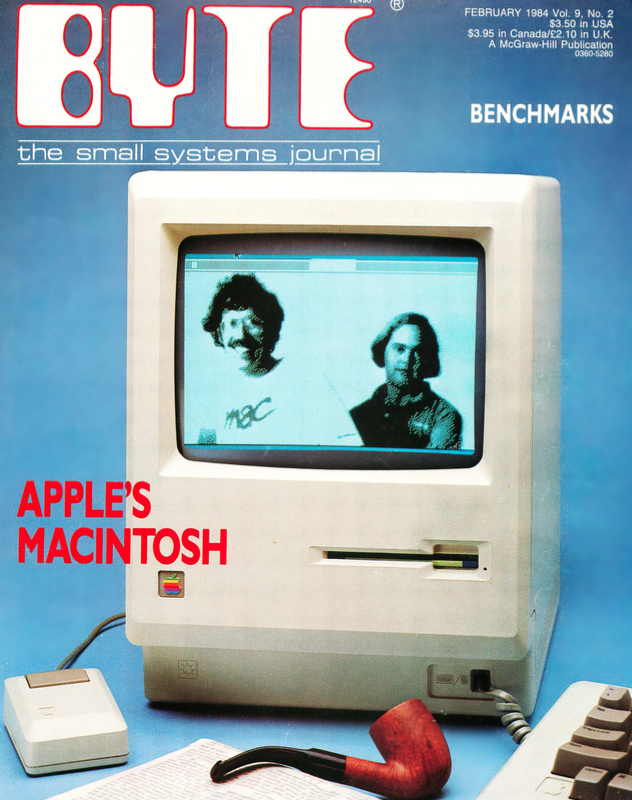
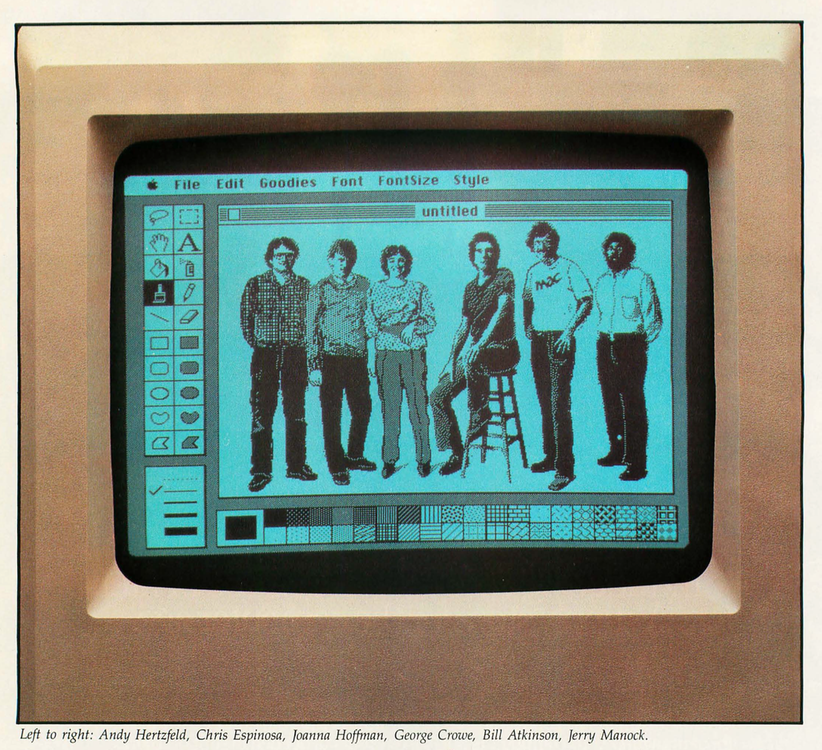
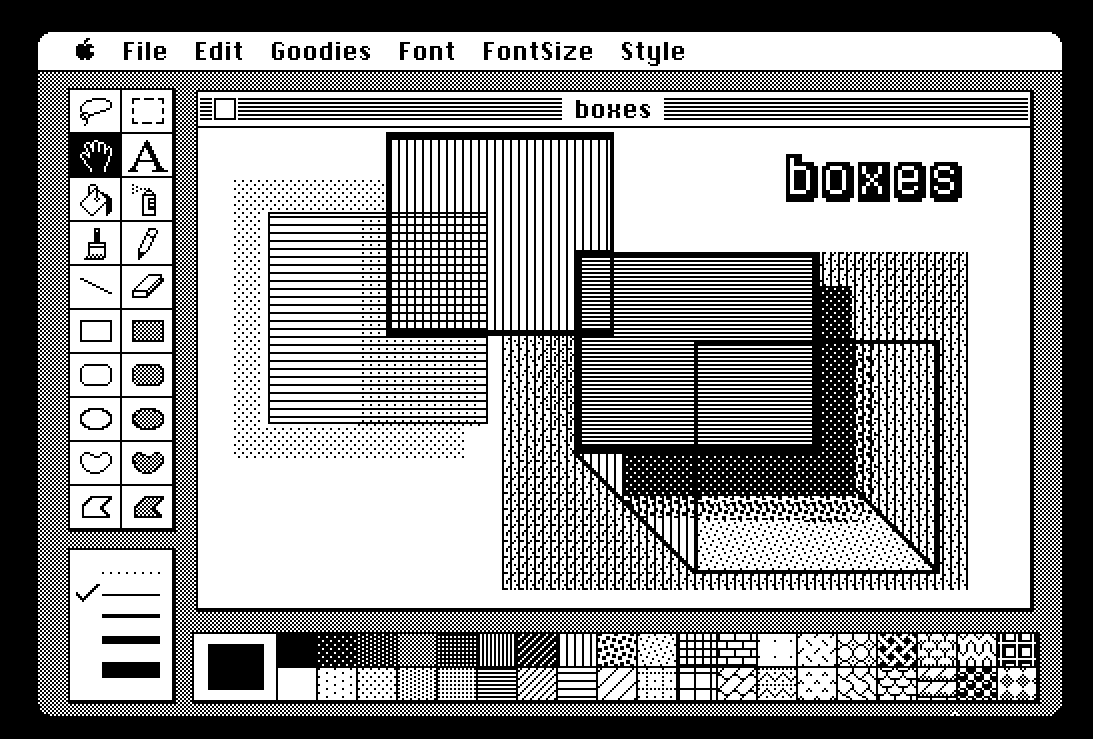
MacPaint screenshot
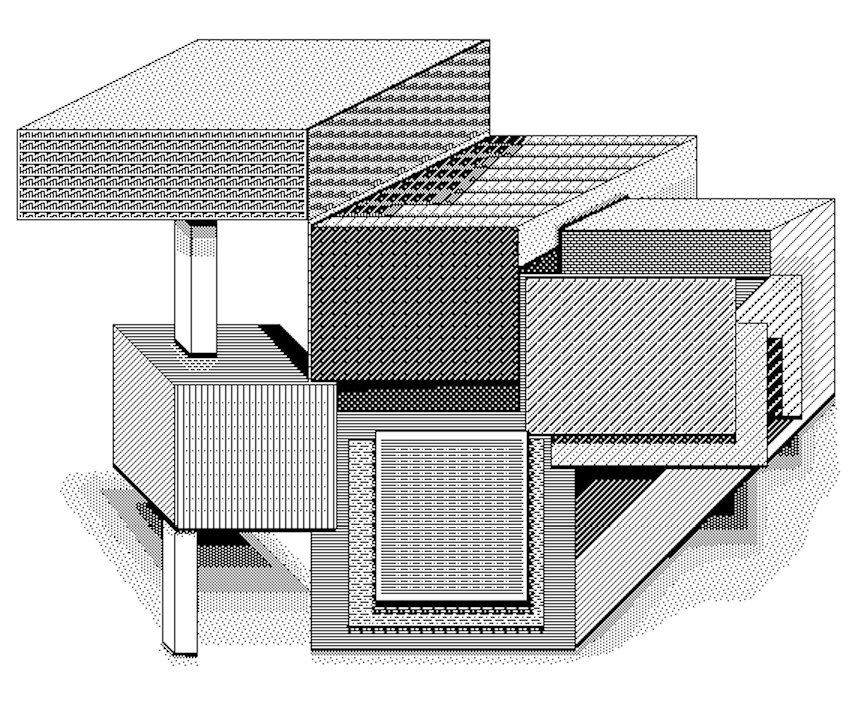
Image created with MacPaint
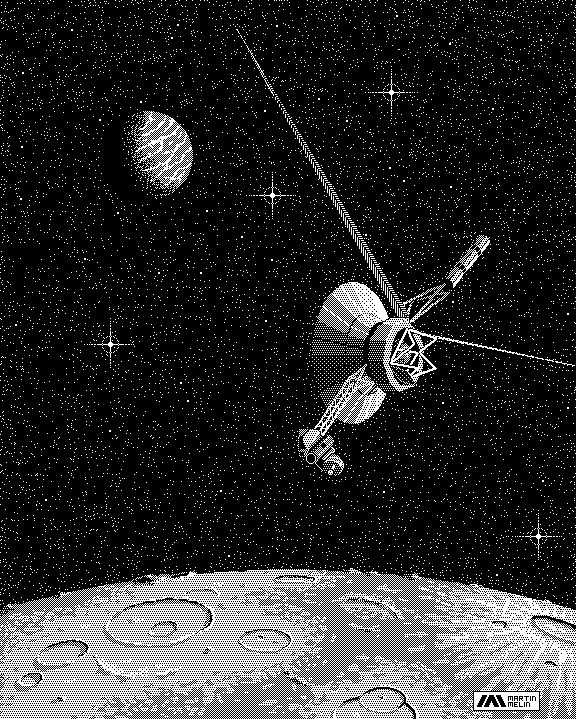
Image created with MacPaint
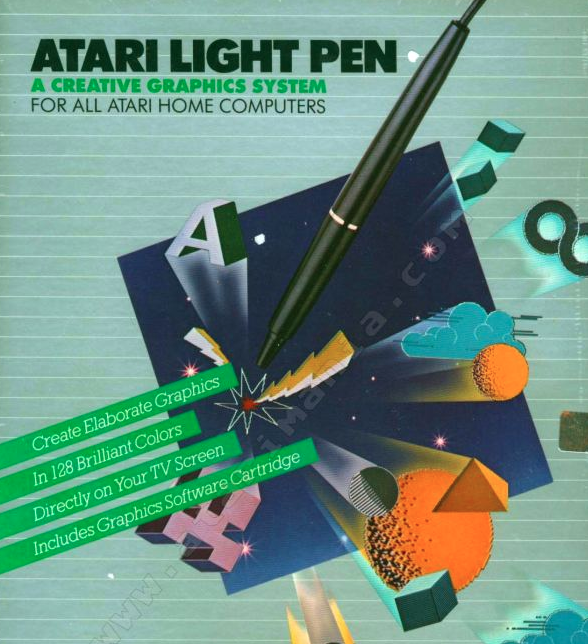
Atari Graphics and light pen (Atari 400/800(XL) - by Steve Gibson - Atari USA
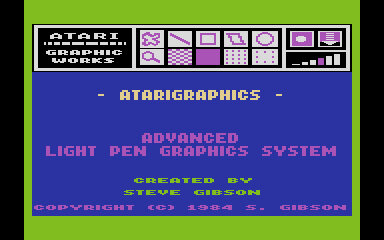
Atari Graphics (Atari 400/800(XL) by Steve Gibson. Atari USA

Atari Graphics light pen calibration screen

Atari Graphics pattern & colour chooser
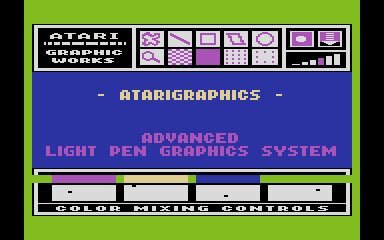
Atari Graphics colour mixing
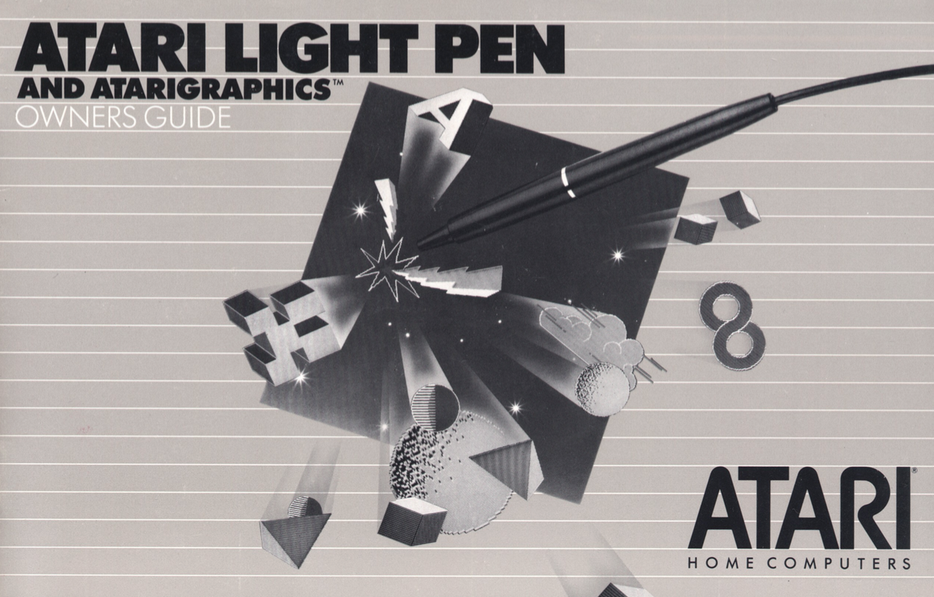
Atari Light pen manual
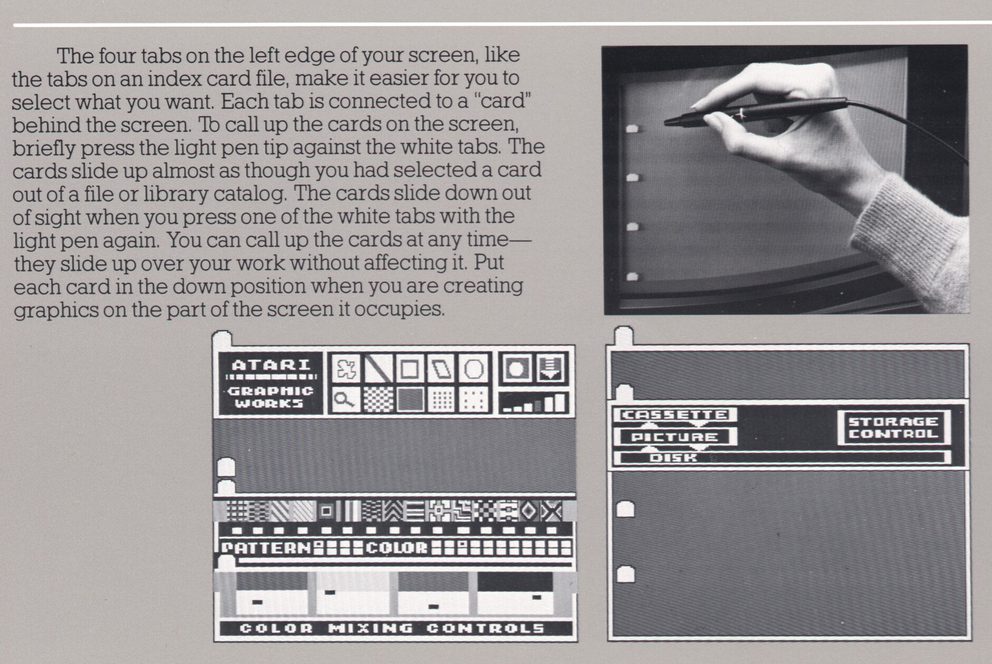
Atari Light pen manual
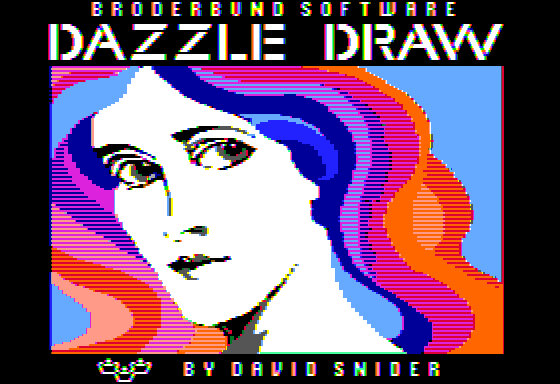
Dazzle Draw - (for Apple IIc/IIe) David Snider - Broderbund Software (San Rafael, CA) (version 1.0 1984 & Version 1.2 1988)
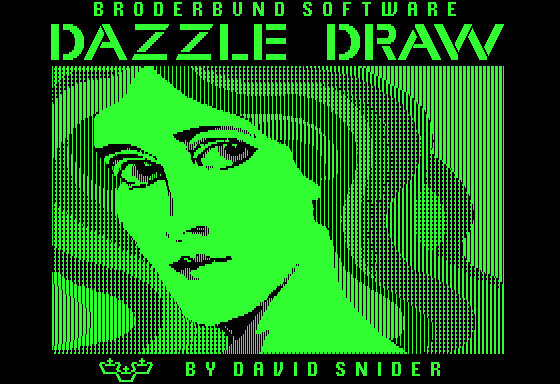
Dazzle Draw start up screen monochrome monitor

Dazzle Draw menu and patterns

Blazing Paddles (Apple IIe, Commodore 64) - by Michael Darooge - Baudville (Grand Rapids, MI)

blazing paddles instructions monochrome monitor

Blazing Paddles menus screen colour monitor
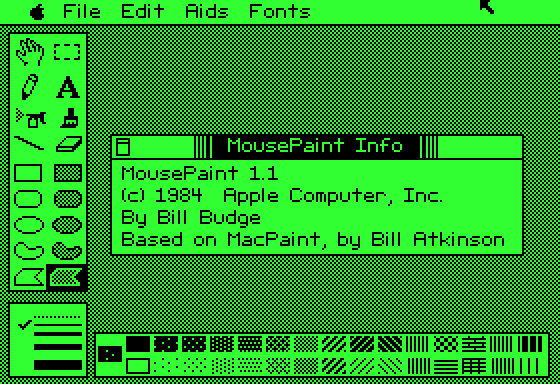
MousePaint (for Apple II) - Bill Budge based on MacPaint by Bill Atkinson - Apple Computer, Inc.
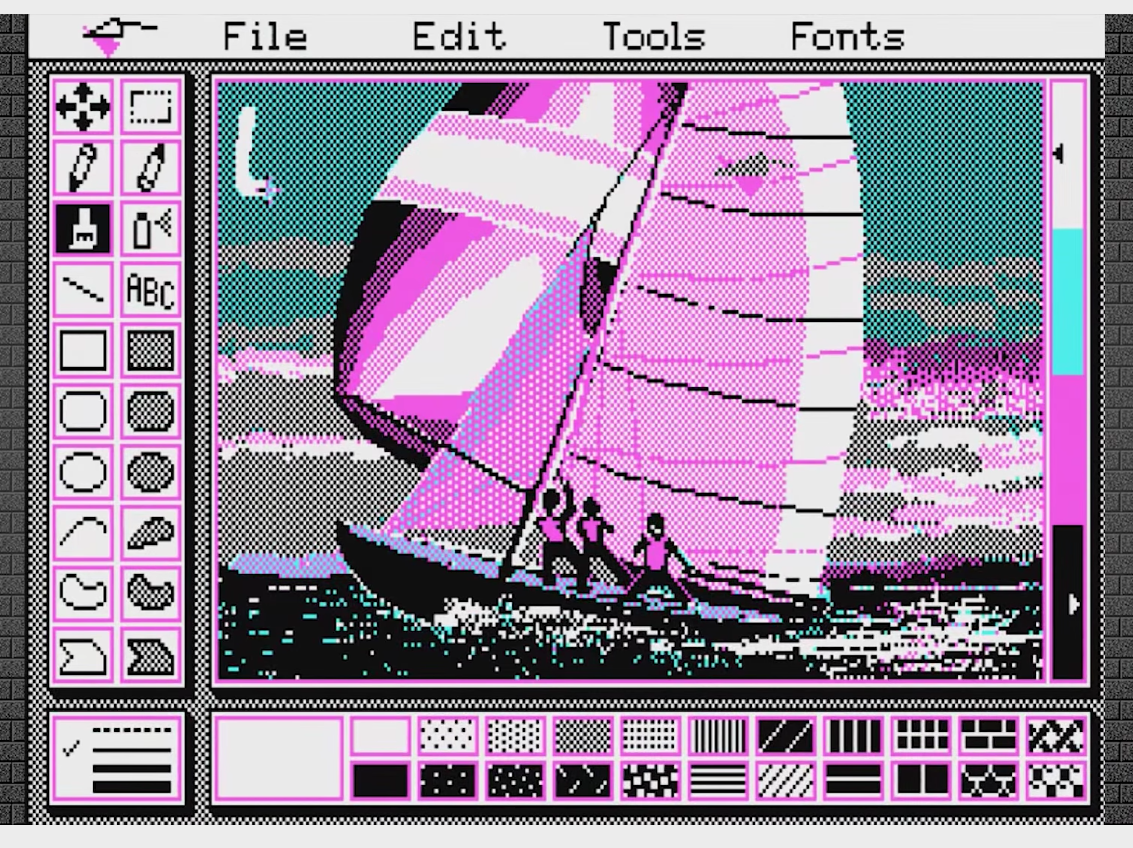
1984 PC Paint 1.0
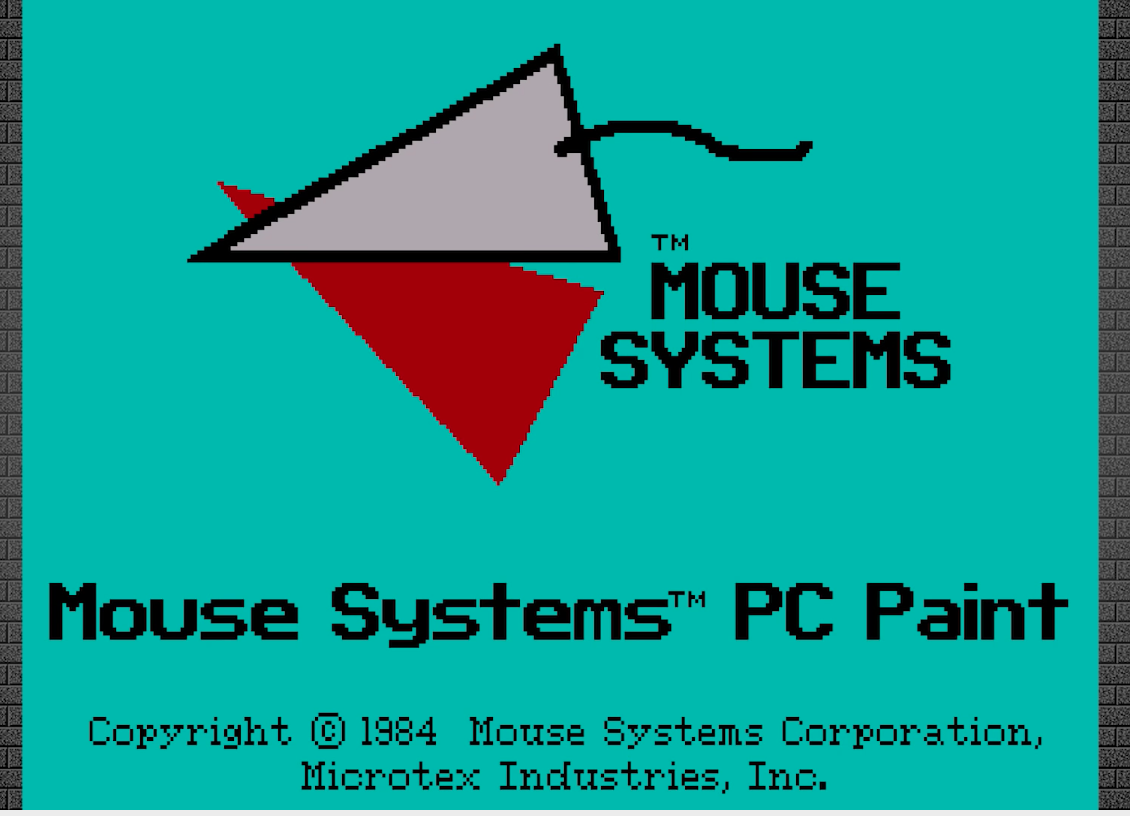
PC Paint 1.0 (for IBM PC) - Doug Wolfgram and John Bridges - Mouse Systems and Microtext Industries (Version 2.0 1985, and 3.1 1989)
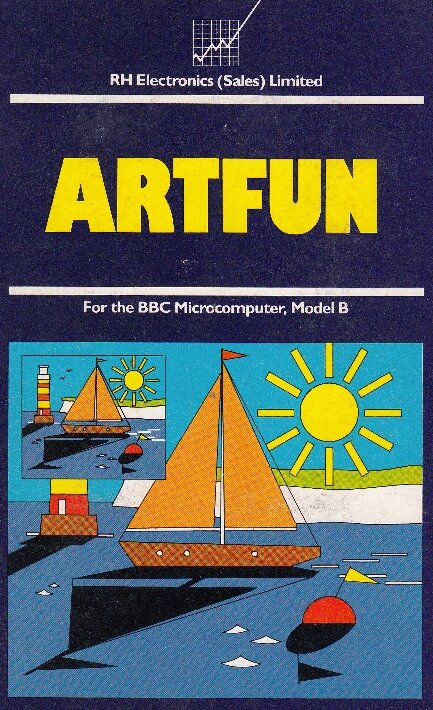
BBC micro art fun
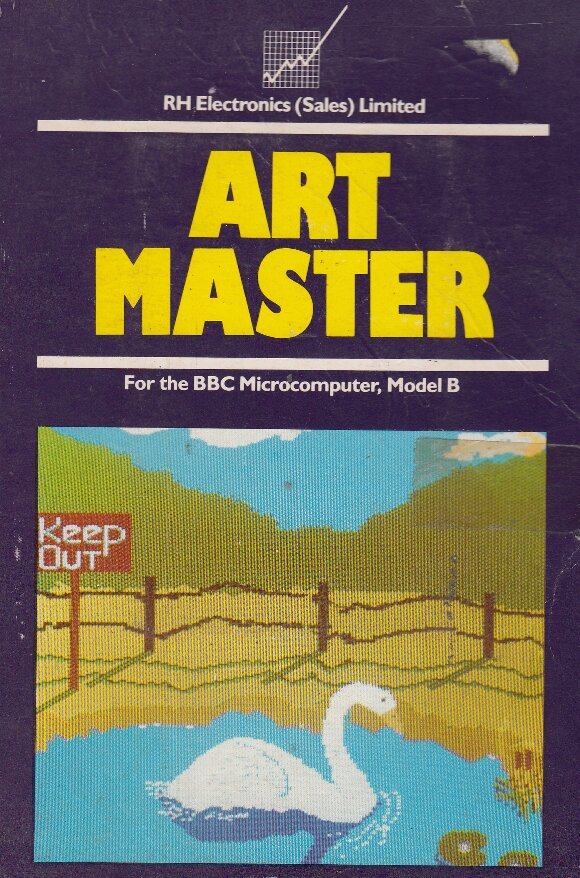
BBC micro art master

BBC micro Art Stick
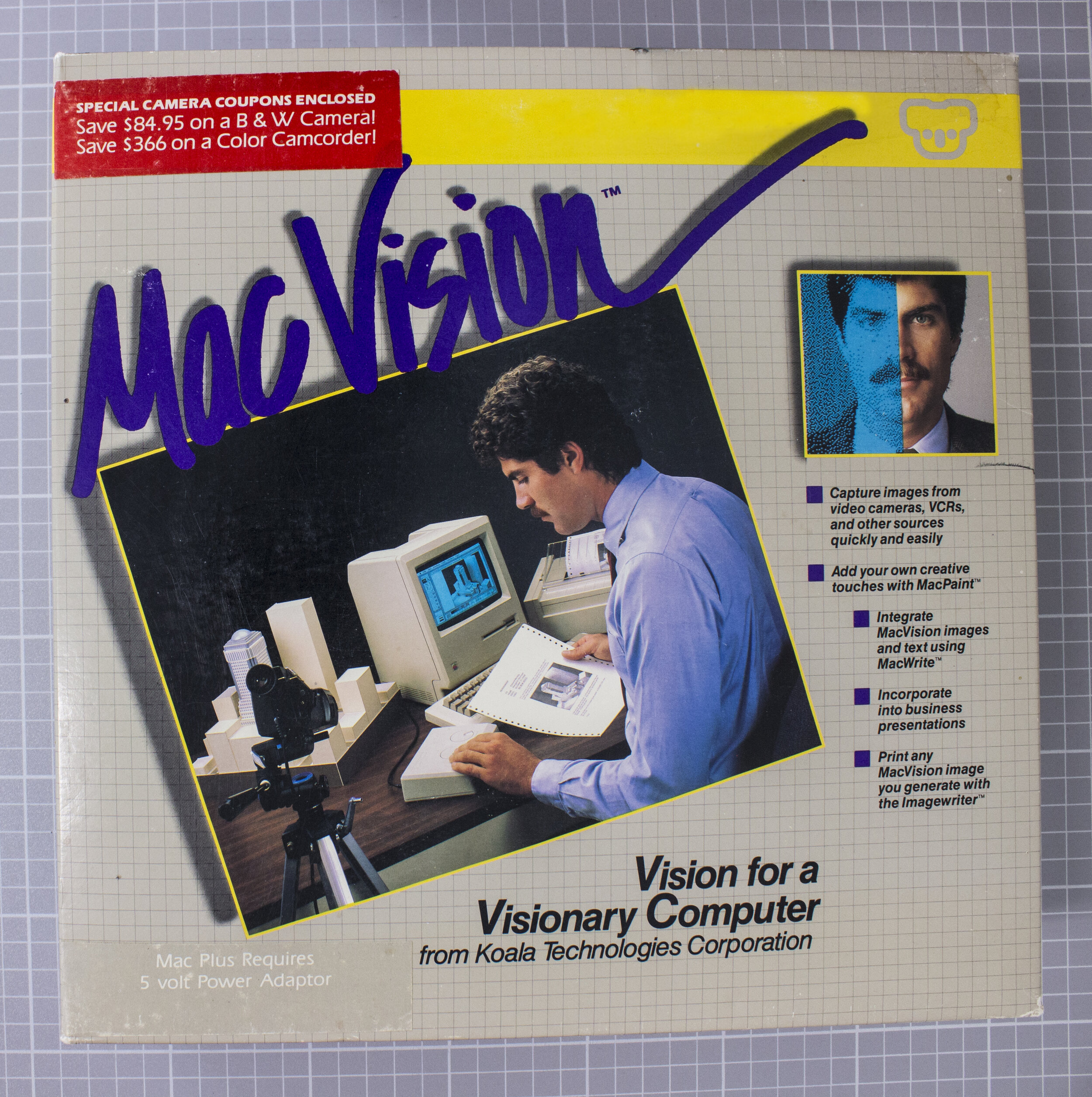
MacVision digitizer for Macintosh -Koala.
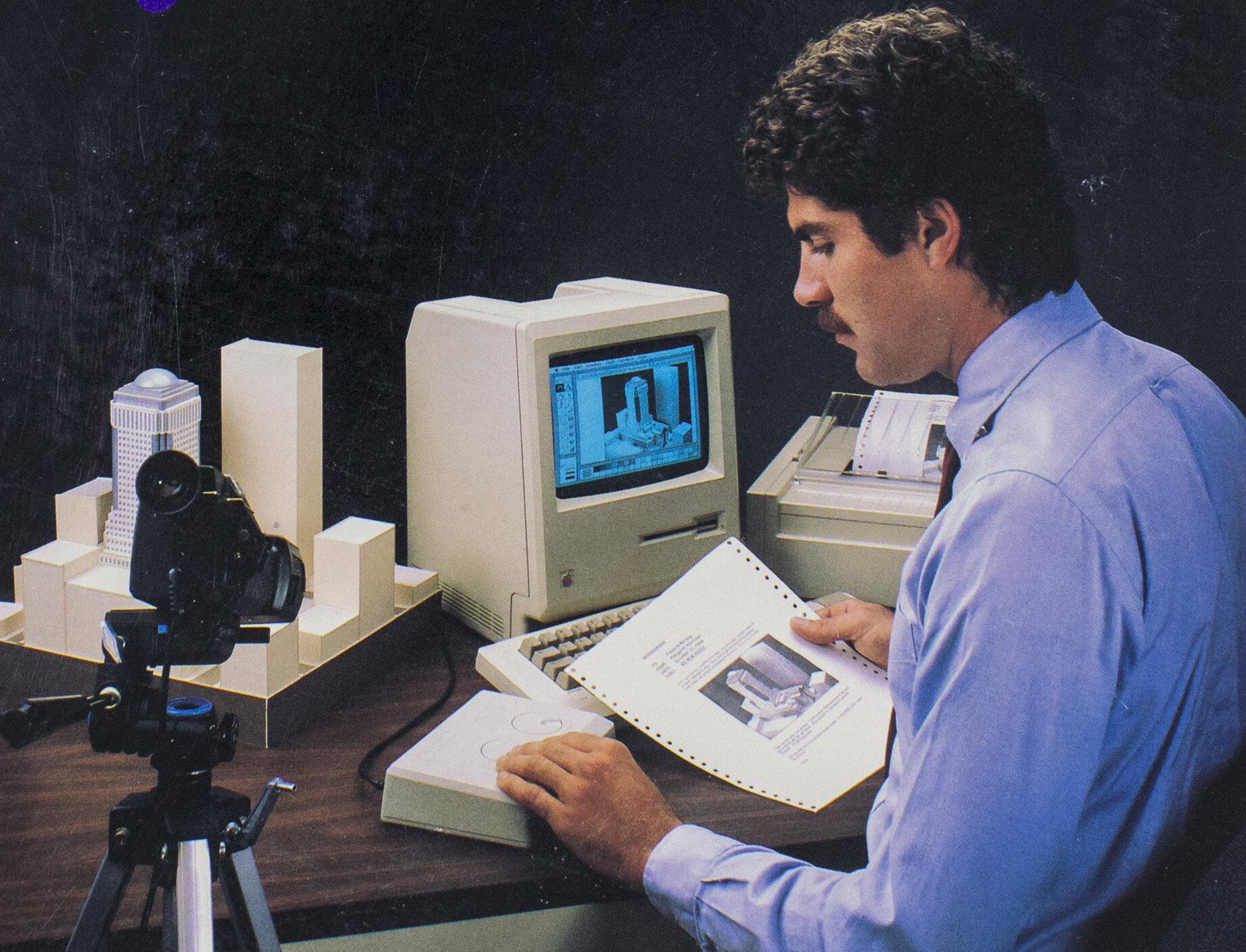
MacVision digitizer
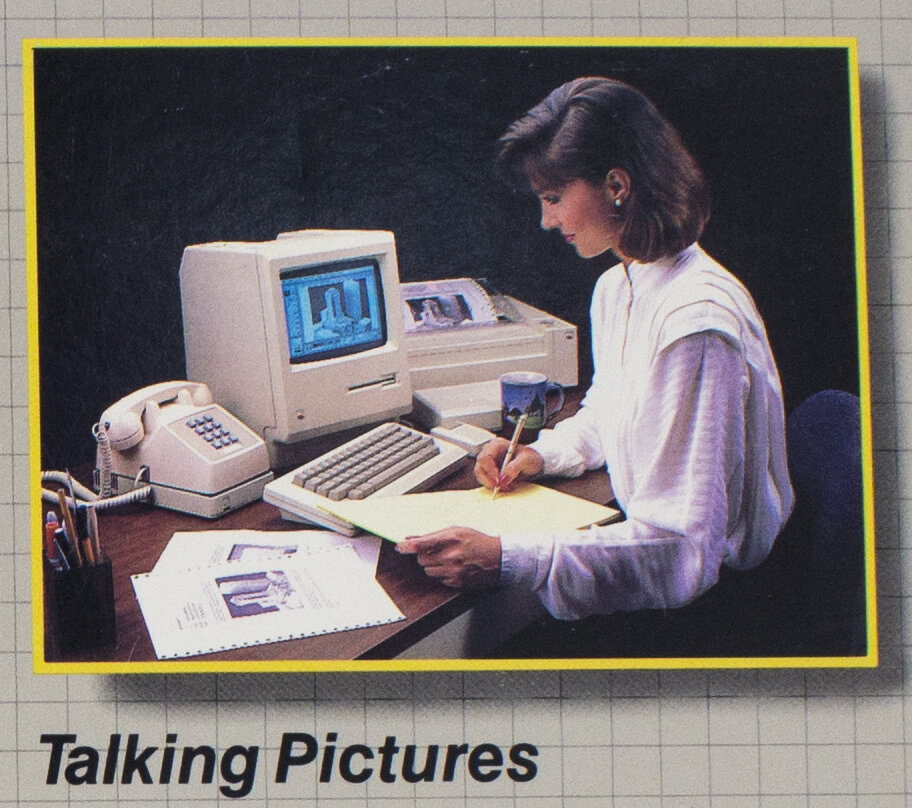
MacVision digitizer
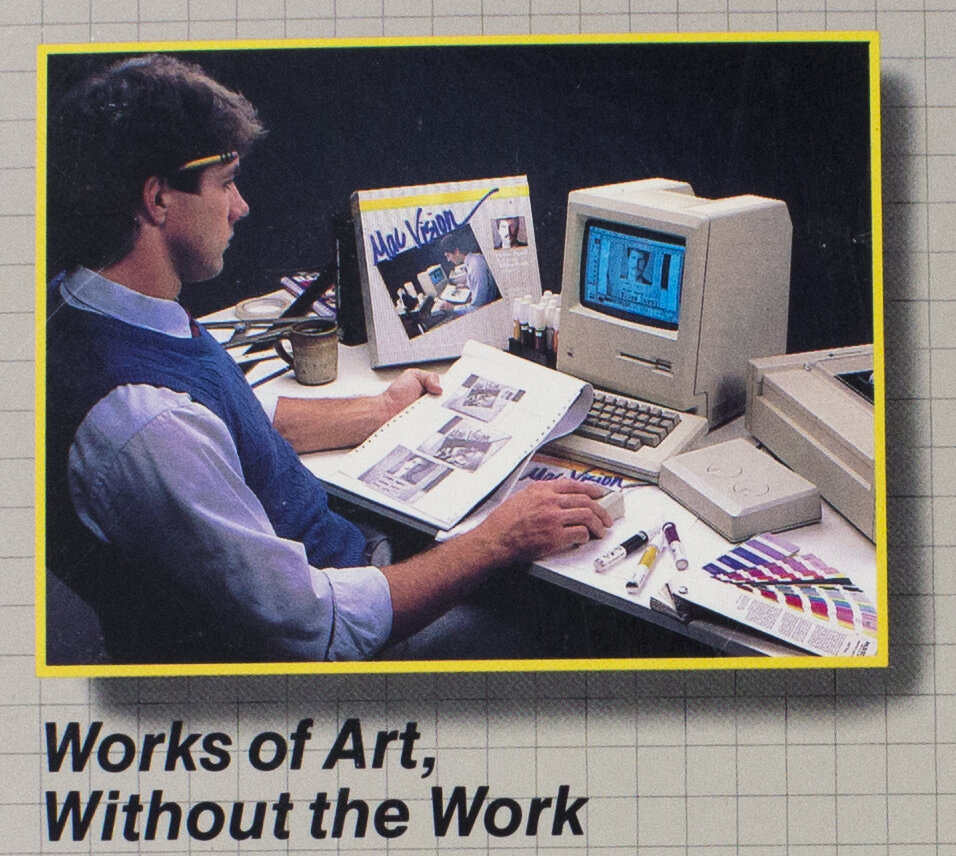
MacVision digitizer
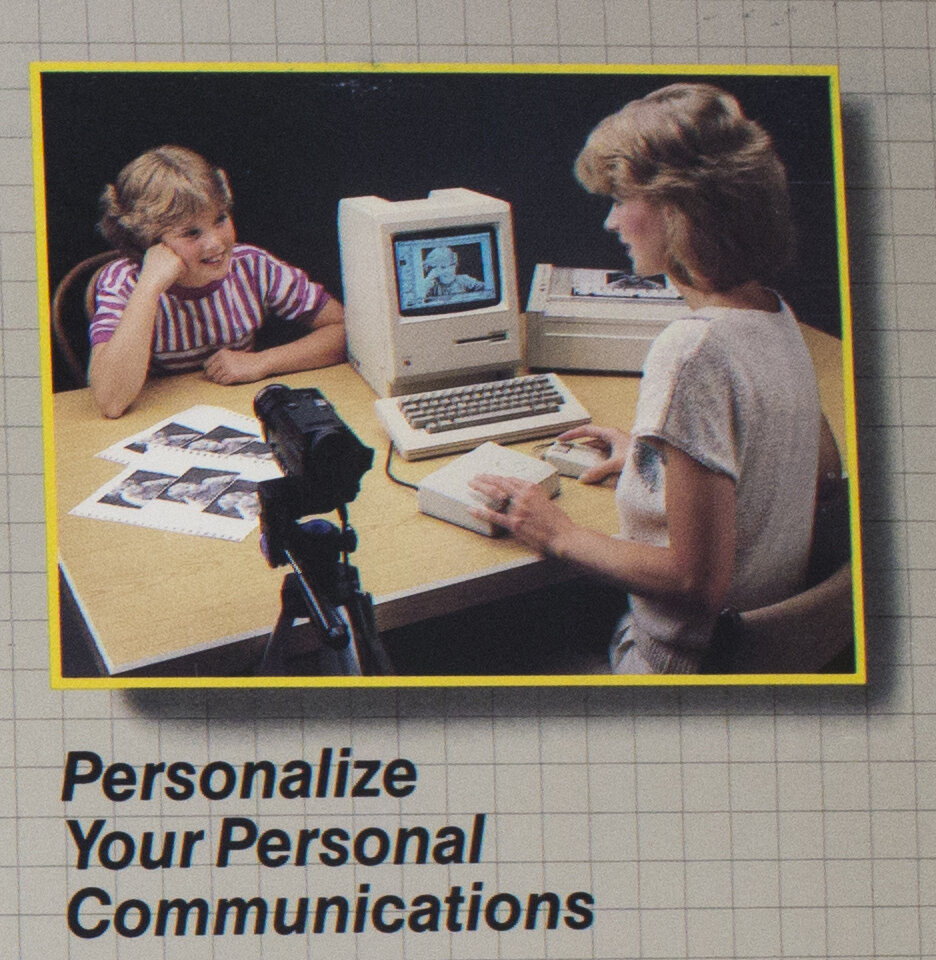
MacVision digitizer
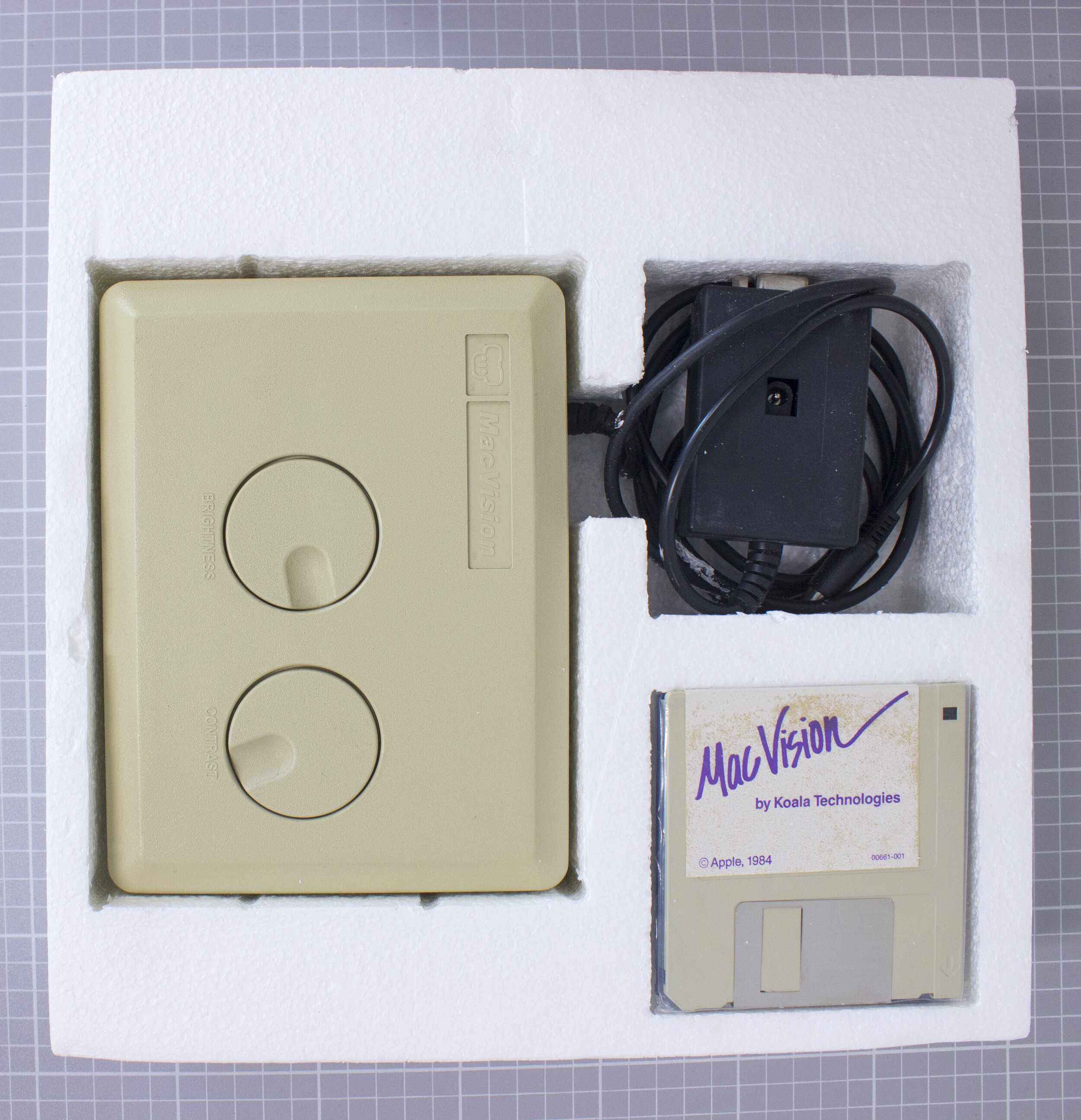
MacVision digitizer harware and software
MacPaint & MacVision (1984)
An excerpt from the documentary Hackers Wizards of the Electronic Age, which documented the Hackers Conference in 1984. This excerpt highlights the Macintosh which had just been released that year, and new software for the Mac Including MacPaint (with Susan Kare demonstrating) and MacVision - an image digitizer (with Bill Atkinson demonstrating).
1985-1986:
The Amiga pushes paint beyond MacPaint mimicry by introducing Deluxe Paint, and Fantavision pushes paint into new territories, by introducing the first tweening and morphing tools for vector images on the Apple II, and eventually versions for the Amiga. The personal computer begins a very tangible move into an accepted tool in the artists studio, and artists like Andy Warhol are seen at events and photoshoots for the Amiga. Other artists like David Hockney, appear in the BBC series Painting with Light, that highlights artists working with digital paint for the first time on a Quantel Paintbox. Early Digitizers like Computereyes branch out to multiple platforms, allowing for wider use of digitized images on home devices.
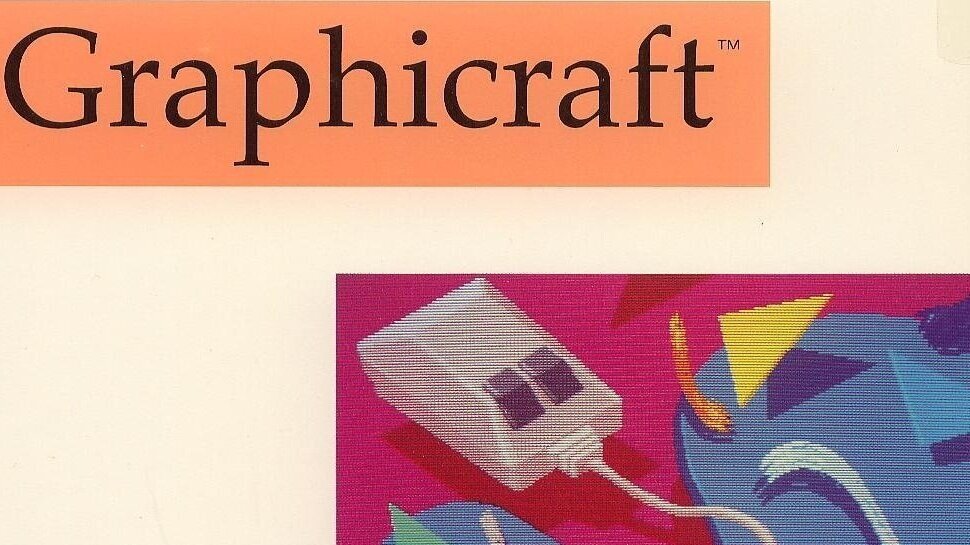
Graphicraft (for Amiga) - Robert J. Mical and Barry Walsh - Island Graphics then sold to Aegis Development for Commodore
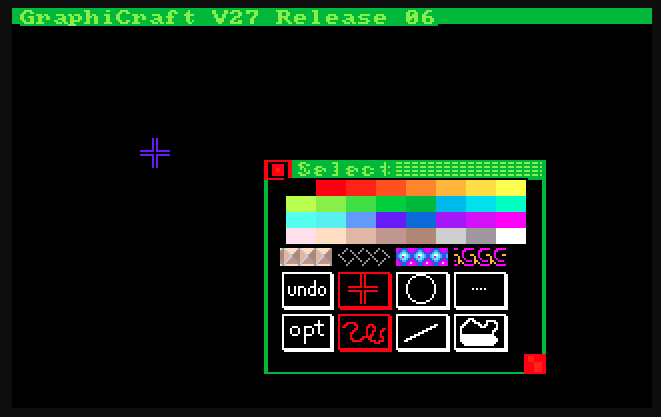
Graphicraft screen with pallettes
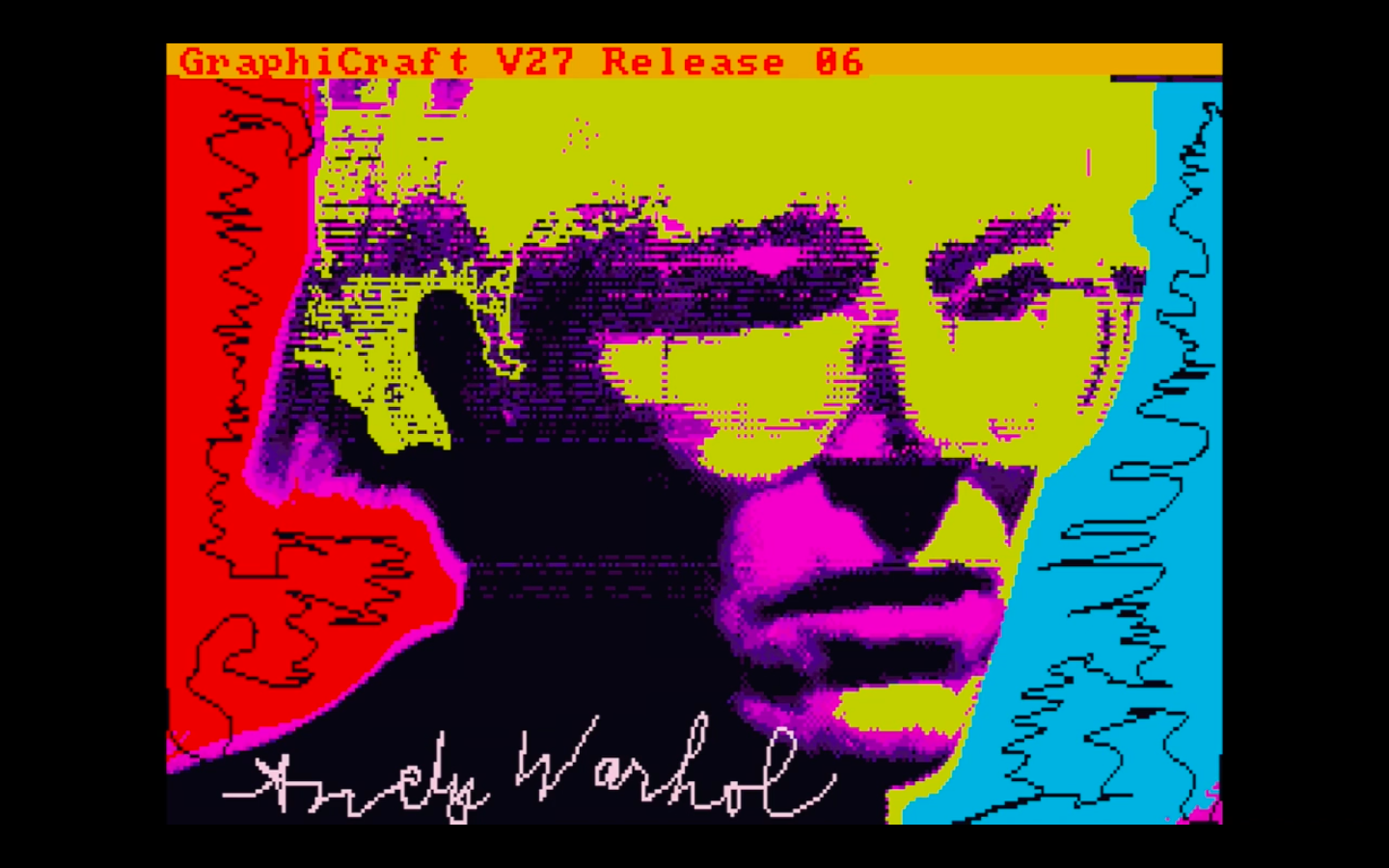
Warhol image created with Graphicraft

Warhol image created with Graphicraft
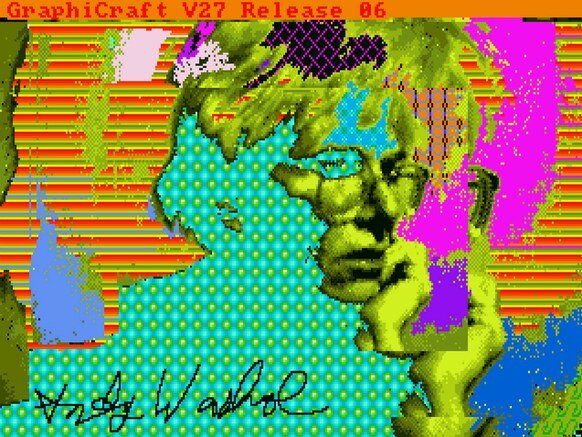
Warhol image created with Graphicraft
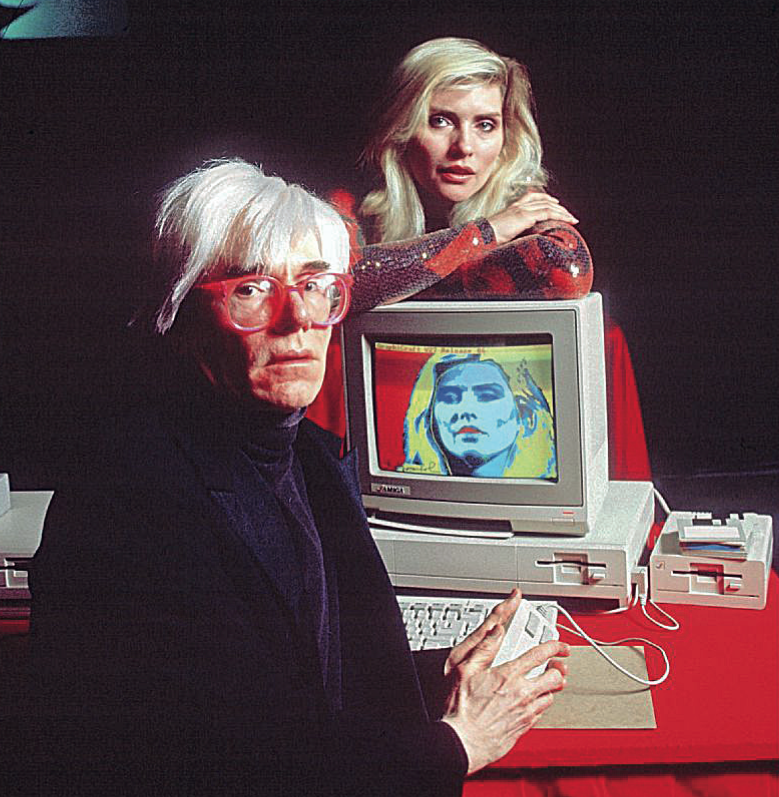
Andy Warhol and Debbie Harry with an Amiga and Graphicraft
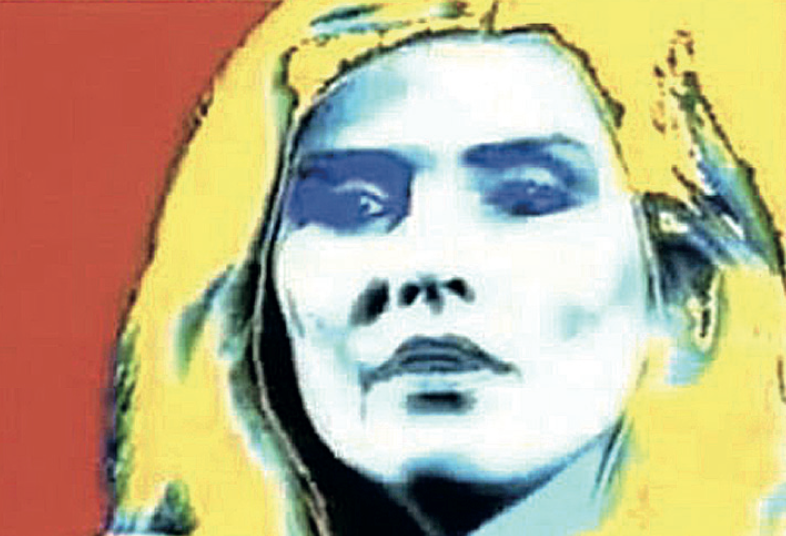
Warhol image of Debbie Harry created with Graphicraft
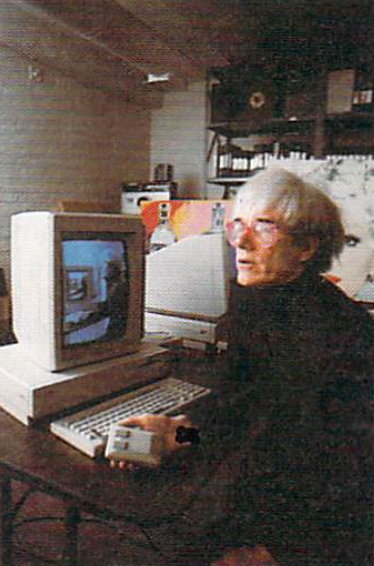
Warhol working with an Amiga
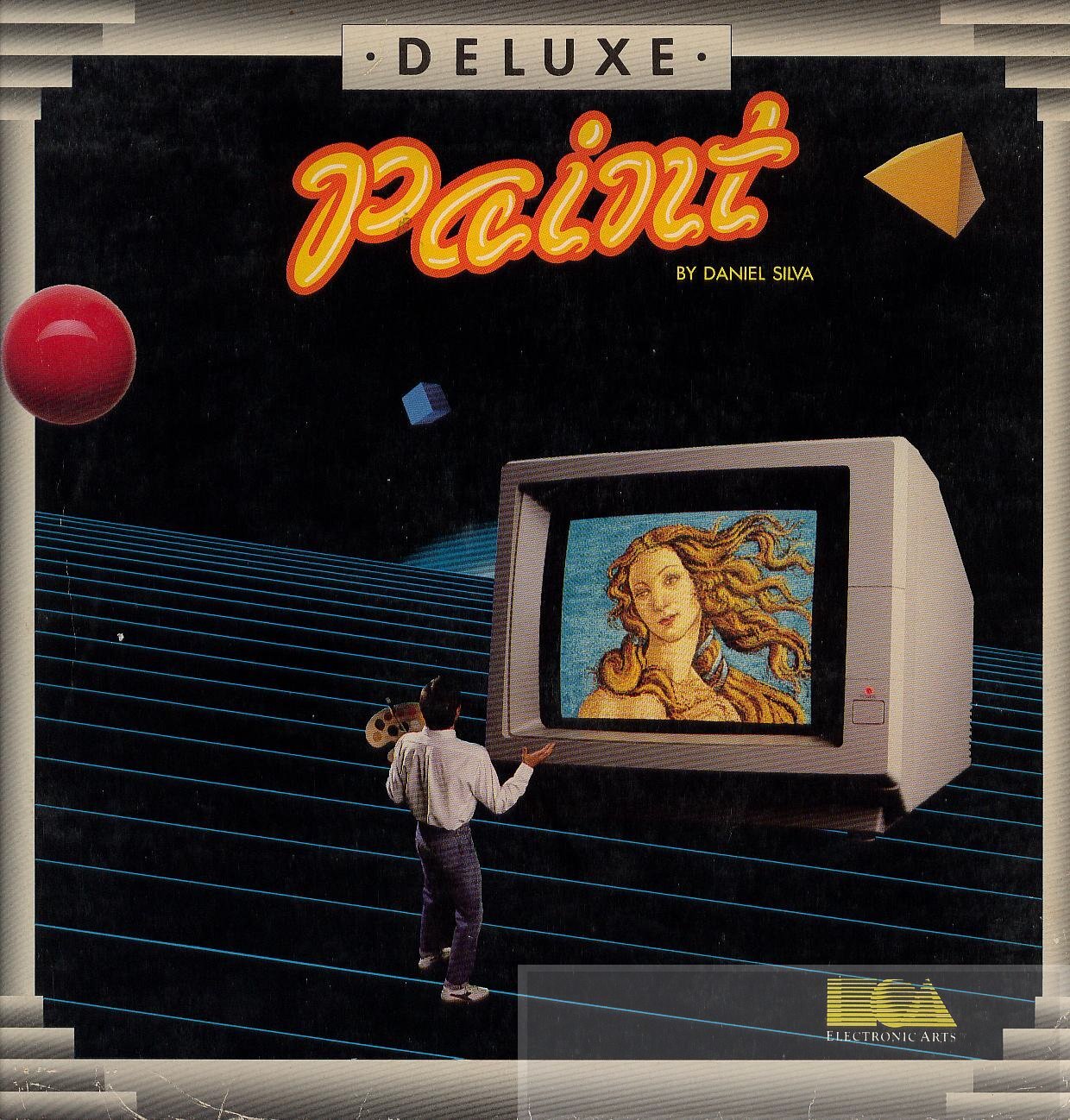
Deluxe Paint I (for Amiga) - Dan Silva - Electronic Arts (San Mateo, CA) (Versions: II 1986 ; III 1987)

Deluxe Paint I
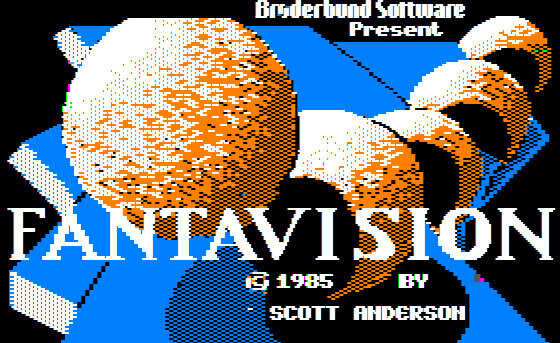
Fantavision (for Apple II) by Scott Anderson - Broderbund Software (San Rafael, CA)


Fantavision colour monitor
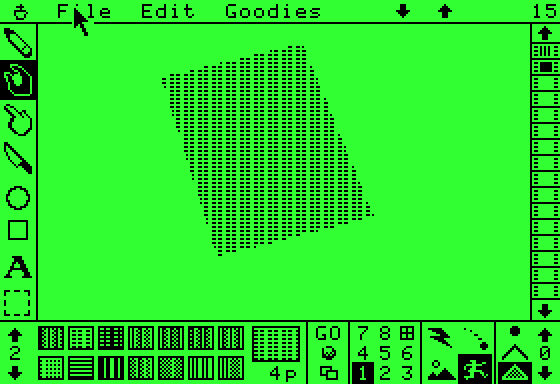
Fantavision monochrome monitor
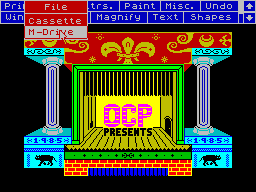
OCP Art Studio - Rainbird : for ZX Spectrum
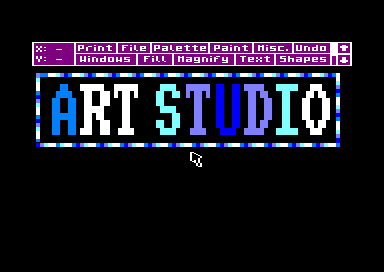
OCP Art Studio
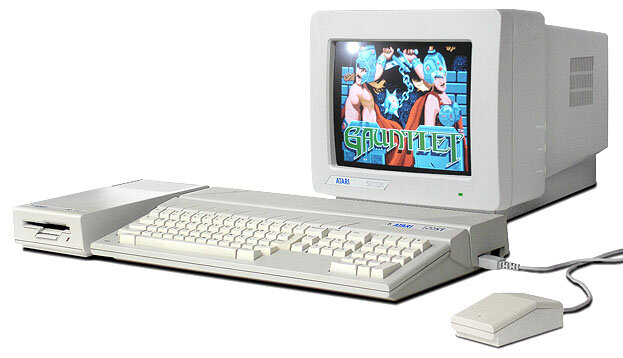
Atari 520st is introduced
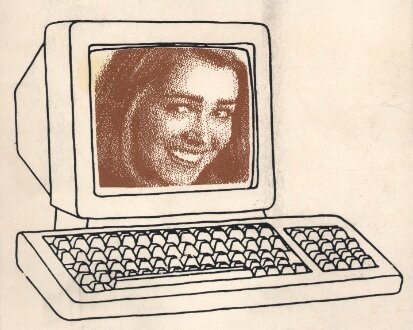
Computereyes for Atari. Digital Vision
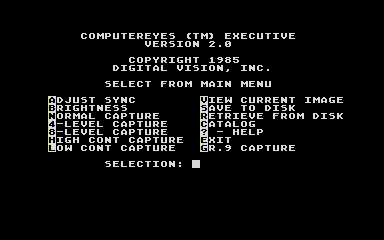
computereyes menu
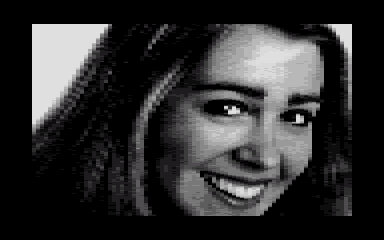
Computereyes 2 level digital image capture
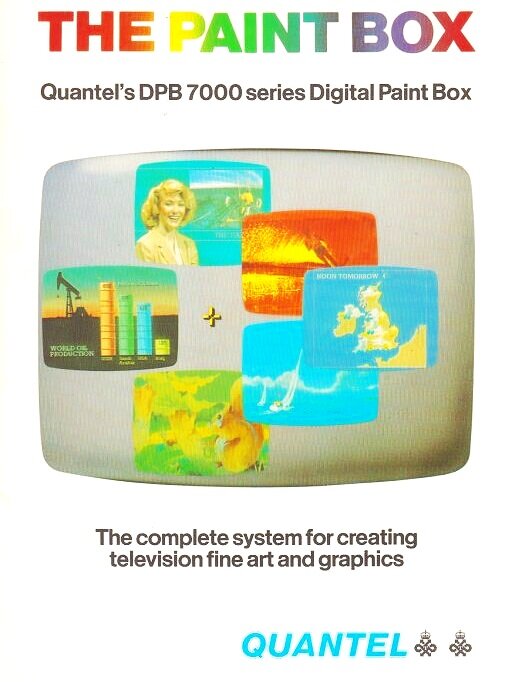

1986 Quantel Paintbox Jennifer Bartlett

1986 work created on the Quantel Paintbox by Jennifer Bartlet
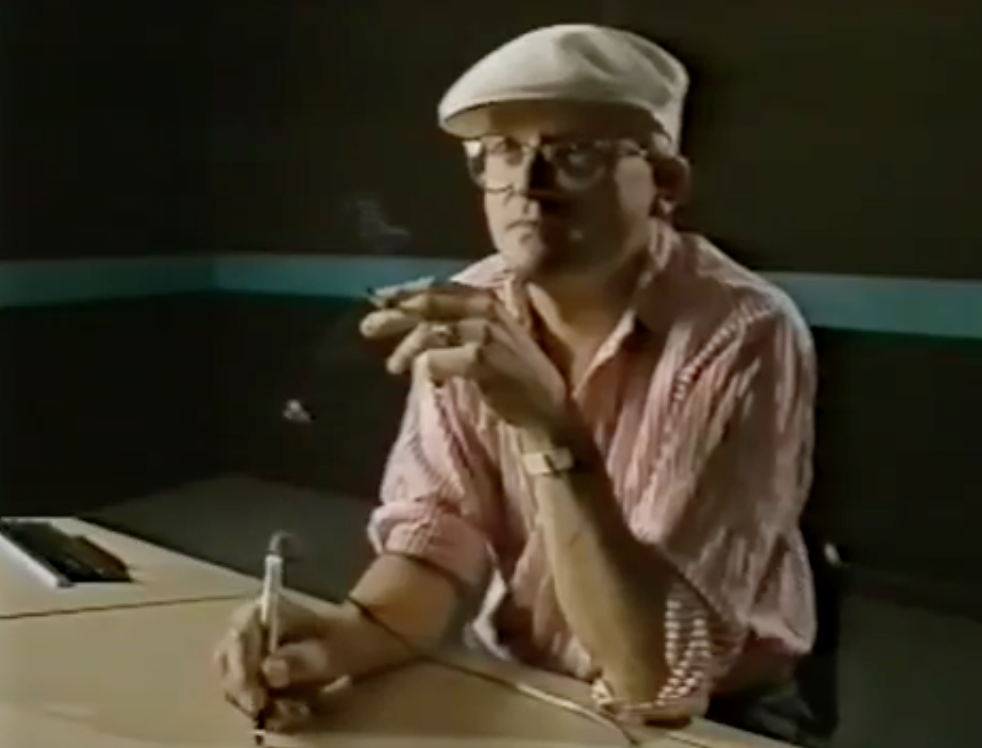
1986 David Hockney with the Quantel Paint Box
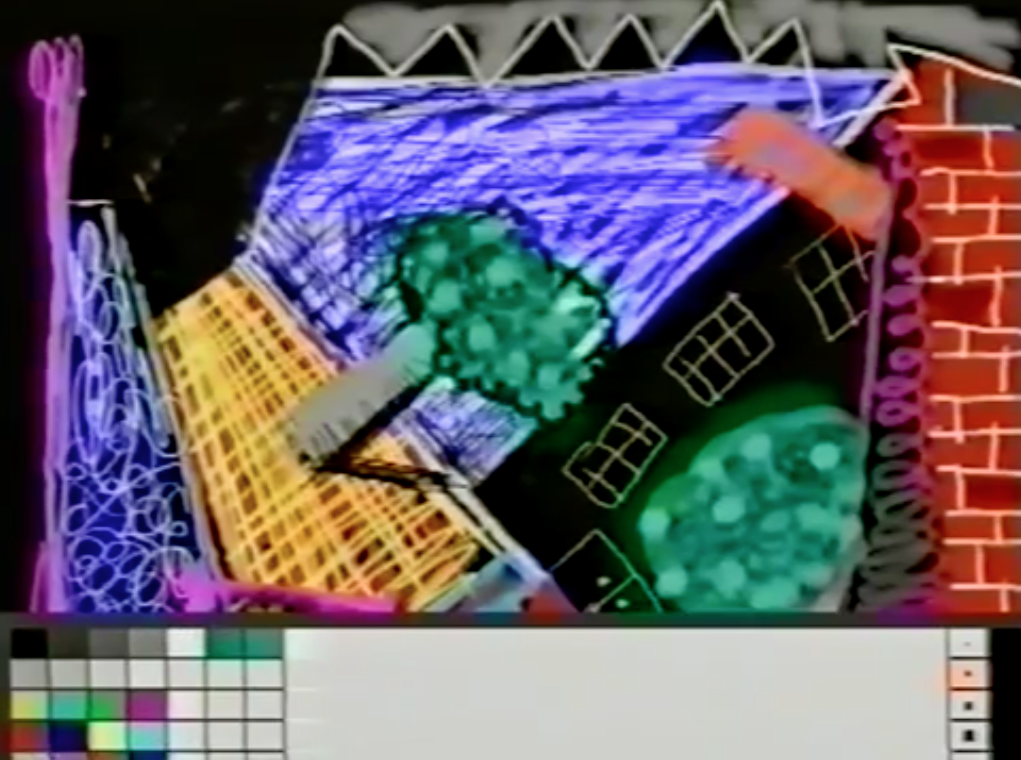
1986 David Hockney

1986 David Hockney
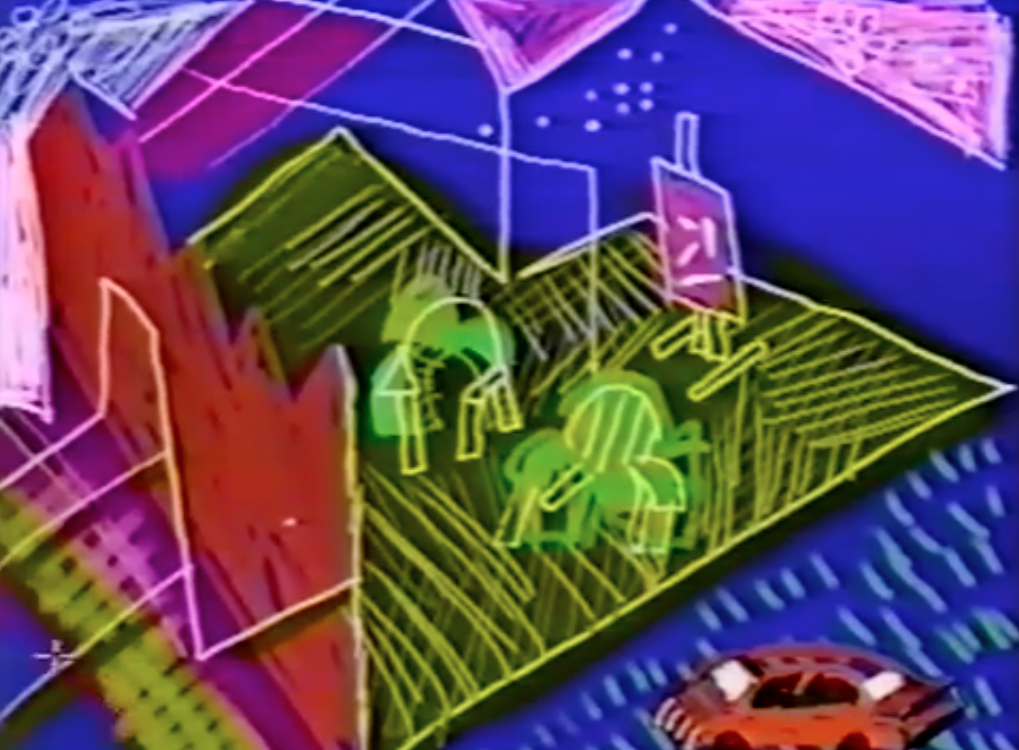
1986 David Hockney
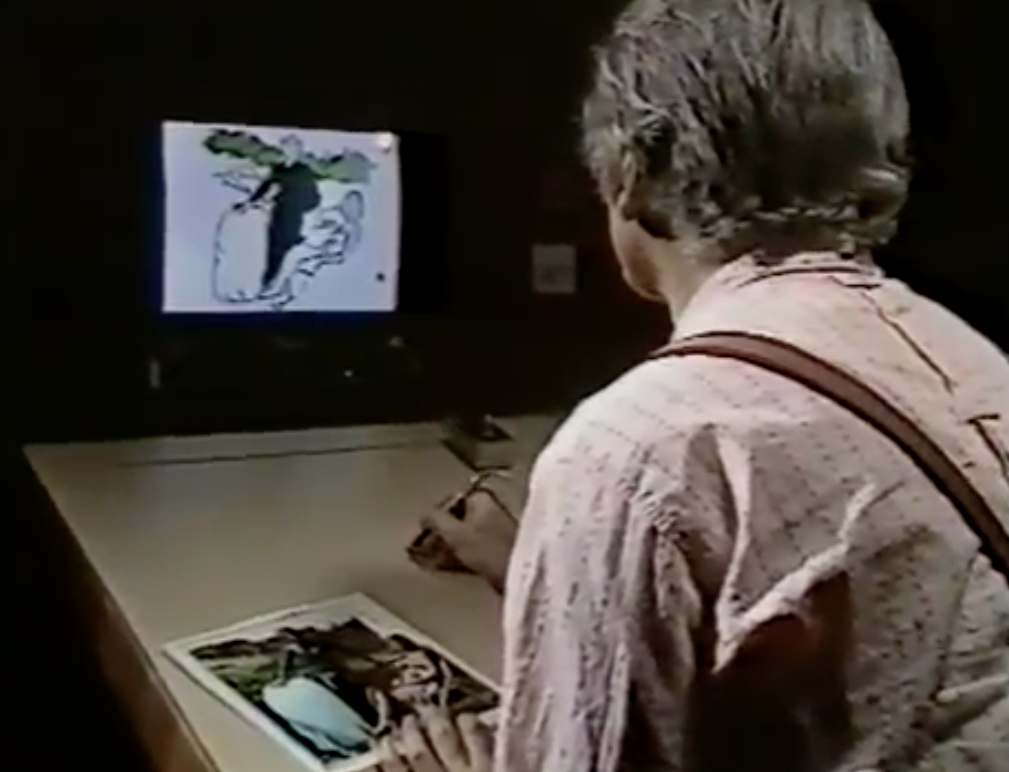
1986 Larry Rivers with the Quantel Paintbox
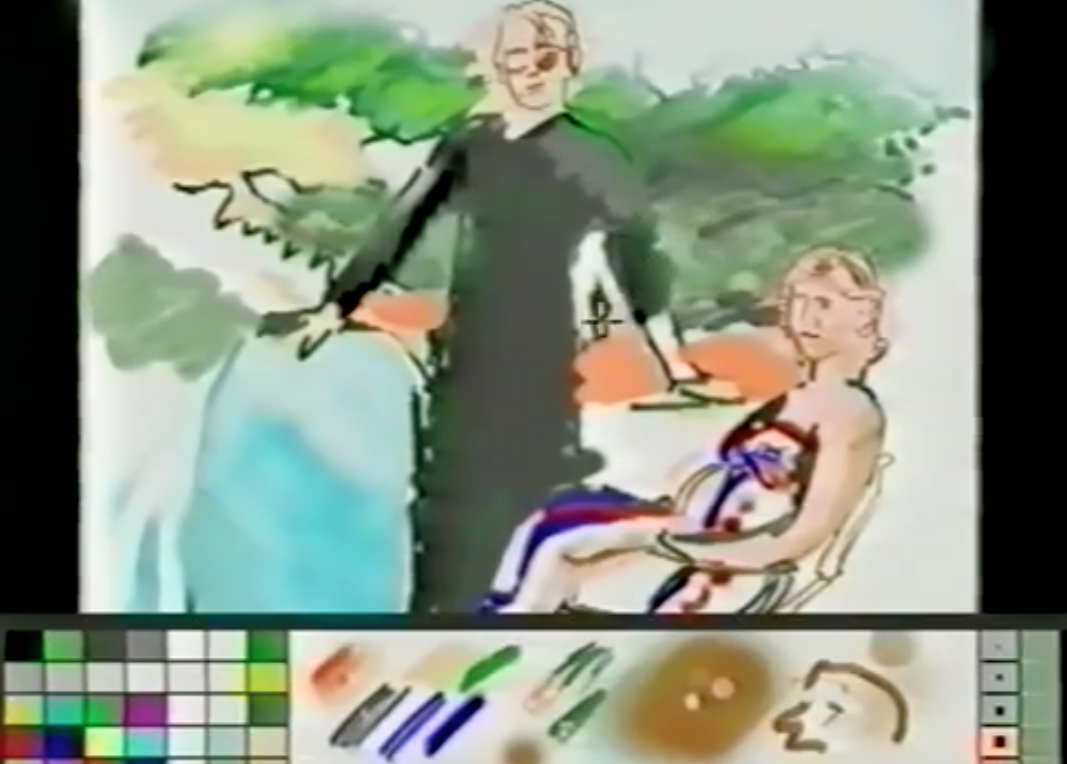
1986 Image created Larry Rivers with the Quantel Paintbox

1986 Image created Larry Rivers with the Quantel Paintbox
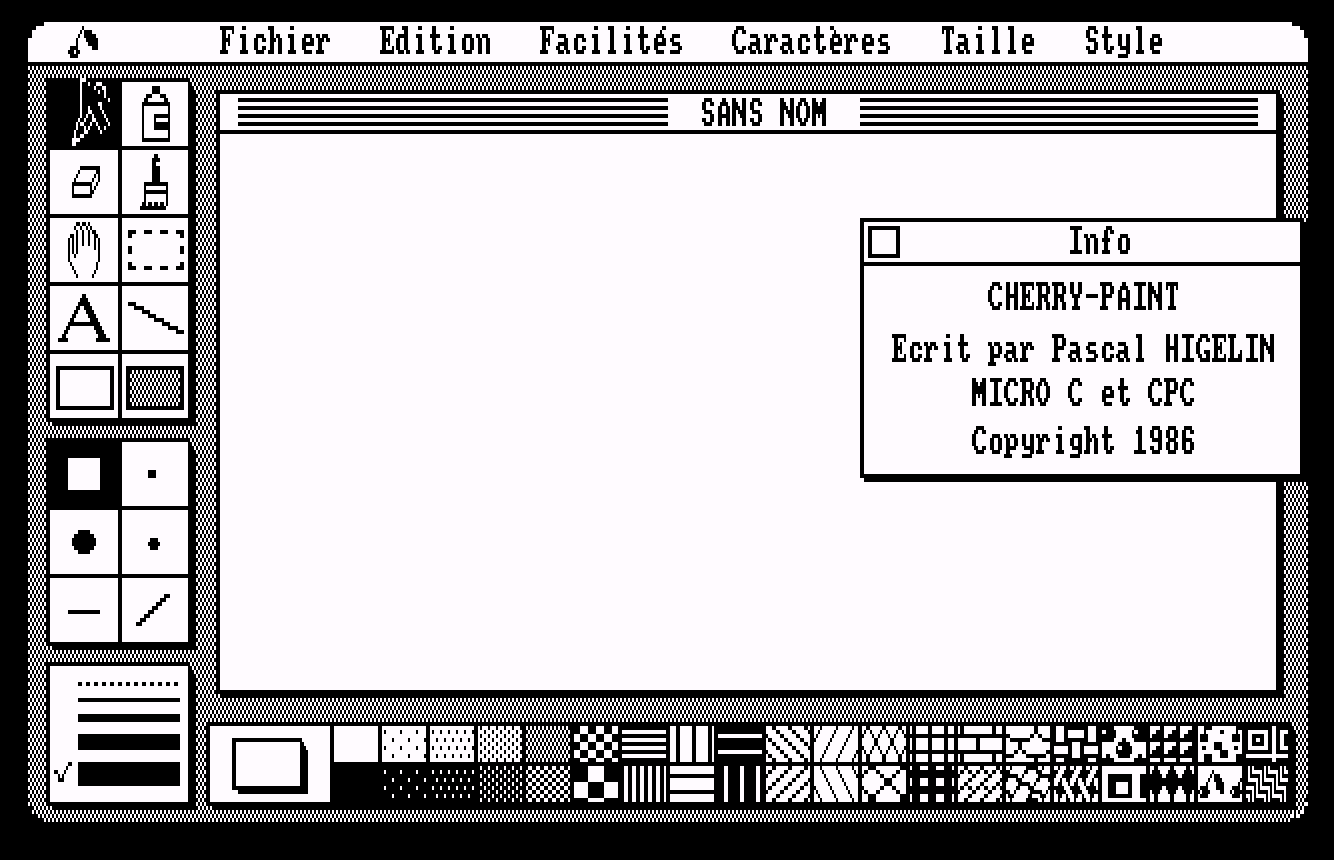
1986 Cherry Paint
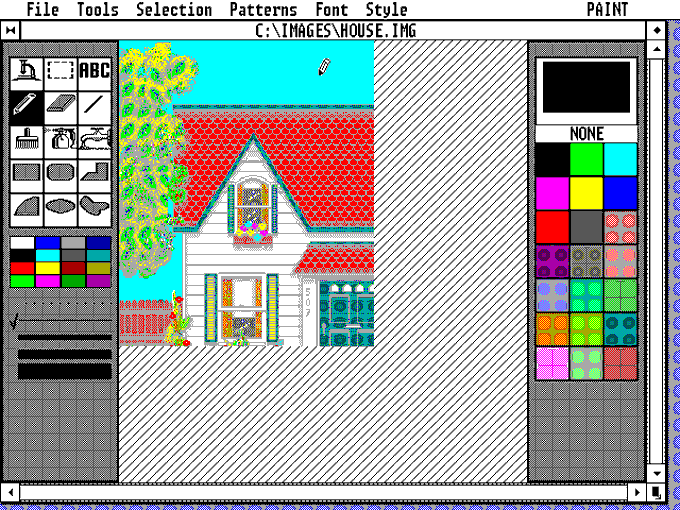
GEM Paint 1.0 Digital Research, 1985

1985 OCP Art Studio Sinclair ZX Spectrum
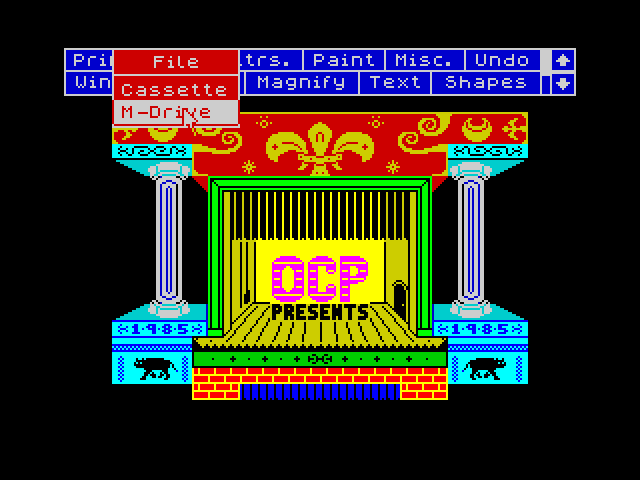
OCP Art Studio ZX Spectrum
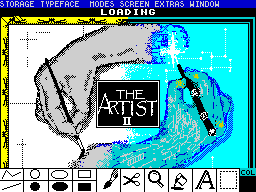
1986 The Artist II Sinclair ZX Spectrum by Bo Jangeborg
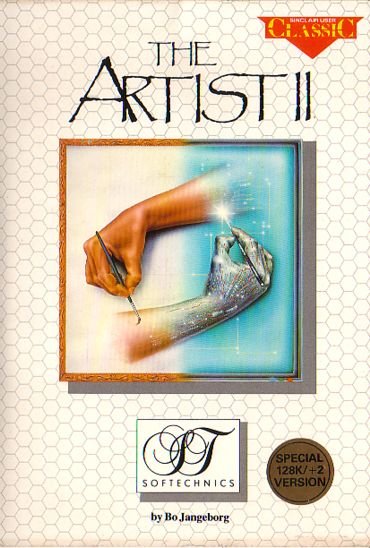
The Artist II
Andy Warhol & the Amiga (1985)
Excerpt from the Launch of the Amiga with Andy Warhol and Debbie Harry. Andy creates an image of Debbie using a digitizer for the Amiga, and ProPaint software.
Fantavision (1985)
Animation created with a Fantavision on an Apple IIe. This the first program for personal computers to allow for tweening and morphing between vector based images.
David Hockney with the Quantel Paintbox (1986)
David Hockney exploring the Quantel Paintbox Graphics System for the BBC 2 documentary series Painting with Light.
Computereyes/2 for Apple IIe Digital Vision Inc (1986)
This video demonstrates capturing a moving subject with a video camera hooked up to the ComputerEyes/2 board on an apple IIe. The slowscan of the image capture allows the subject to create a blended image with three heads in one shot.
1987-1991 :
The features that we now take for granted in current versions of photoshop can be seen in early paint and photo editors like SuperPaint, Ultrapaint and Canvas. The Amiga reaches its zenith with Deluxe Paint and Toaster Paint before its ultimate demise a few years later, while the Atari ST and Apple IIGS create more MacPaint like colour clones before they ultimately become obsolete.

1986 SuperPaint 1.0 (for Macintosh) - by Bill Snider - with Eric Zocher and Charlie Jackson - Silicon Beach Software (San Diego, CA)
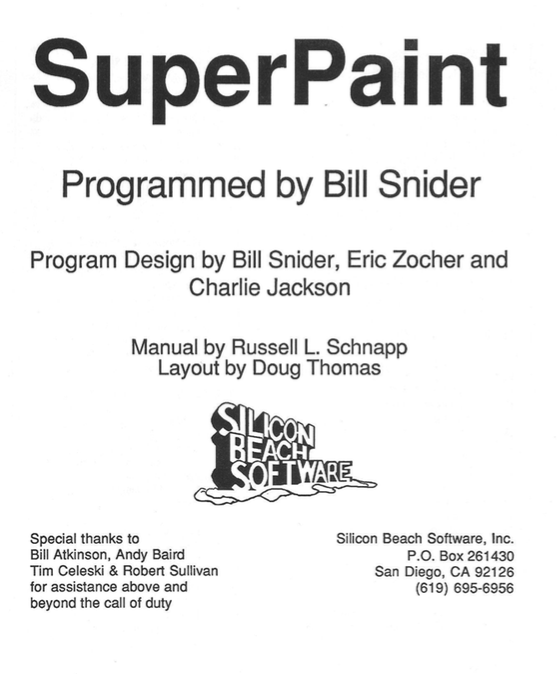
SuperPaint

SuperPaint
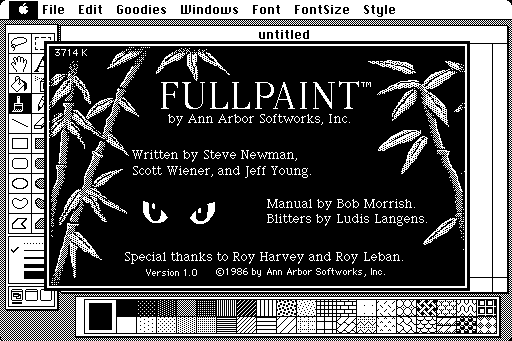
1986 Fullpaint By Steve Newman, Scott Wiener, Jeff Young. Ann Arbor Softworks, Inc
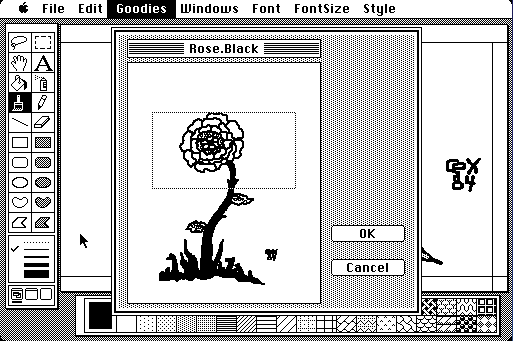
1986 Fullpaint

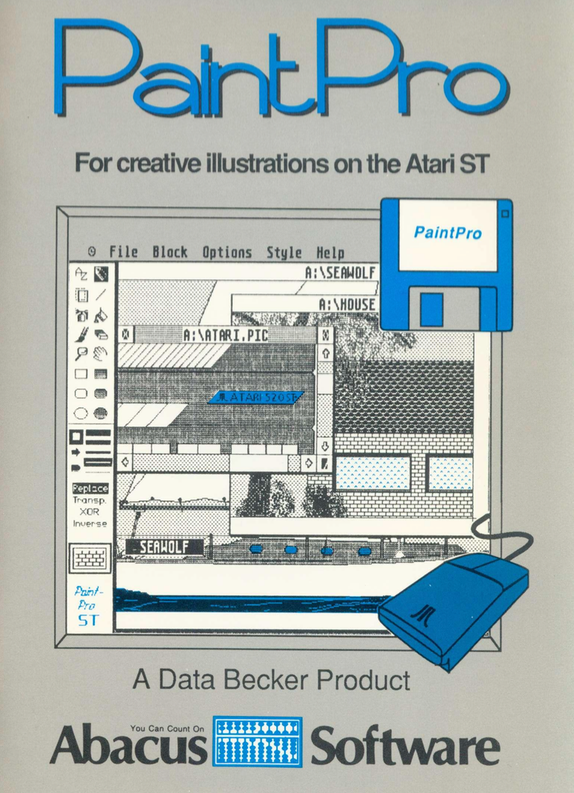
1986 Paint Pro (Atari ST) - By Bernd Lohr Abacus Software (Grand Rapids, MI)
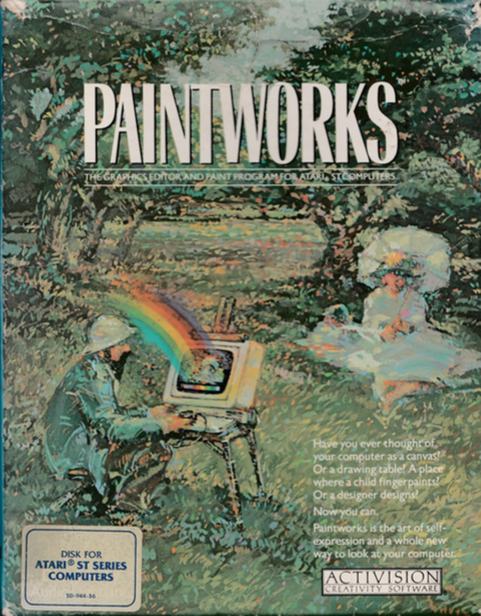
1986 Paintworks (Atari ST) - Forrester, Ric / Hospelhorn, Greg Parfitt, Rick - Activision Inc (Santa Monica, CA)
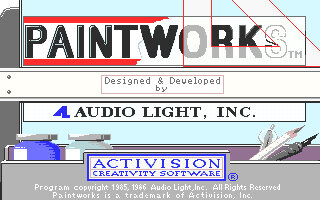
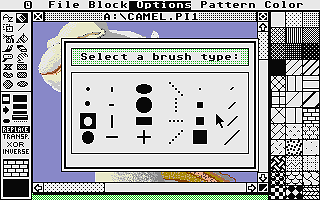
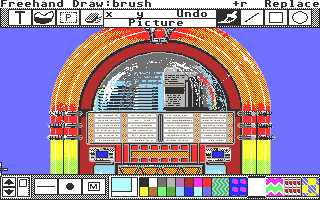
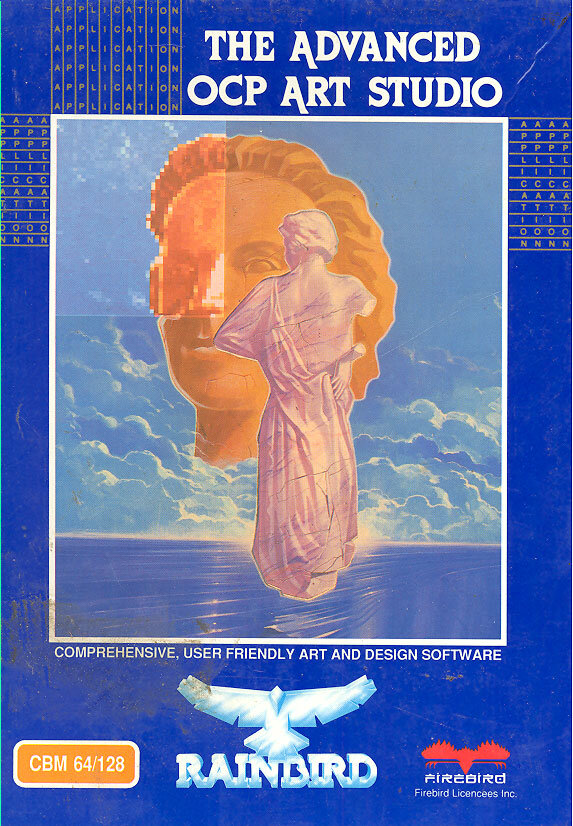
Advanced OCP Art Studio by Dimitri Koveos — Rainbird: Commodore 64 version in 1987 ; Atari ST Version by Chris Hinsley in 1987

1987 Apple IIGS released
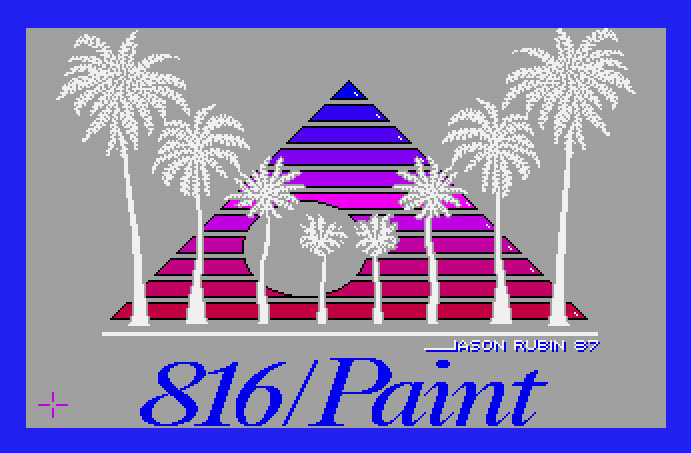
1987 816 Paint (for apple IIGS) - Michael Darooge Vaudeville - Grand Rapids
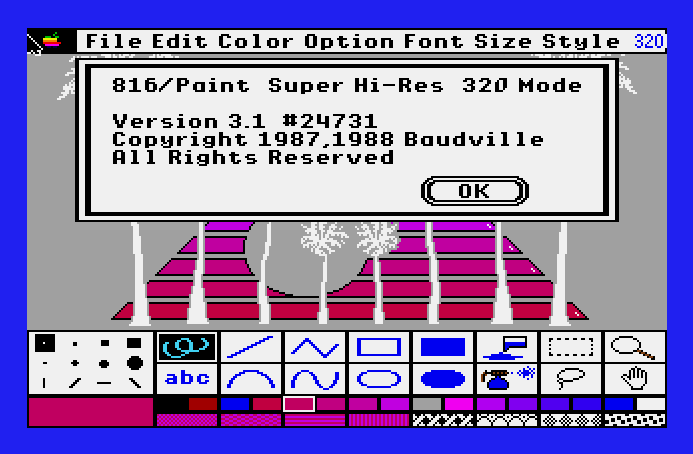
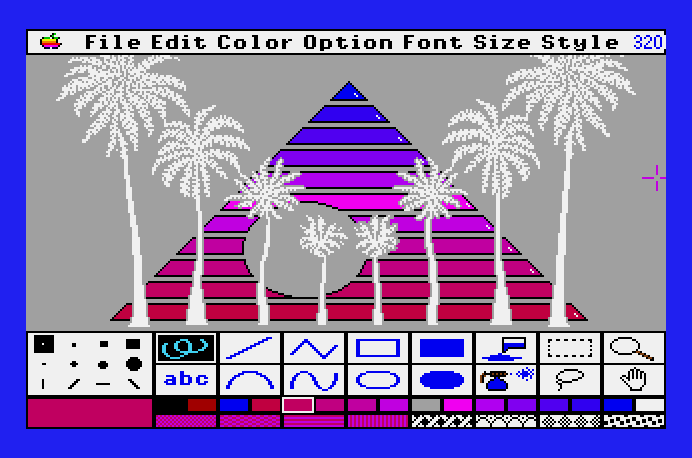
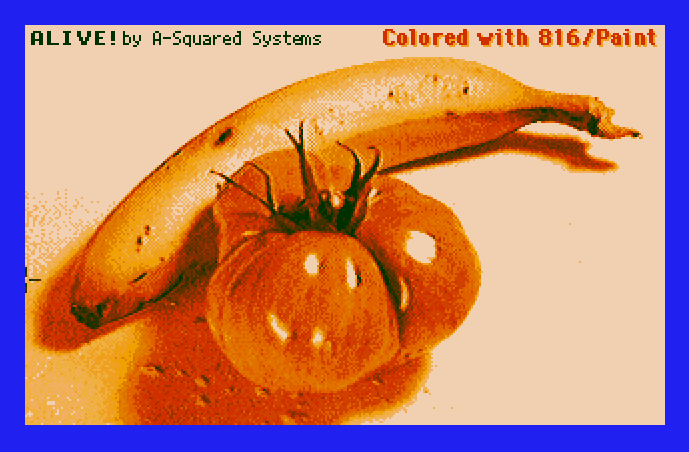
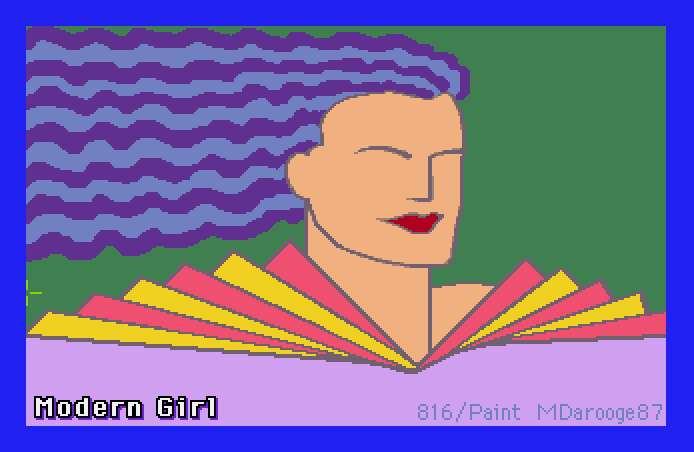
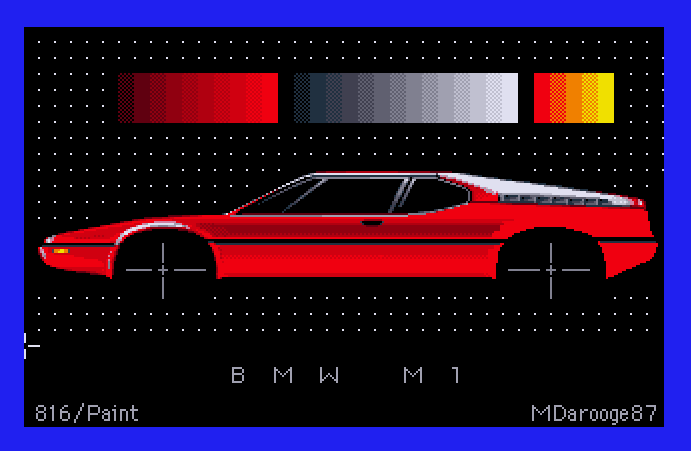


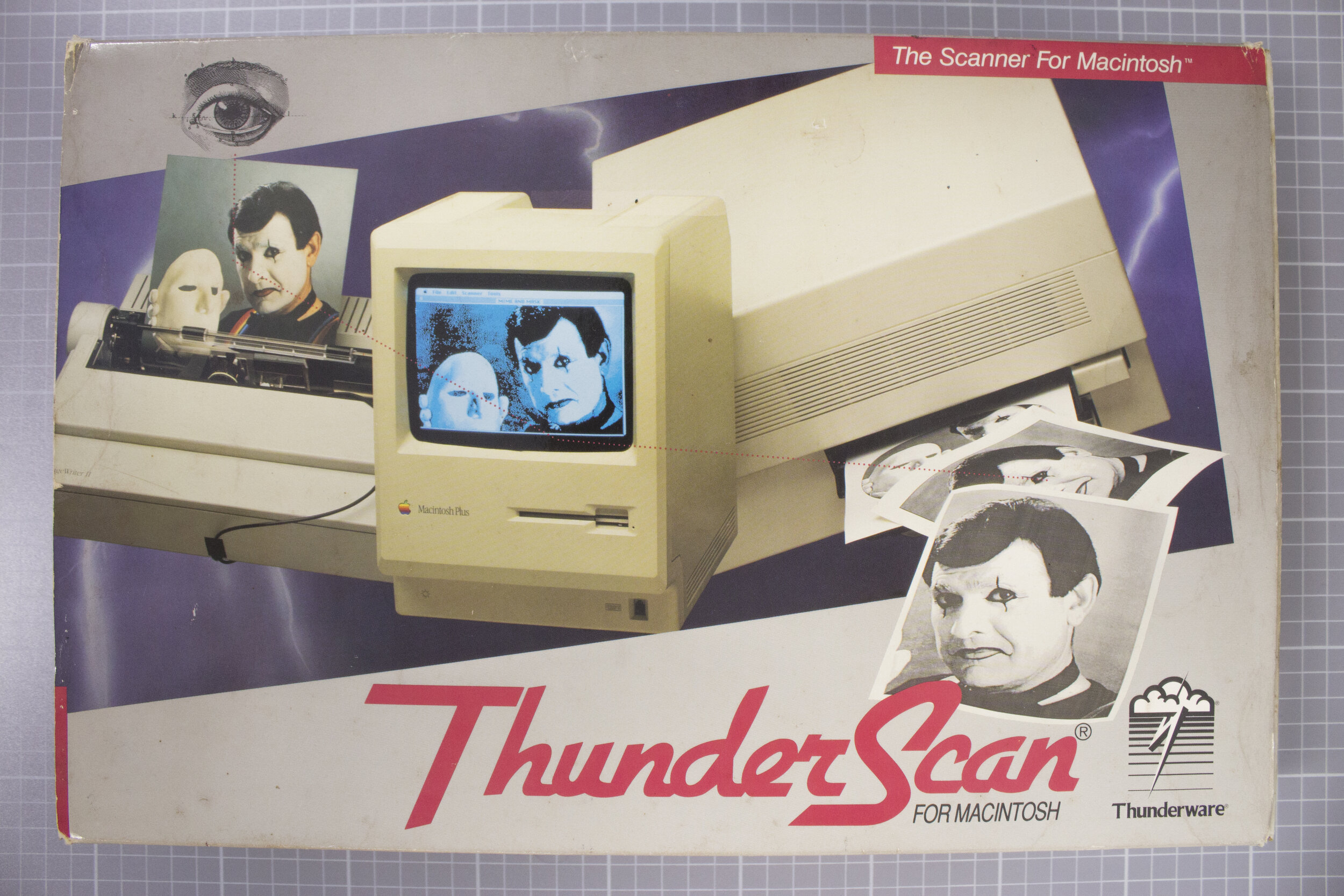
1987 Thunderscan scanner for Macintosh
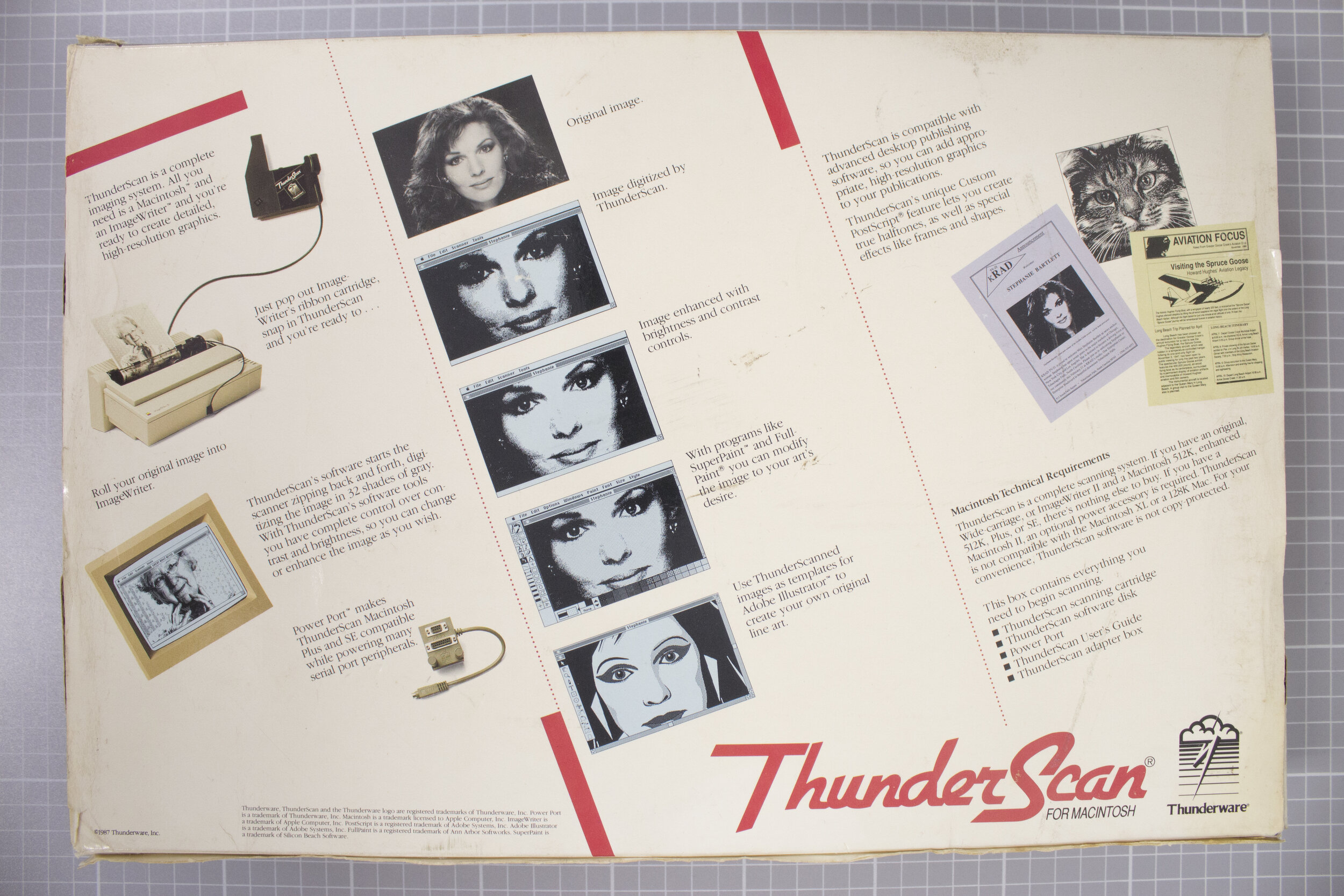
1987 Thunderscan scanner for Macintosh
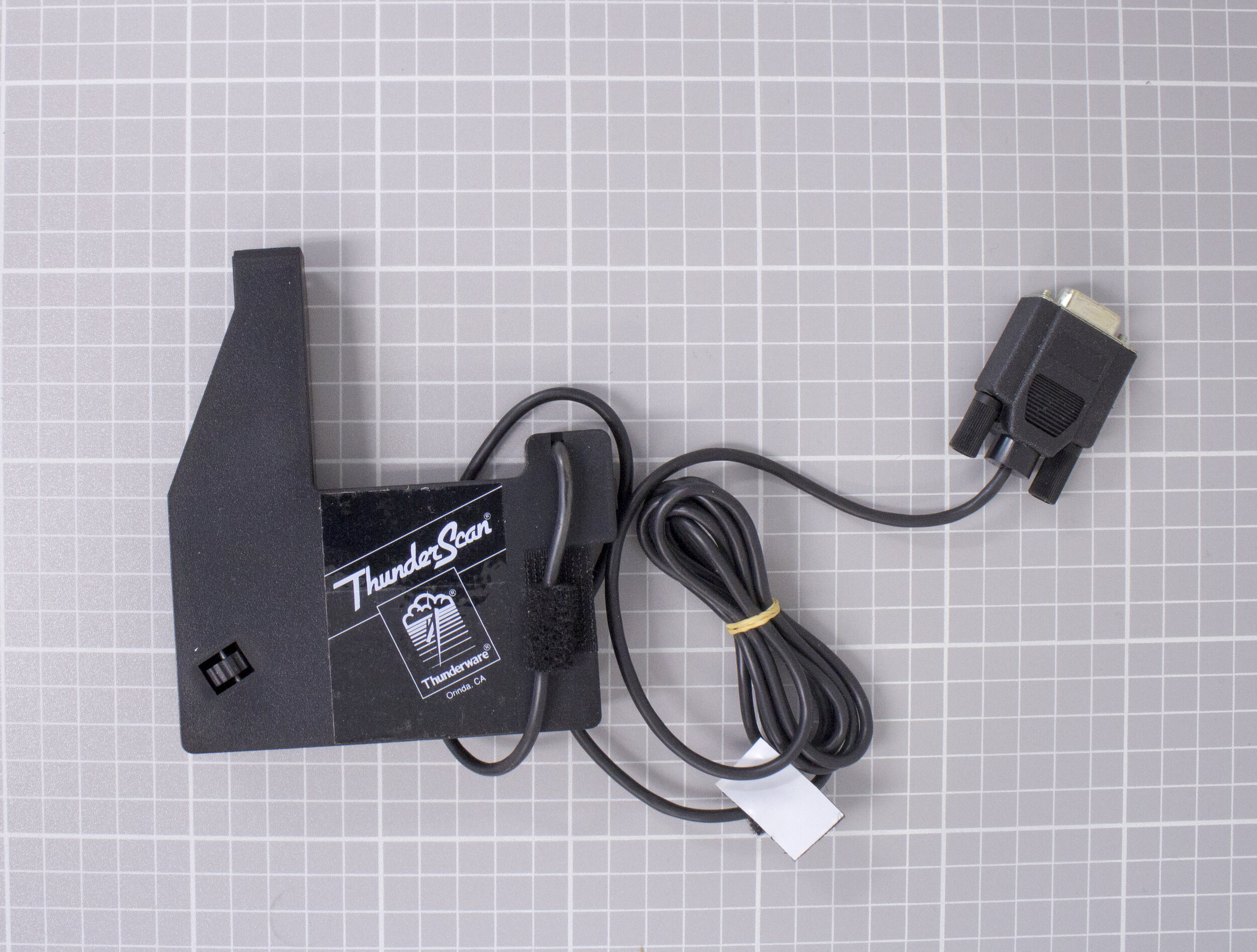
1987 Thunderscan scanner for Macintosh

1987 Adobe Illustrator Mike Schuster, Bill Paxton, and John Wasneck. Adobe Systems, Inc.

1987 Deluxe Paint II. Dan Silva, Electronic Arts, Inc.
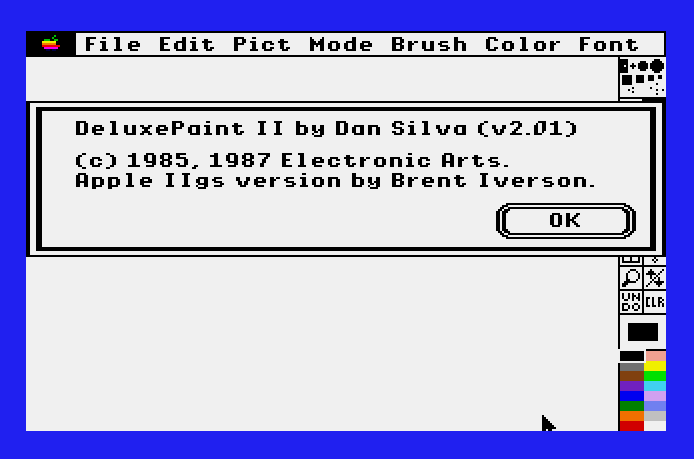
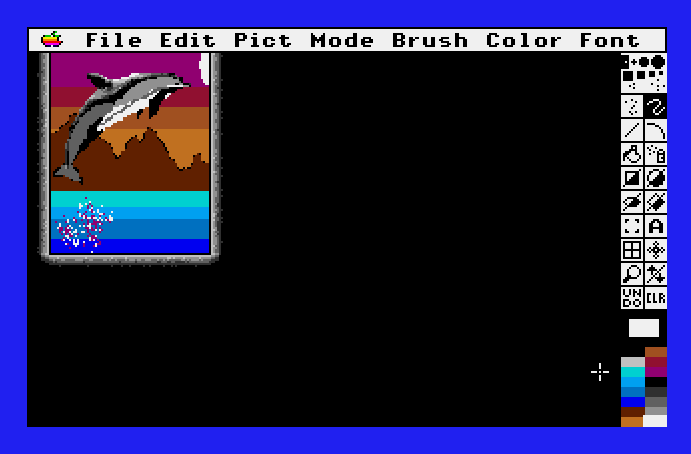


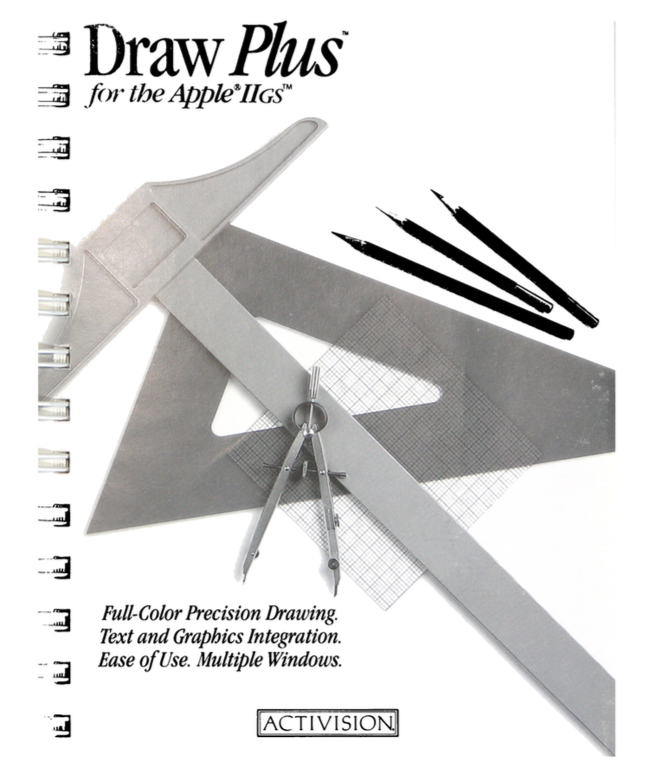
1987 Draw Plus - Henri Lamiraux - Version Soft - Activision
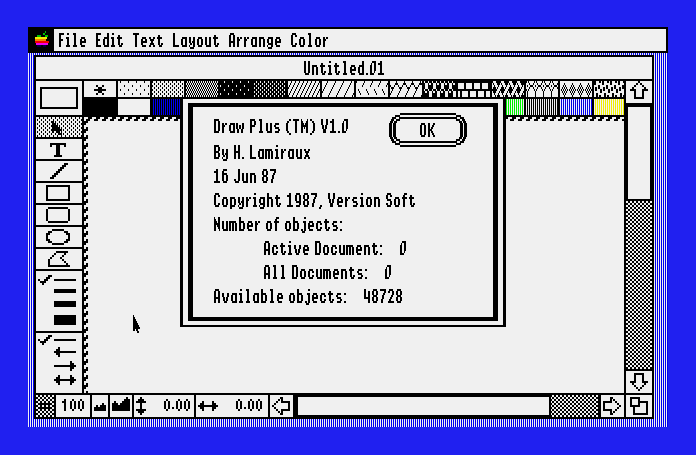
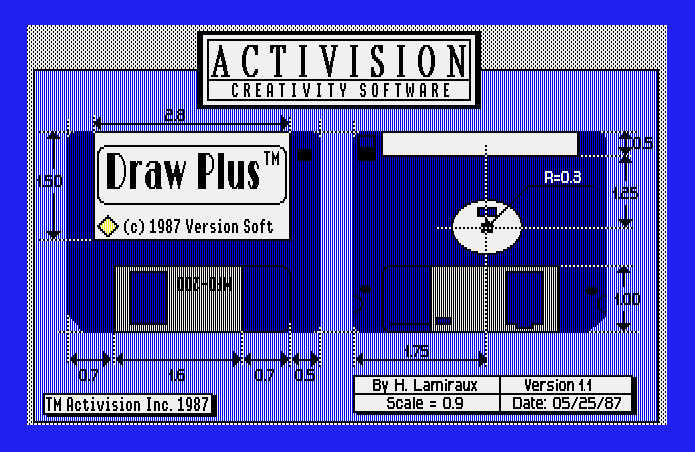

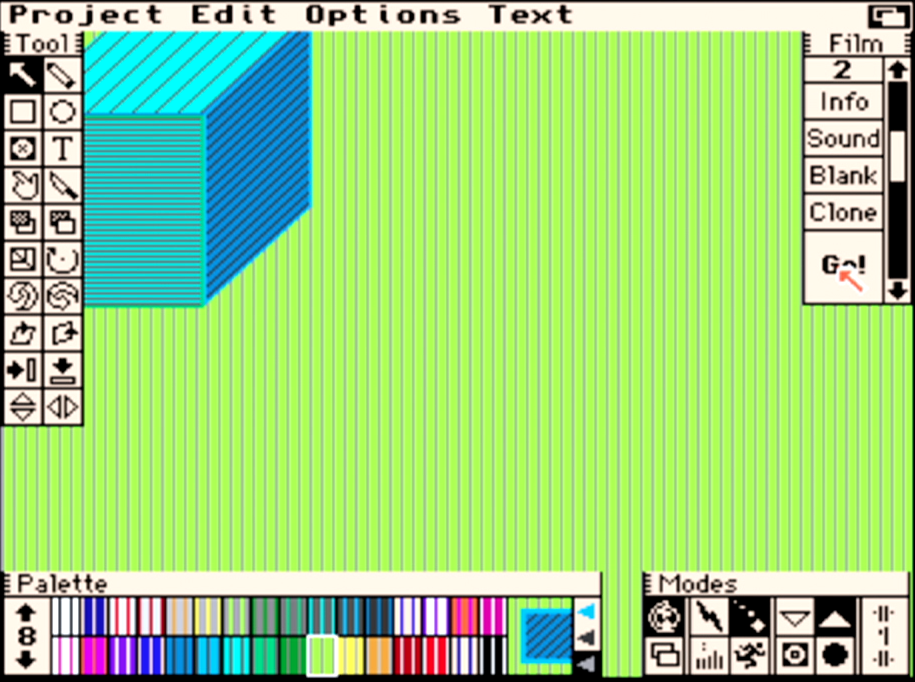
1988 Fantavision for Amiga.
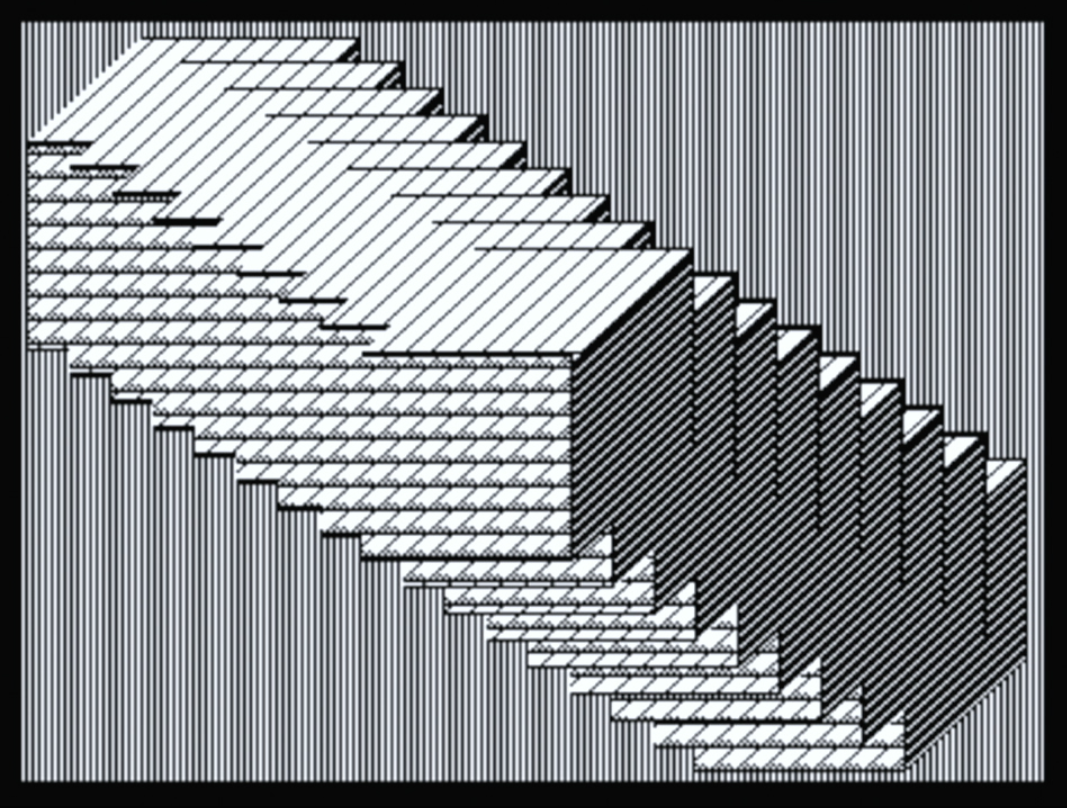
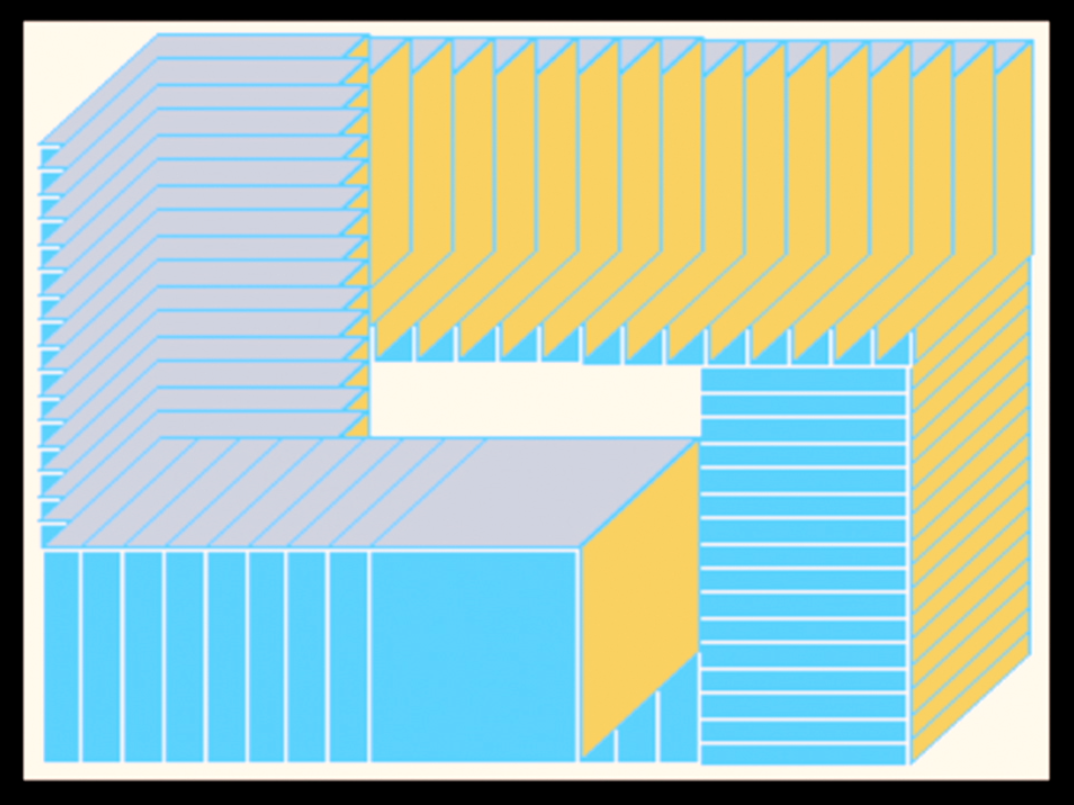
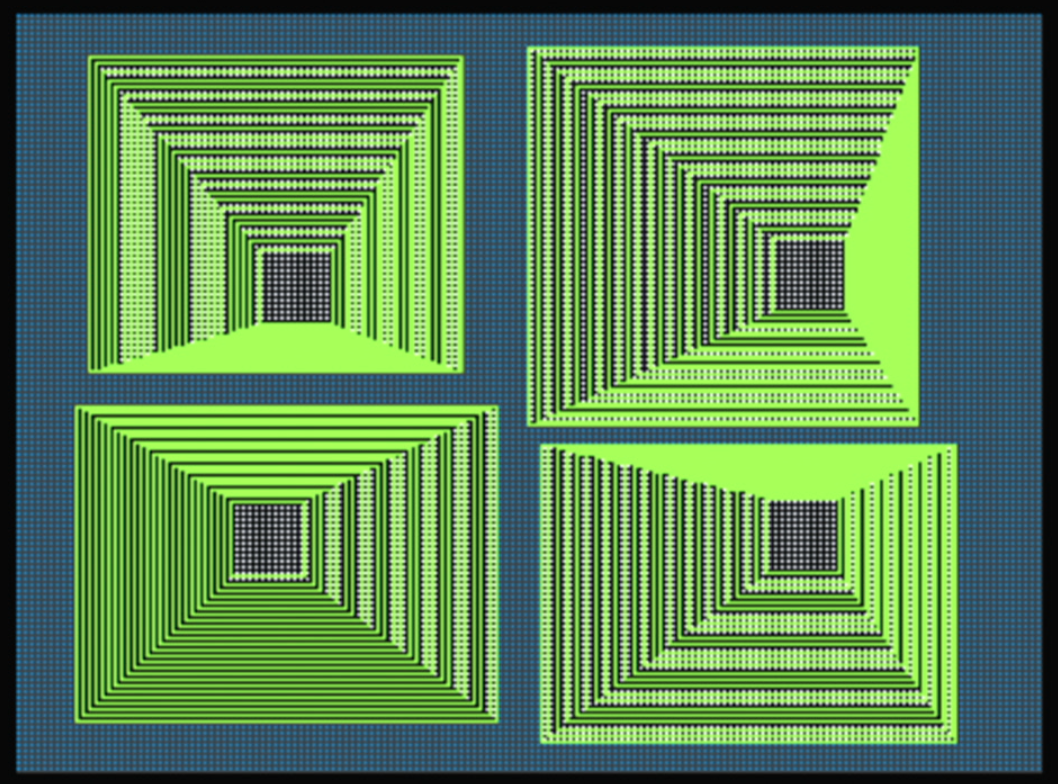
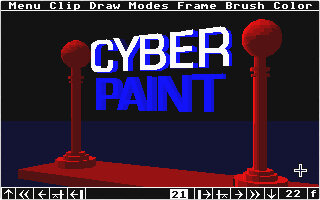
1987 CyberPaint 1.0 – Atari ST Jim Kent - Dancing Flame/Antic. San Francisco
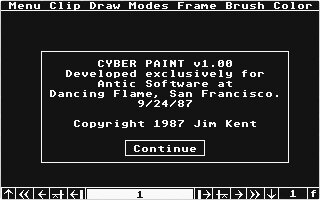
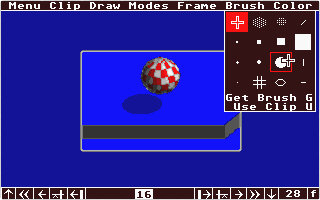
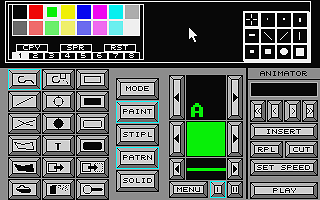
1987 Quantum Paint (Atari ST) - by David T. Jones - Eldersoft (Essex, UK)
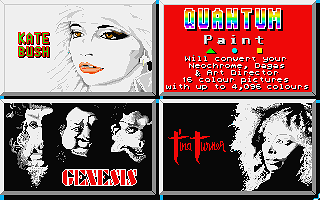
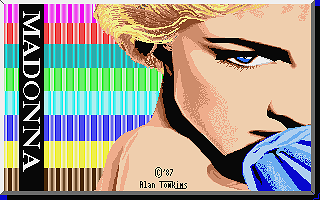
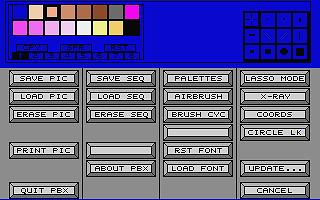
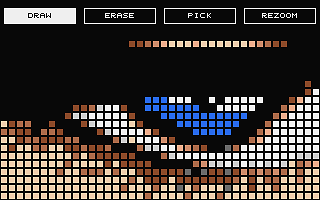

Paintworks Gold (for Apple IIGS) - Luc Barthelet and Henri Lamiraux of Version Soft, Inc. - Activision

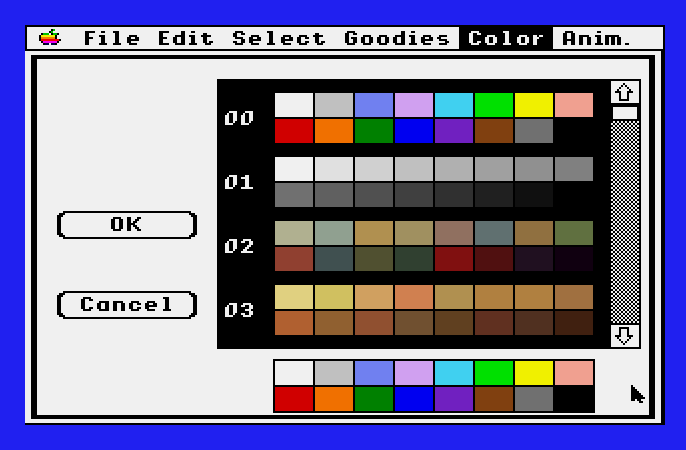
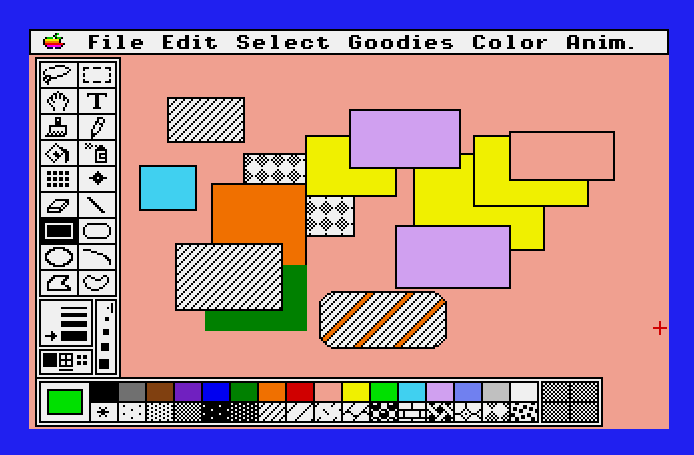
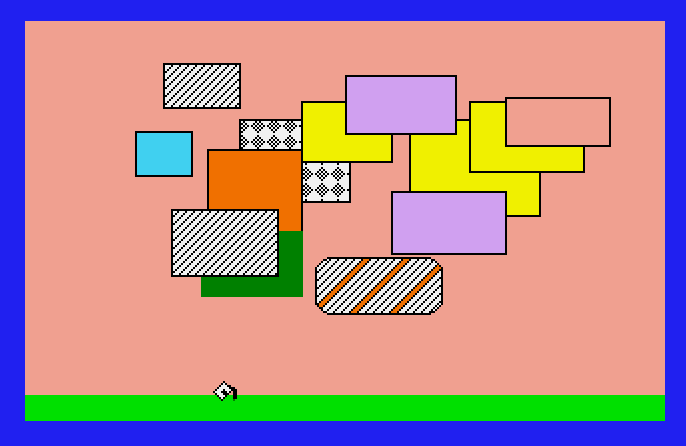
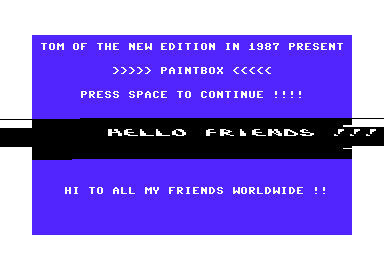
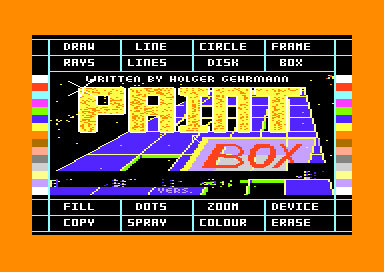
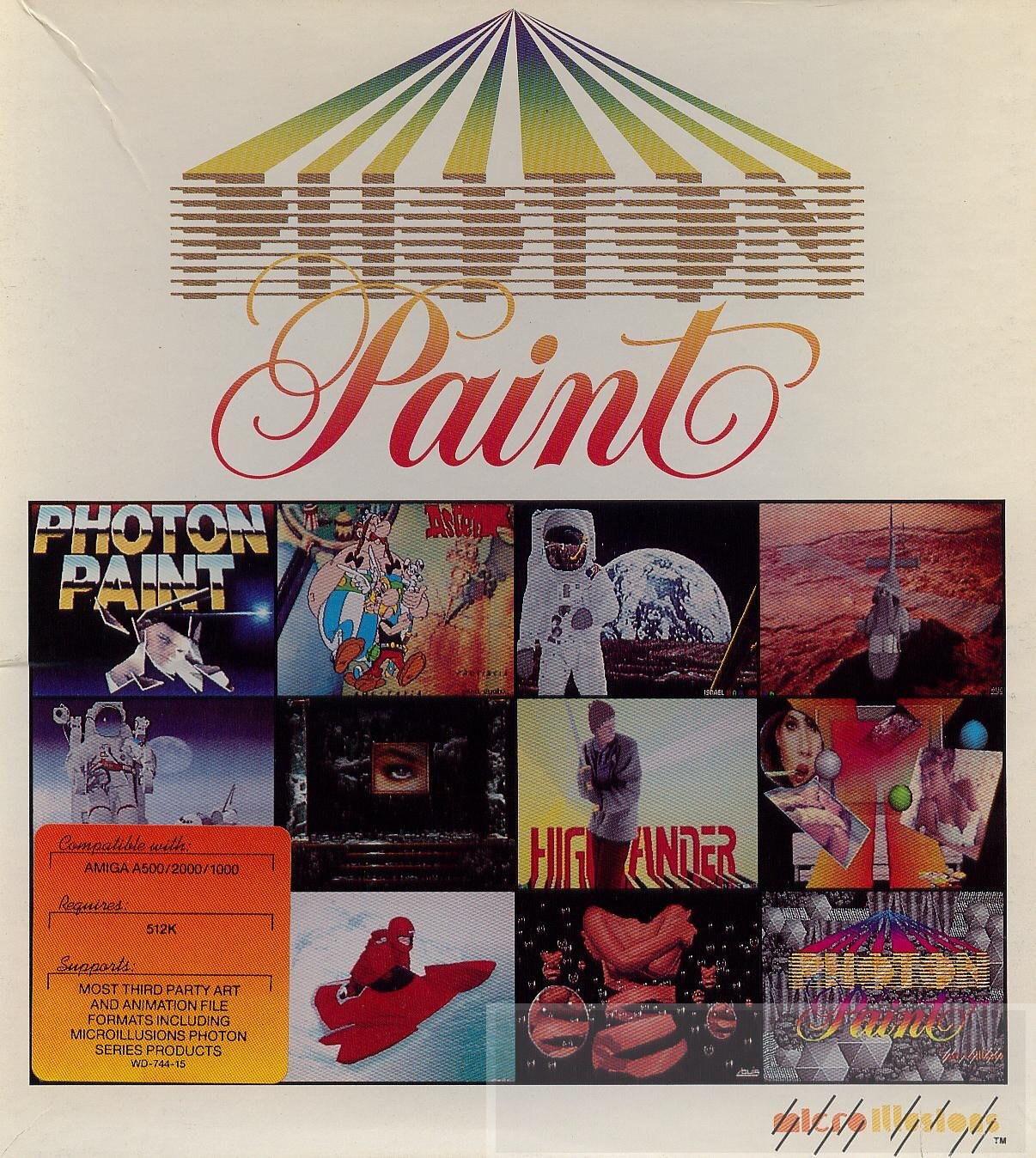
Photon Paint (for Amiga and Macintosh 1988) - by Oren Peli and Yuval Goldstein - BazboSoft! and MicroIllusions (other versions in 1988, ’89)
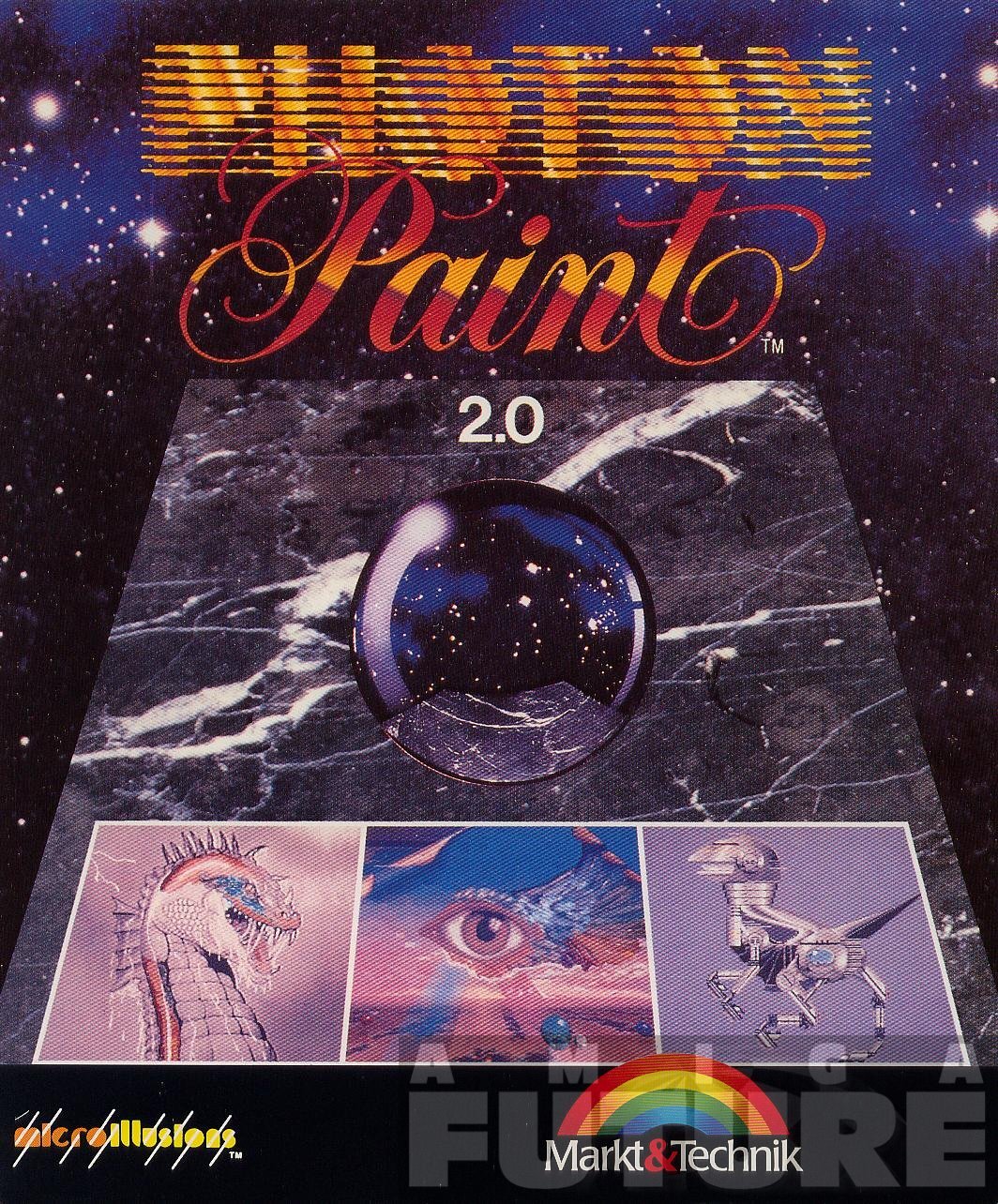
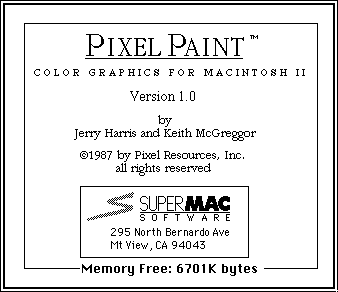
1987 Pixel Paint (macintosh) - Jerry Harris and Keith McGregor - SuperMAC Software (MT View, CA)
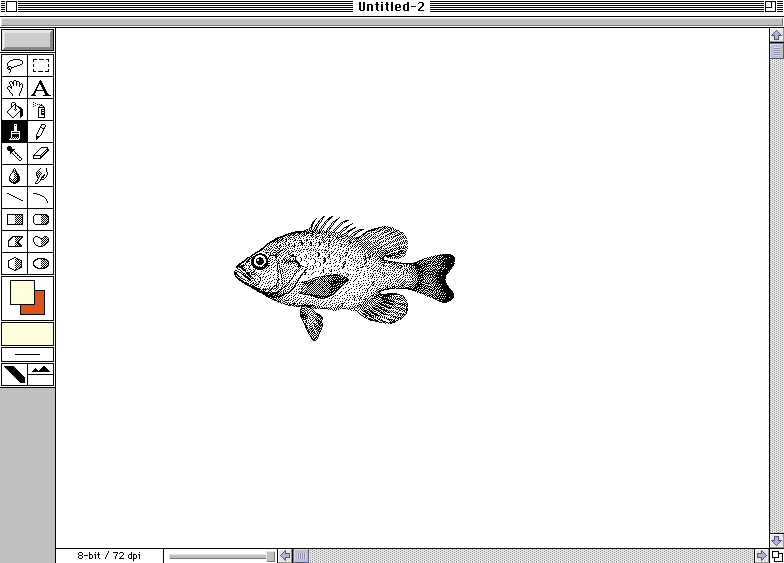
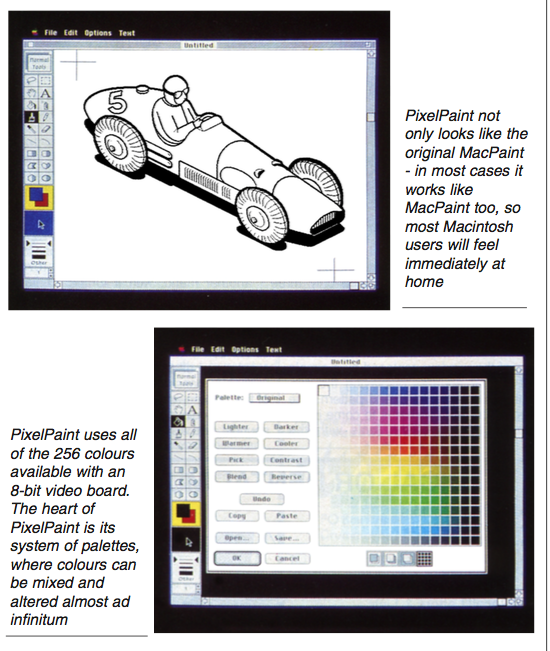
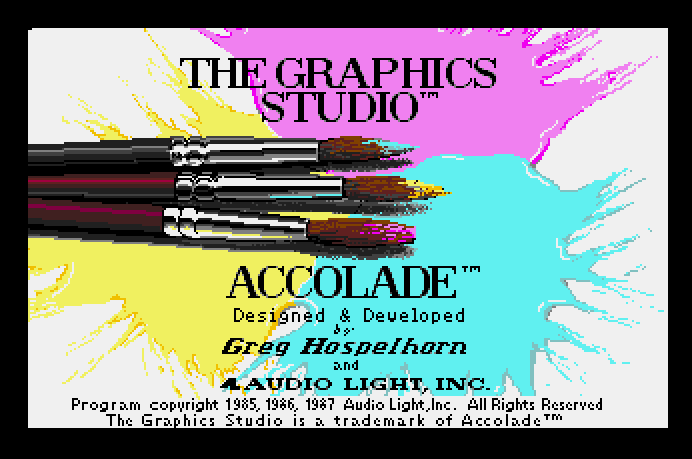
1987 The Graphics Studio for Amiga. Greg Hospelhorn. Audio Light, Inc.
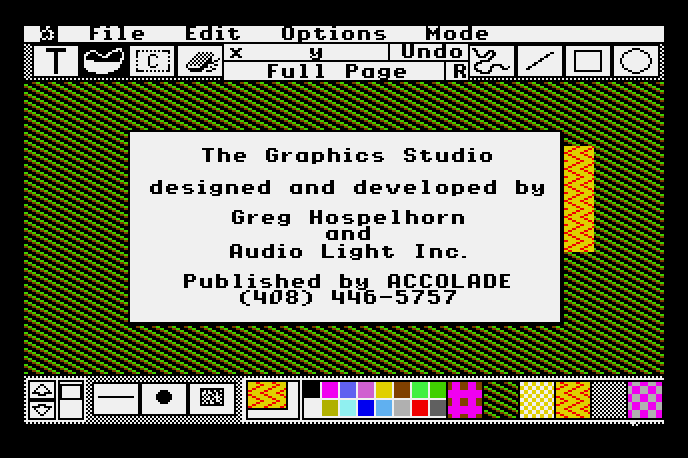
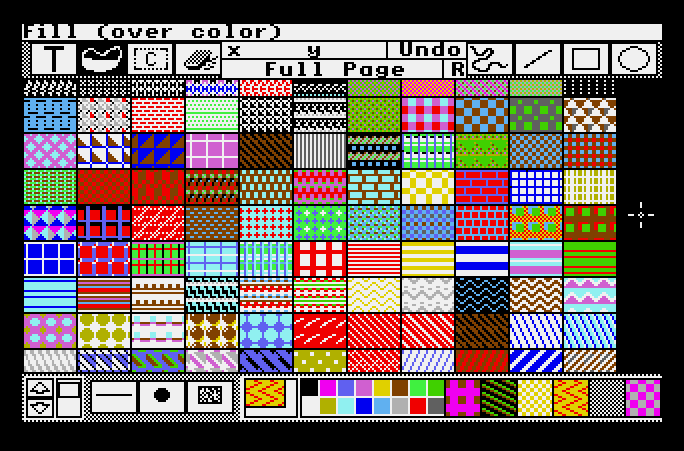
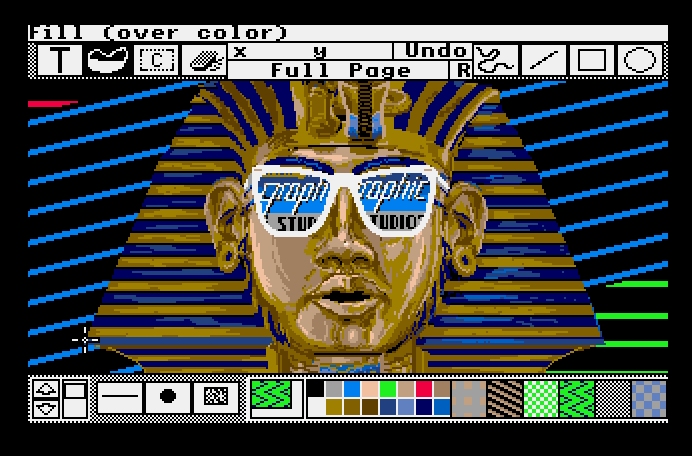
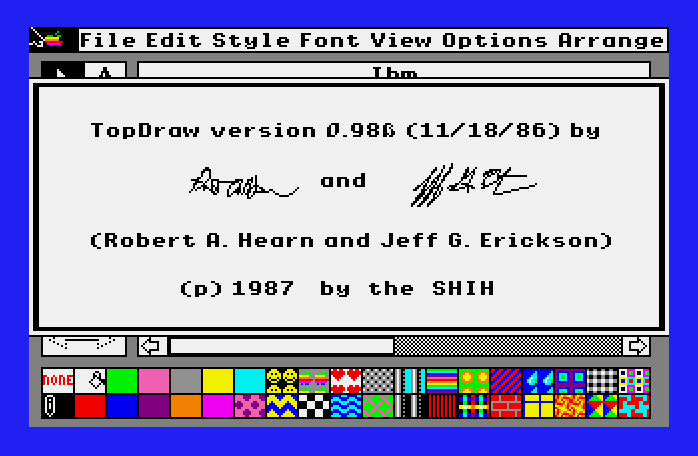
Top Draw / Beagle Draw - (for Apple IIGS) Robert A. Hearn and Jeff G. Erickson - Styleware Inc (bought by Beagle Bros. & became Beagle Draw)

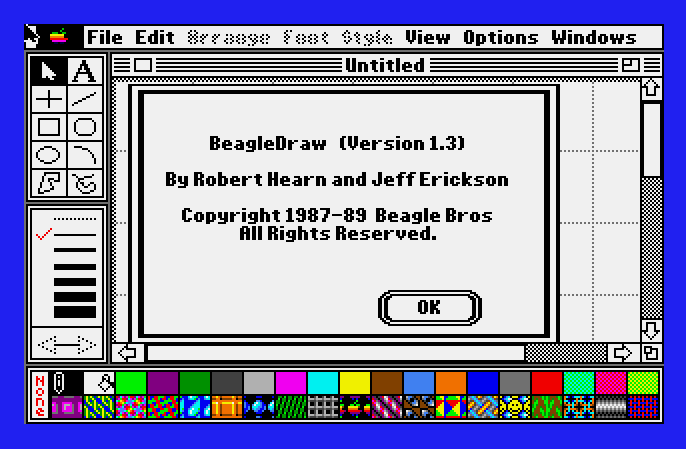
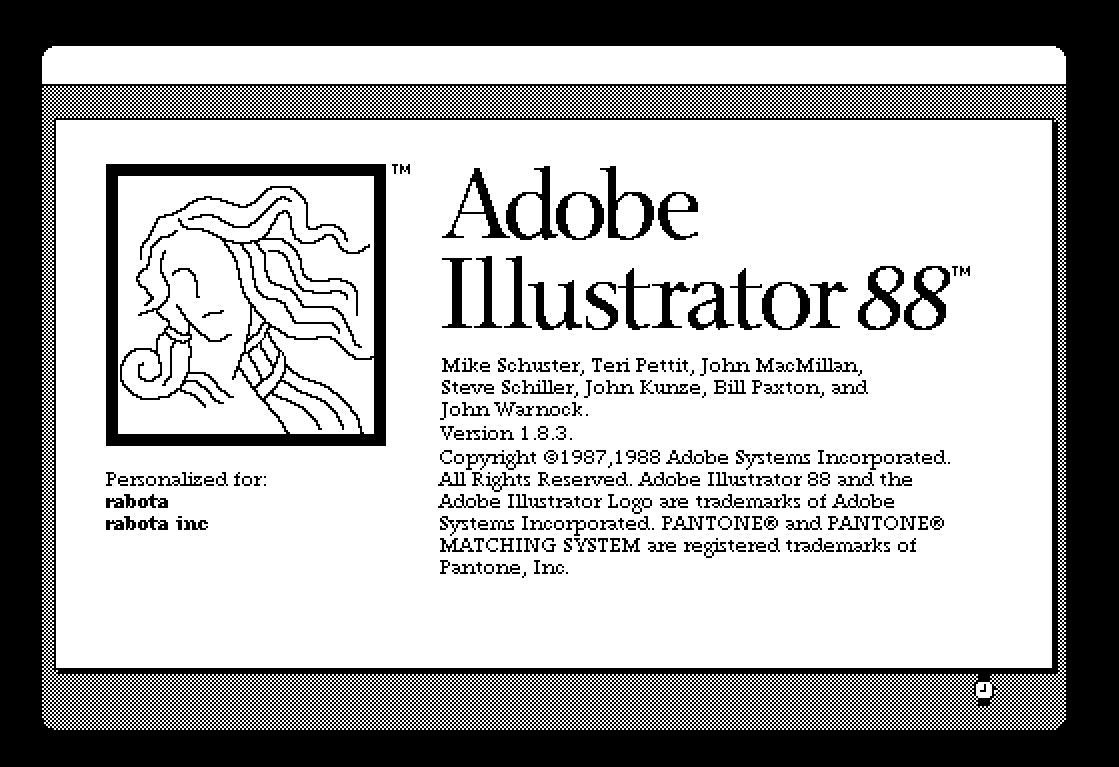
1988 Adobe Illustrator 88. Mike Schuster, Teri Pettit, John Macmillan, Steve Schiller, John Kunze, Bill Paxton and John Warnock. Adobe Systems Inc.
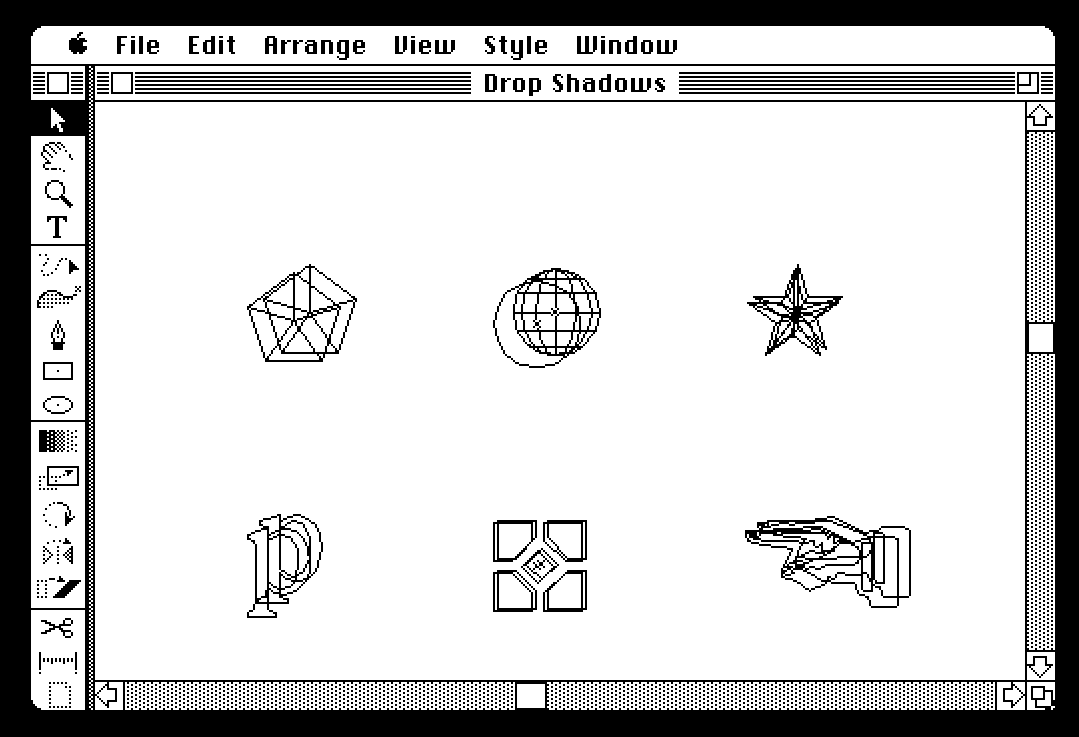


1988 original photoshop icon (before purchased by adobe)
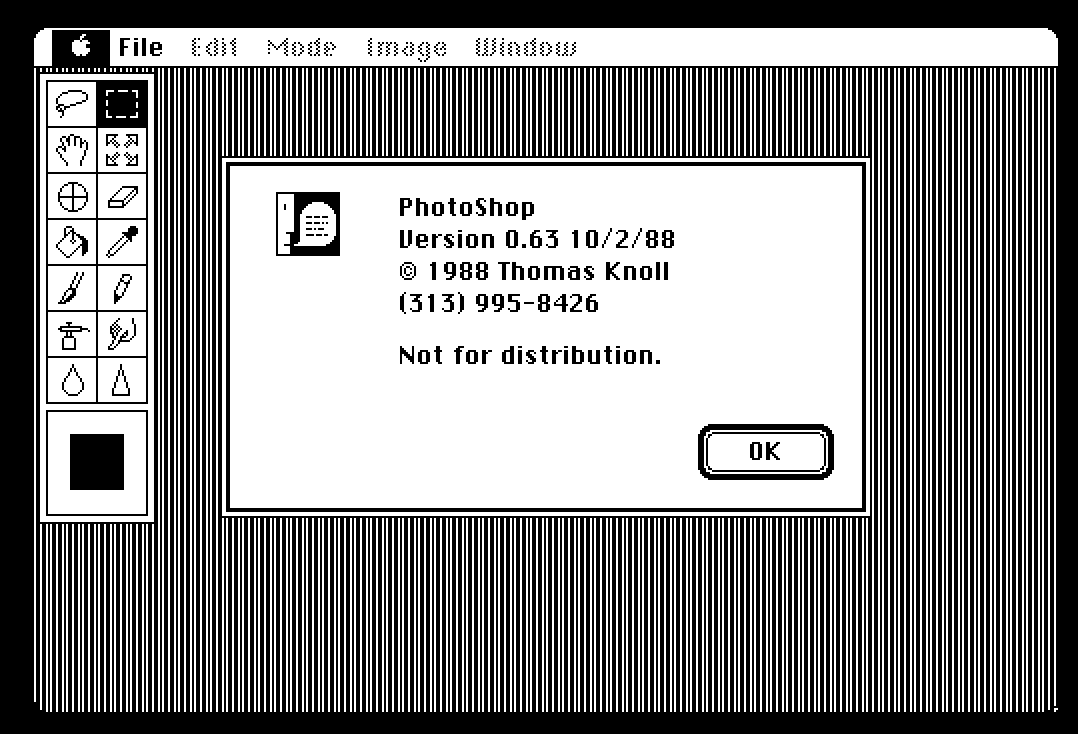
1988 original photoshop version 0.63 by Thomas Knoll
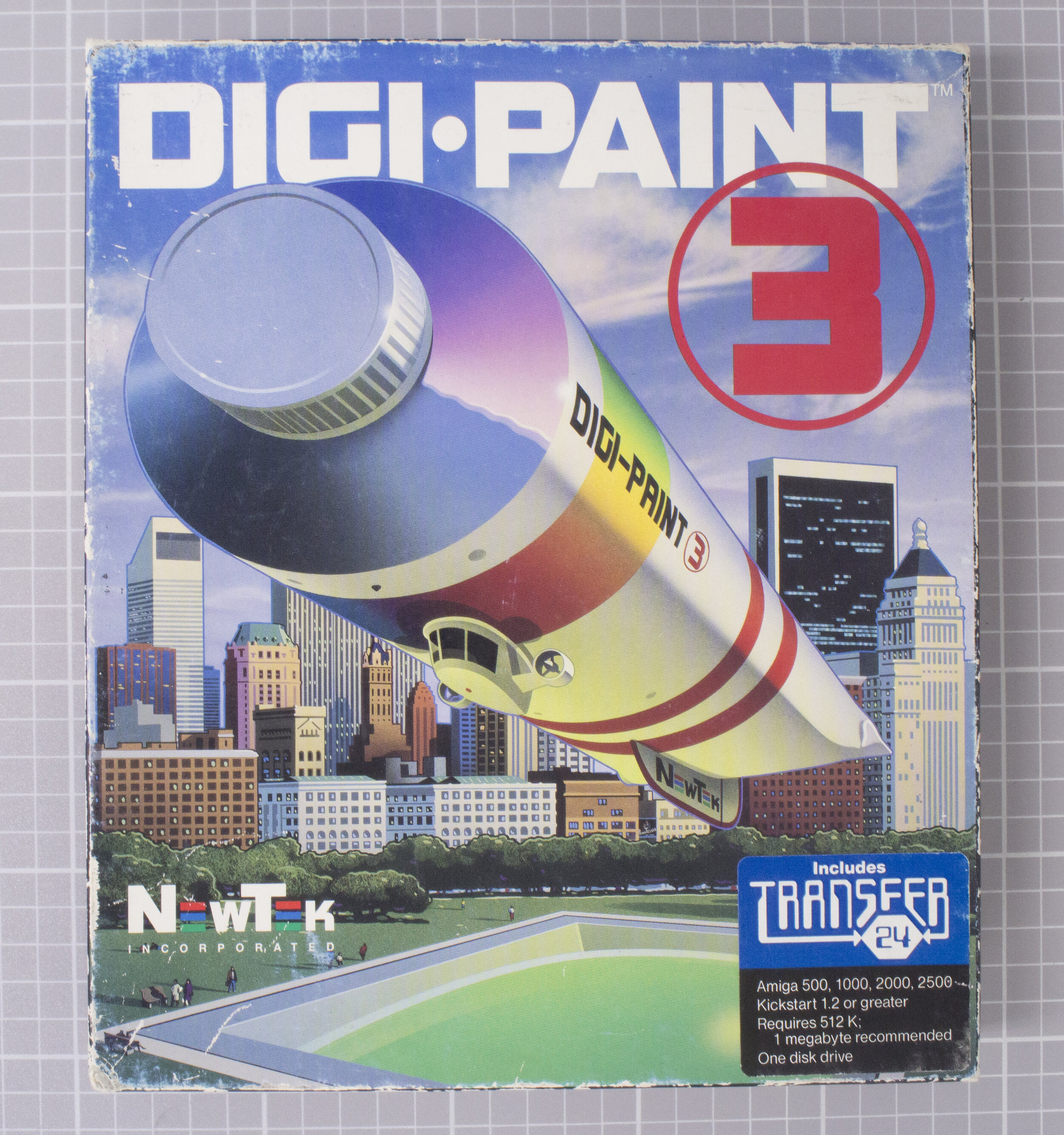
1989 Digipaint 3 for Amiga - Newtek
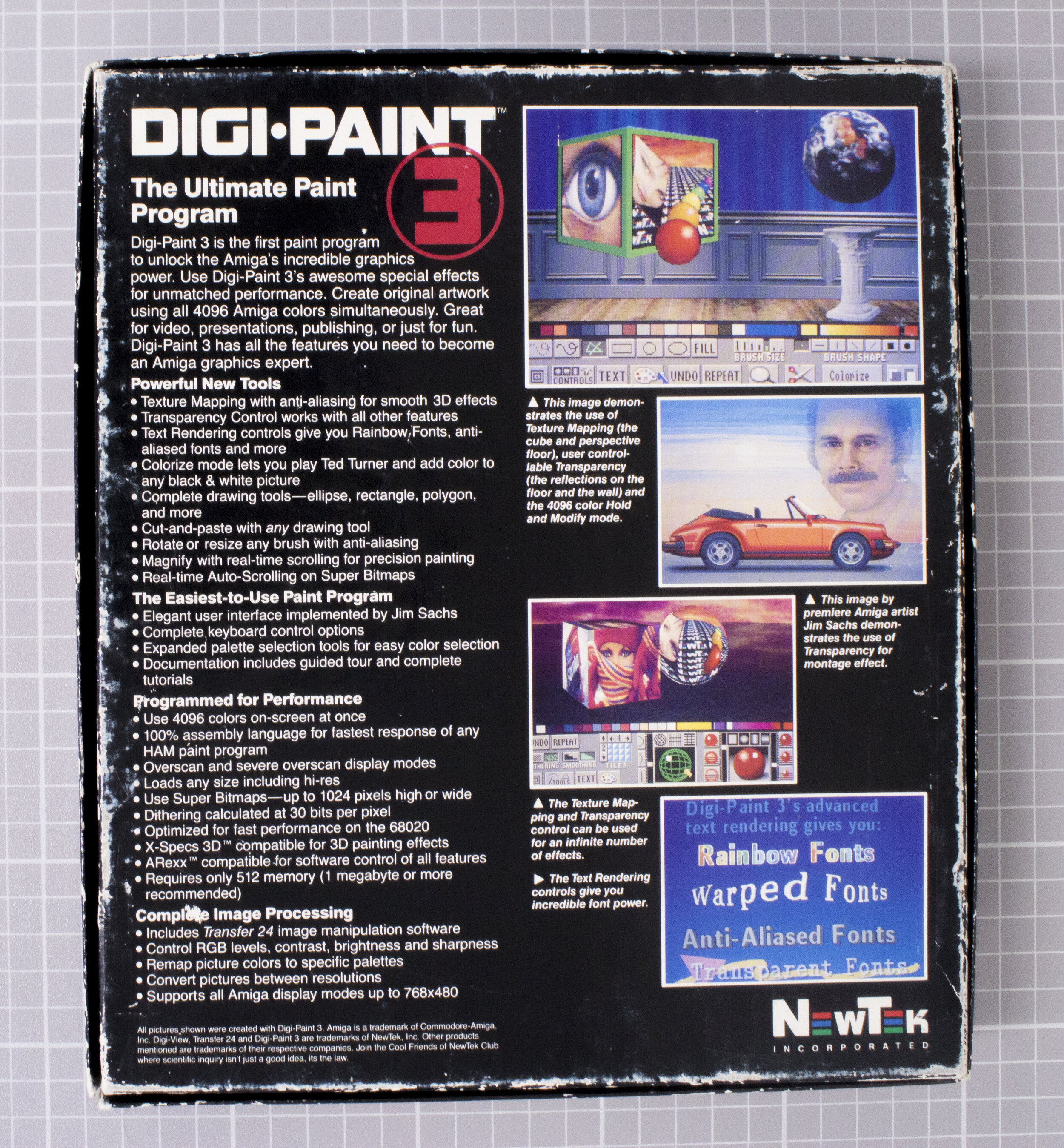
1989 Digipaint 3 for Amiga - Newtek
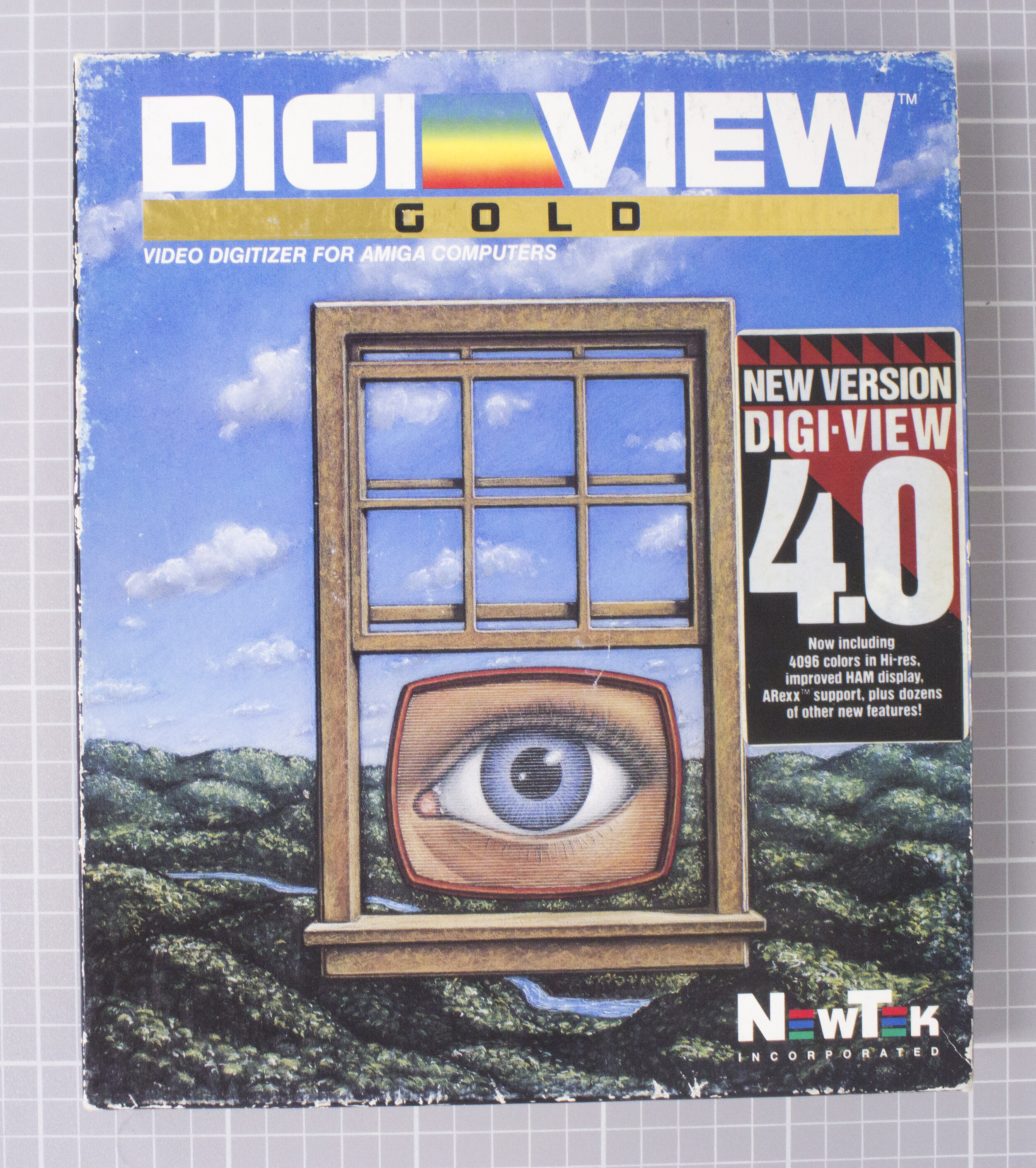
1989 Digiview Digitizer hardware and shoftware for Amiga - Newtek
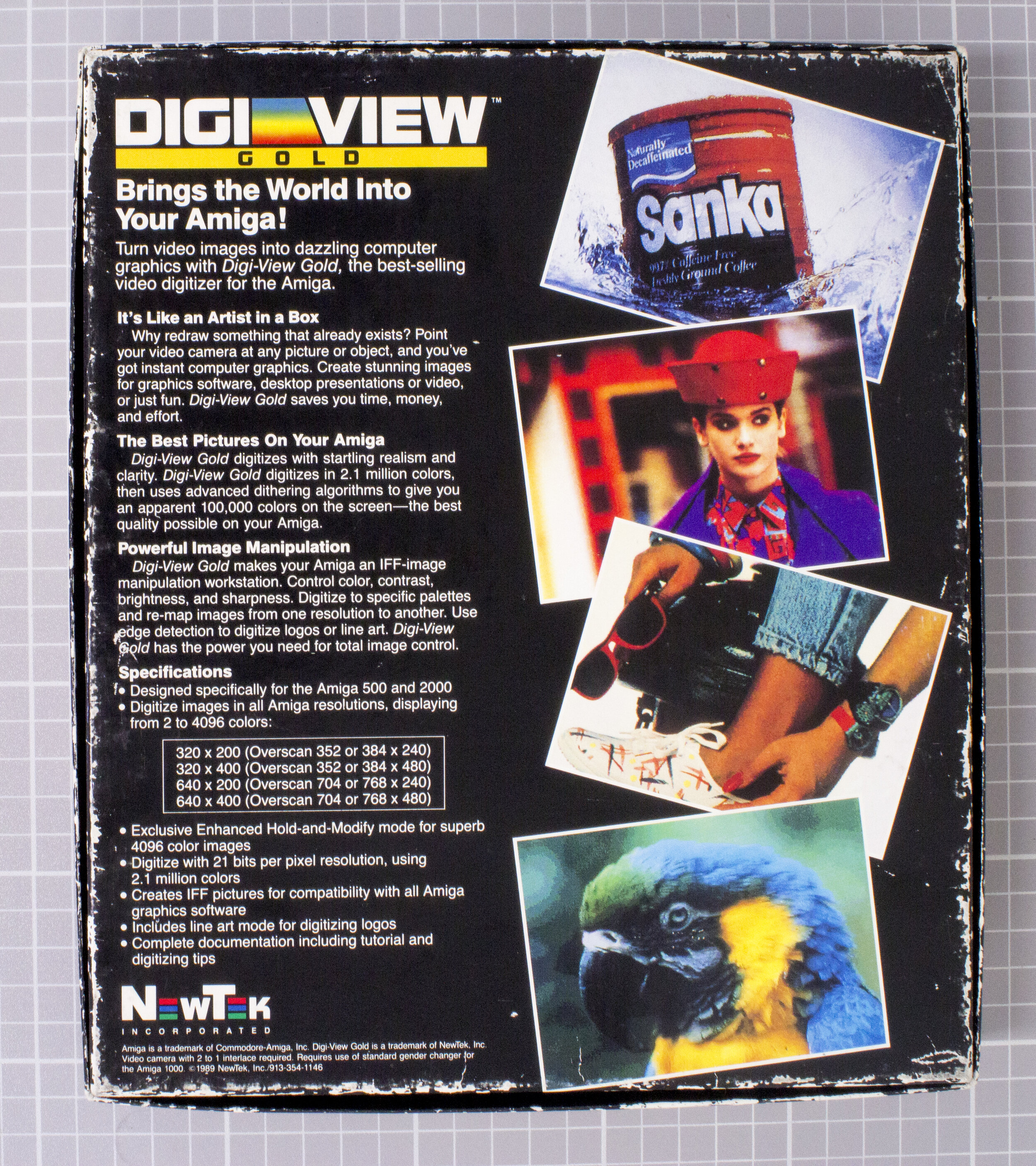
1989 Digiview Digitizer hardware and shoftware for Amiga - Newtek
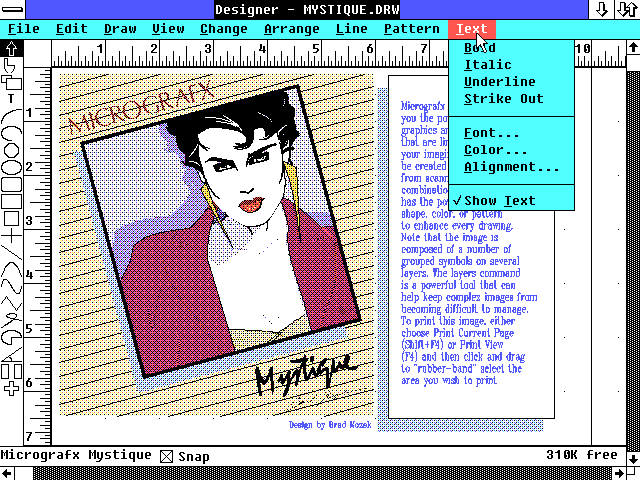
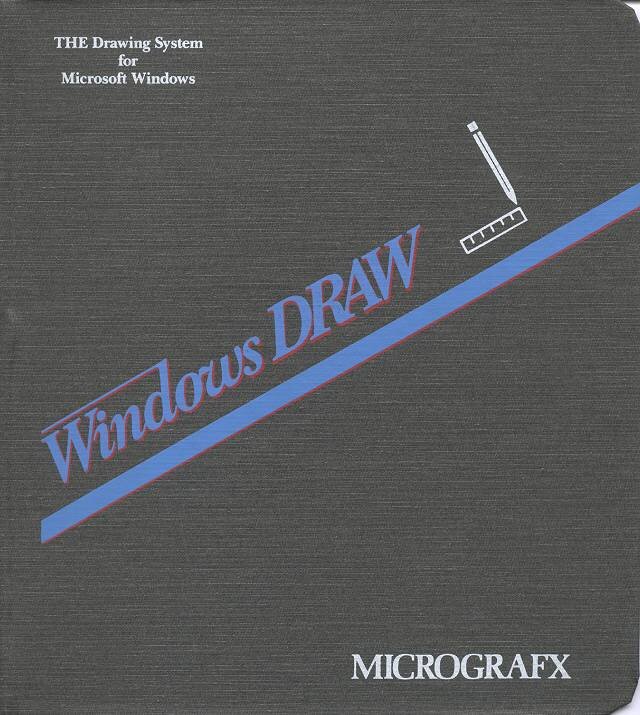
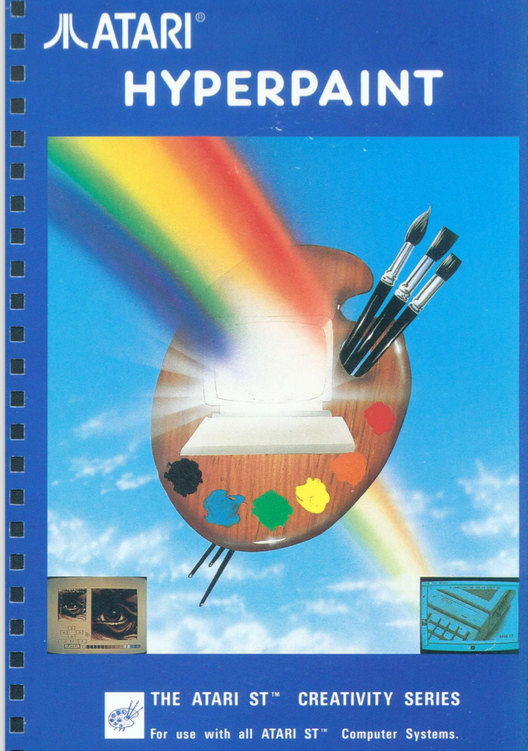
1990 HyperPaint (ATARI ST) - by Koveos, Dimitri - Atari Corp UK (Berkshire, UK)
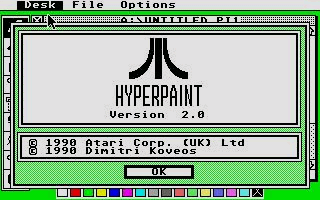
HyperPaint
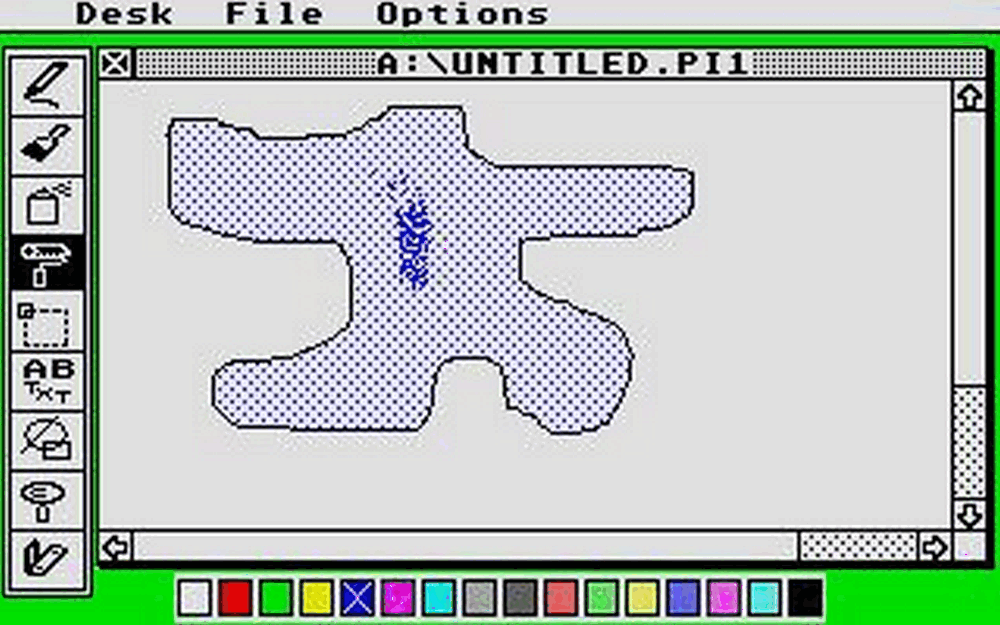
HyperPaint
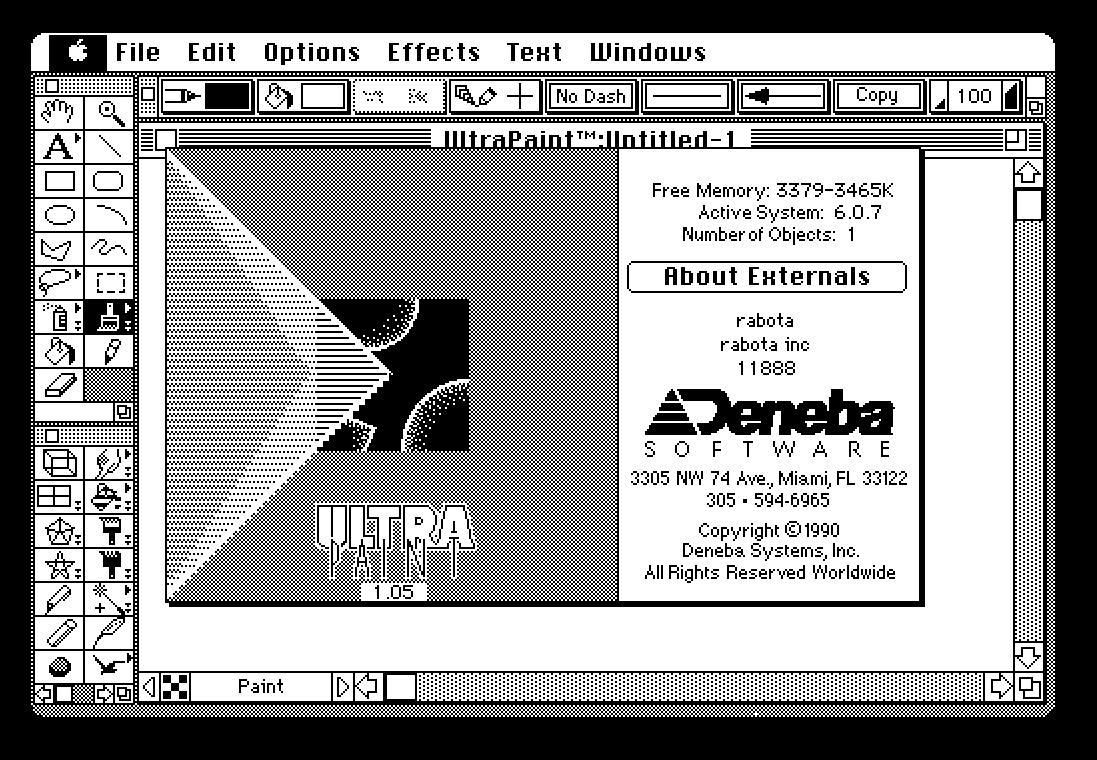
1990 Deneba Ultrapaint. Deneba Systems, Inc. Miami, FL.

Deneba Ultrapaint
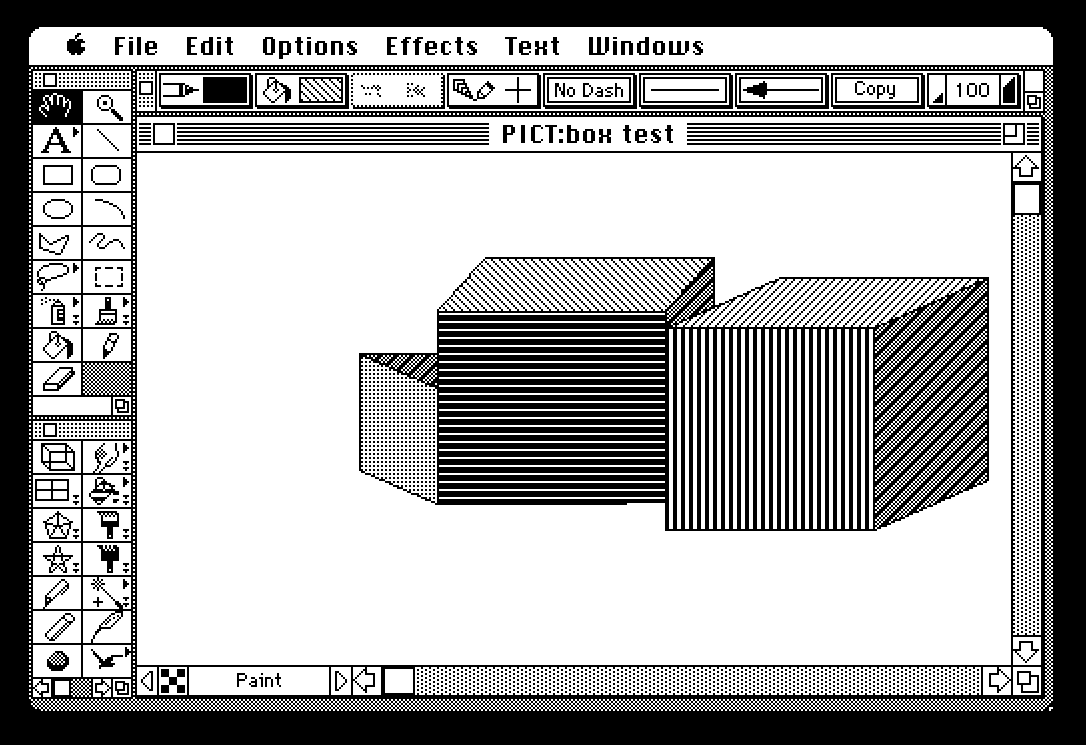
Deneba Ultrapaint

Deneba Ultrapaint
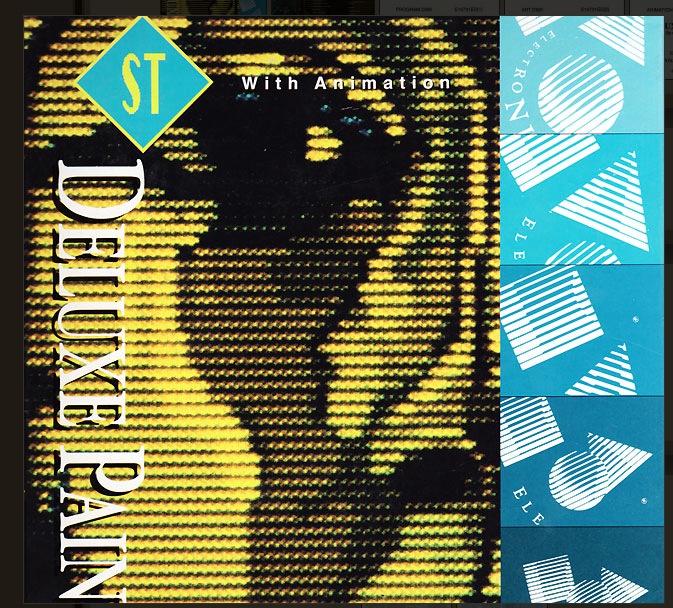
1990 Deluxe Paint ST for Atari ST
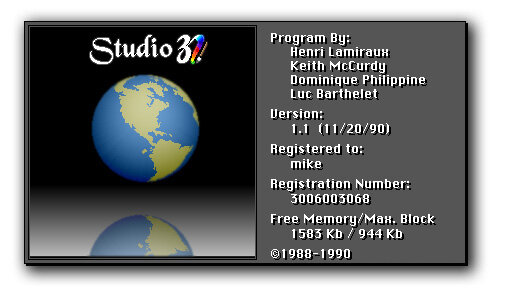
1990 Studio 32 1.1 (Macintosh) - Henri Lamiraux, Keith McCurdy, Dominique Philippine, Luc Barthelet - Electronic Arts

Studio 32
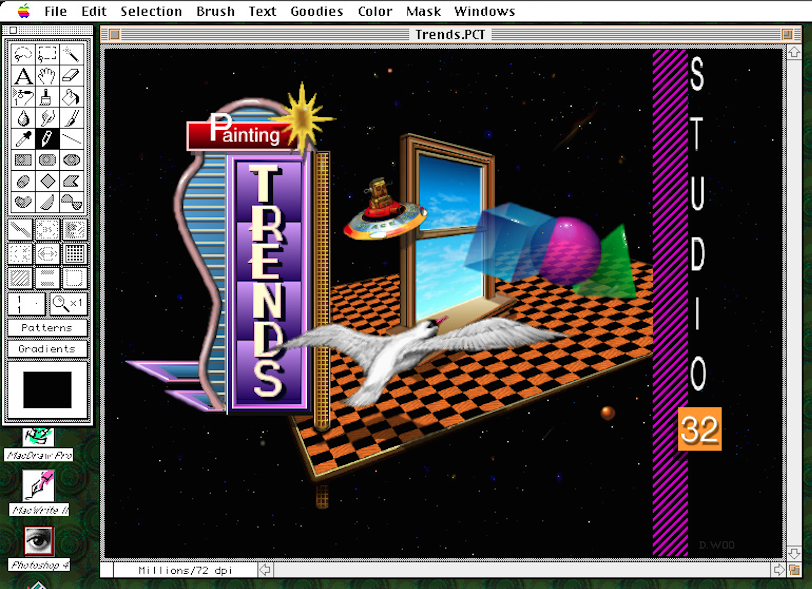
Studio 32
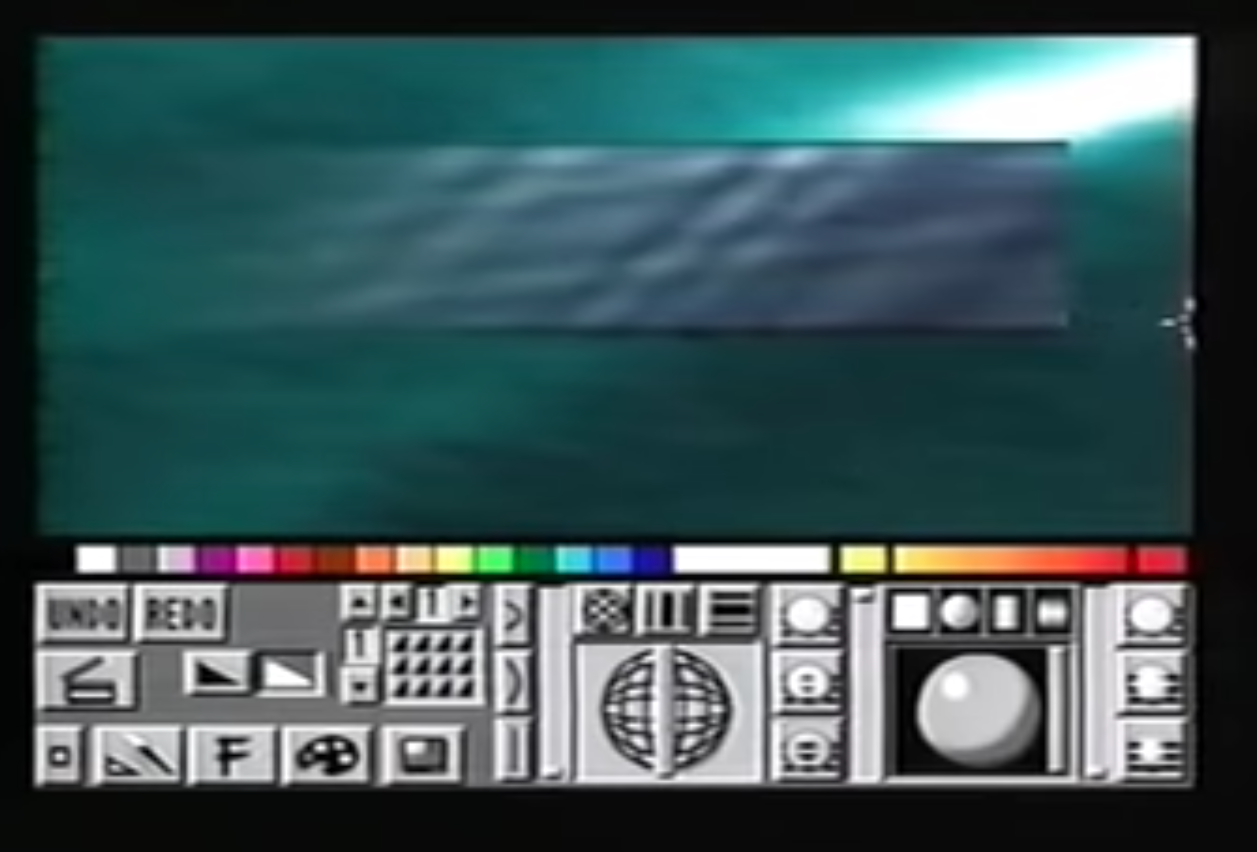
1990 Toaster Paint - feature of Video Toaster for Amiga - NewTek
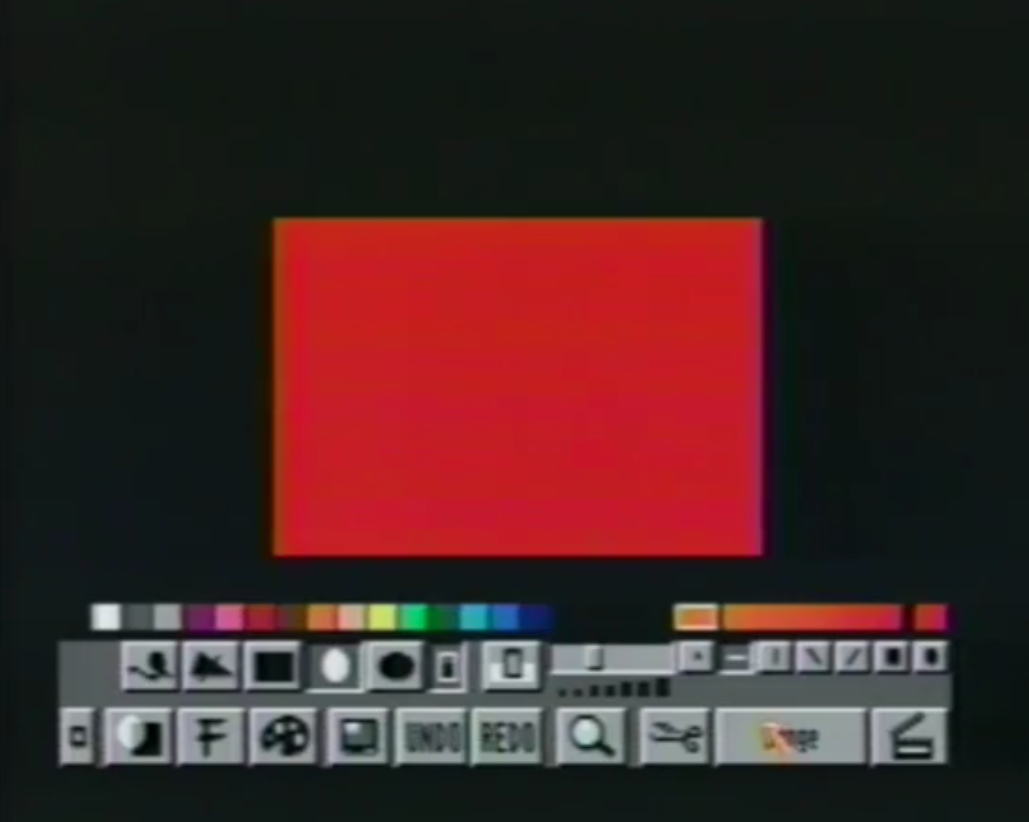
1990 Toaster Paint - feature of Video Toaster for Amiga - NewTek
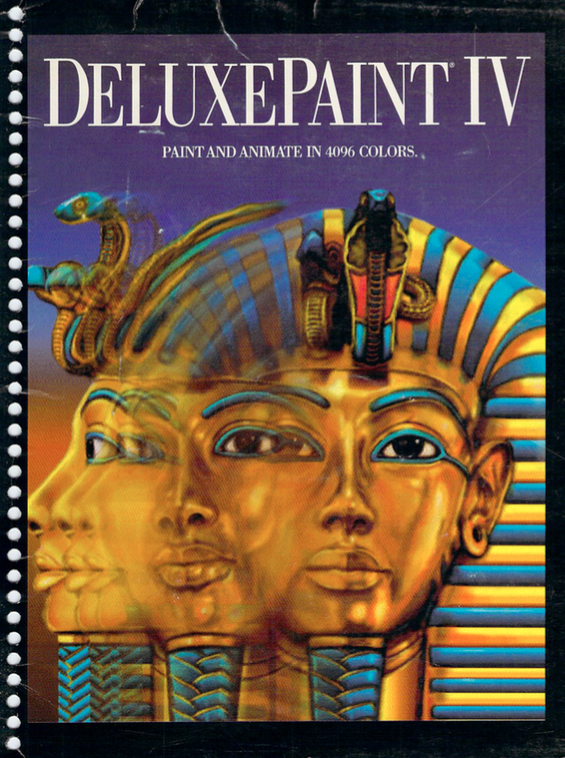
1991 Deluxe Paint IV for Amiga.
Color ComputerEyes for Apple IIGS Digital Vision Inc. (1988)
Documentation of capturing a colour photo using a digital camera hooked up to ComputerEyes Board through a RCA composite video input, and the Computereyes system software version 2.2 on an apple IIGS.
Newtek Digiview 4.0 (1989) Deluxe Paint IV (1991)
This video documents the steps in capturing/digitizing an image (using an Amiga 500) with the Newtek Digiview Gold digitizer hardware and Digiview 4.0 software, and then saving this file to a blank disk. I load this image into Deluxe paint IV, and create a simple animation using the move feature, and the colour range feature to add a simple effect to the hand as it is animated.
Deluxe Paint IV (1991)
This Video highlights the MOVE feature of animating with Deluxe Paint on an Amiga 500, that allows for movements to be set based on X,Y, Z coordinates. It also illustrates the FILL choice that is available through MOVE.
Deluxe Paint IV Tutorial (1991)
Saddleback Graphics in association with Electronic Arts present this Video Guided Tour of DeluxePaint IV's more advanced features. Various techniques are explained including, 3D Text, drop shadows, colour cycle animation and more in this 56 minute video.
Originally available as a VHS Video for Deluxe Paint IV.













